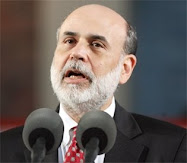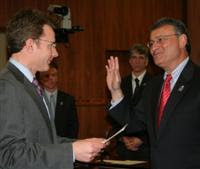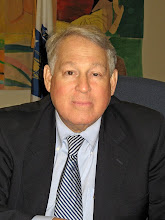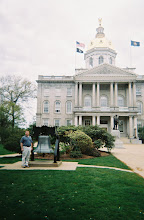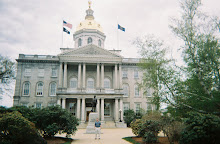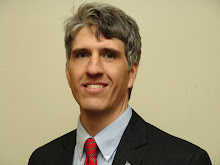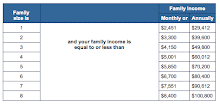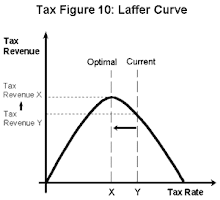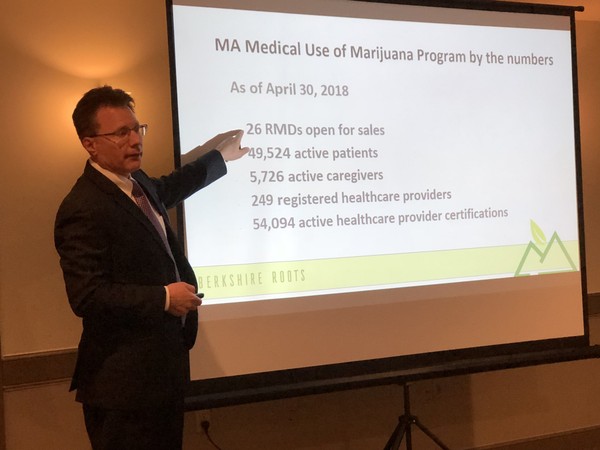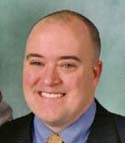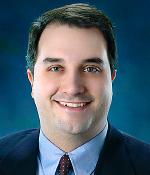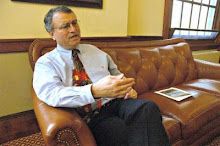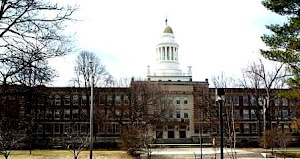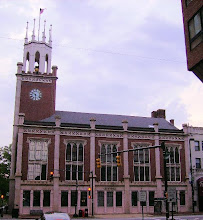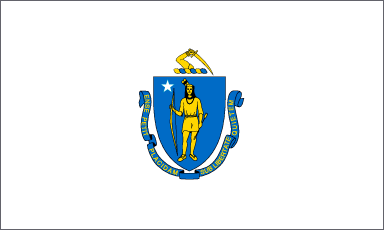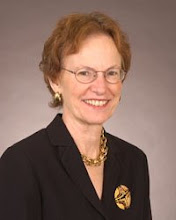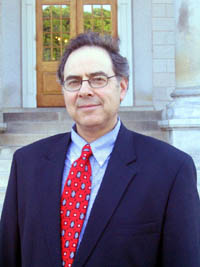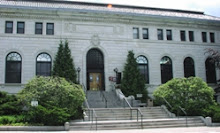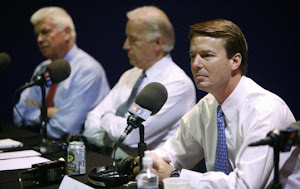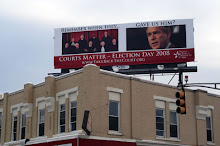Source: "Law School Economics: Ka-Ching!" By David Segal, The N.Y. Times, July 16, 2011.
-
"[There is] $1.2 trillion in student debt currently outstanding....Total student debt has tripled over the last decade."
"Many graduates are still paying high rates on their loans, even though rates in the market have fallen to extraordinarily low levels since the financial crisis. When interest rates fluctuate, banks usually allow holders of home mortgages and other debts to refinance because lowering rates can be profitable for the bank. That doesn't seem to be the case with student loans, though, because of the high risk that the loans won't be repaid."
"Around 11 percent of holders of student debt are at least 90 days delinquent on their repayments (the percentage is lower for holders of credit card debt and home mortgages). While a bank can foreclose on a borrower who defaults on a mortgage, lenders have no collateral when graduates don't pay off their student loans."
"[T]he rate [is] 7.9 percent on a typical federal loan for a graduate student. Rates on private loans can run 10 percent or higher."
Source: Wonkblog: "Why the private sector is so afraid of student debt" By Max Ehrenfreund, The Washington Post, June 13, 2014.
-
savingforcollege.com
-
A $92 billion financial market
-
www.ibrinfo.org
-
www.boston.com/business/personalfinance/gallery/studentloantips/
-
http://topics.nytimes.com/your-money/loans/student-loans/index.html
-
http://topics.nytimes.com/your-money/planning/paying-for-college/index.html
-
www.studentloanborrowerassistance.org
-
www.projectonstudentdebt.org
-
----------
-
Paying off student loans: Introduction
-
www.bankrate.com/bos/green/college/basics5-intro.asp?caret=49
-
----------
"Colleges struggle over aid deals: As wealthy rivals drop loans, many feeling pressure"
By Linda K. Wertheimer, (Boston) Globe Staff, December 31, 2007
A number of top universities, including Harvard, have tantalized parents of college-bound students in recent weeks with their decisions to eliminate loans from financial aid packages and replace them with grants. But the majority of the nation's more than 3,000 colleges do not have the resources to be so generous, say financial aid experts and officials from a variety of schools.
Most of the colleges doing away with loans belong to an exclusive group of roughly three dozen schools with sizable endowments - $35 billion, in Harvard's case. Their shift is increasing pressure on less-affluent colleges to come up with new strategies to sweeten financial aid for a wider group of students, some of whose families have been calling admissions officers asking whether they would be offering no-loan aid deals, too.
"If I worked at a college that had all of the money in the world, and could give plenty of money to the poorest people, and still give money away, I wouldn't have any problem going up the income scale and making it easier for them," said Eileen O'Leary, director of student financial services at Stonehill College in Easton. "Most colleges don't have the endowment of Harvard, Yale, Duke, Princeton, etc."
Yet, even if all colleges could afford to eliminate loans, several admissions and financial aid directors say they would be reluctant to change a long-held tradition of holding students and their families responsible for part of college costs if they can afford to contribute.
"Philosophically, one of the dangers is we've made debt a four-letter word," said Lee Coffin, the dean of admissions at Tufts, which this fall eliminated loans for students from families making less than $40,000 a year and will not extend the offer to higher-income families. "I wonder what it will do to a generation that will go to college without any personal sacrifice. You start taking loans away, and you start saying, 'Here's a free ride.' "
During the past decade, loans became a larger part of financial aid as the cost of college rose sharply. While the national spotlight has been on Harvard since its sweeping announcement on Dec. 10 that it will provide more aid for wealthier families, Princeton University started the trend of loan elimination among elite schools in 2001.
By eliminating loans, Harvard, Princeton, Haverford College, the University of Pennsylvania, and other schools are sending the right message about the need to reduce debt, said David Hawkins, director of public policy and research for the National Association for College Admission Counseling. In the 1960s, a national Higher Education Act created scholarships for the neediest students, and the government emphasized the importance of helping poor students avoid debt.
"We've gone from that to, 'Well, gee, maybe the government can help you get a cheaper loan,' " Hawkins said. "Harvard is trying to say, 'Let's try to put the brakes on a little, and not have our students graduate with so much debt.' "
The standard practice nationally for colleges has been to award a financial aid package that includes direct aid from the school; a federal, need-based loan; and student earnings from a campus work-study job. The suggested loan amount varies, depending on the school and its resources for financial aid.
Harvard, for example, previously required every financial aid recipient to annually contribute a minimum of $3,850, a combination of a $1,000 federal loan and $2,850 in work-study earnings. Other schools say they recommend as much as $4,000 a year in loans.
"Harvard in some ways is taking away the necessity for somebody who probably could afford to borrow that need-based loan," said O'Leary, the former chair of the National Direct Student Loan Coalition, a grass-roots group of financial aid directors. "It's very nice, but is it necessary? Should you be saving that money for people who are destitute?"
Stonehill, with an annual $42,000 cost and limited resources, includes loans in its financial aid package and directs the bulk of its aid to the neediest students.
With a little more than a $1 billion endowment, Boston University is still working to reach as many needy students as it can with grant aid and has no plans to eliminate loans, said Laurie Pohl, BU's vice president for enrollment and student affairs. BU students, who now pay about $48,000 a year for tuition, room, board, and other costs, finish on average with about $24,000 in debt, she said.
"Loans aren't necessarily a bad thing, like everything, in moderation," she said. "It's some investment that they are making in their education."
The Massachusetts Institute of Technology includes loans in financial aid packages and has not made a decision about changes in financial aid for next school year. It has, though, been steadily reducing the amount of money students are expected to contribute, MIT President Susan Hockfield said. About half of MIT's students graduate with loans, and their average debt is $15,000 for the four years, she said.
With a $10 billion endowment, MIT cannot offer as much as Harvard in financial aid, and MIT also has set a priority of spending more money on the rising costs of science and engineering education, she said.
Tufts is not ignoring the middle class, but does not believe it is asking too much of most students to take out a loan, Coffin said. The typical Tufts undergraduate will finish with $20,000 in total debt.
"That's saying to students, 'You're coming to a high-quality college,' " he said.
Patricia Reilly, Tufts' director of financial aid, said that for Tufts and other universities, the main question is whether it is the best use of resources to spread the money out so widely among different income levels. Tufts, she said, will always focus the most on the lowest-income students.
Officials at Harvard and other colleges going the furthest with no-loan offerings said they are not diminishing families' responsibility, but are recognizing that it is getting tougher for middle- and higher-income families to afford the nearly $50,000 annual cost of many colleges.
A decade ago, the typical Harvard student on financial aid owed $16,000 to $17,000 in loans upon graduation. Now, the average debt is $6,700, said William R. Fitzsimmons, Harvard's dean of admissions and financial aid. Aid recipients will still be expected to take on a work-study job, he said.
"No college covers all costs," Fitzsimmons said. "We would agree with the philosophy of shared responsibility. It's very clear when you get into the people who are extremely wealthy, we believe they should pay the full amount."
Haverford College eliminated loans from financial aid packages, beginning with next fall's entering freshmen, and discussed how students still could bear part of the responsibility for college costs, said Jess Lord, the Philadelphia-area college's dean of admissions and financial aid. As a result, Haverford created a Next Generation Fund, a separate endowment, to pay for the no-loan initiative, and decided to ask students to donate to the fund as alumni when they have more financial resources, Lord said. Haverford still expects parents to contribute to the college cost, he said.
"Just taking away loans is not going to make this a free education for anybody, and students will still bear some of the burden for this, even at Harvard," Lord said.
-
Linda Wertheimer can be reached at wertheimer@globe.com.
----------
THE BOSTON GLOBE: Op-Ed: STEVEN ROY GOODMAN
"The real story on Harvard's generosity"
By Steven Roy Goodman, December 31, 2007
A RELATIVE called the other night to make sure I had heard the good news: Harvard announced that it was now going to be more accessible to the middle class.
I smiled - just as I did when I first read the Harvard pronouncement. Sure, Harvard was now going to spend a little more money to make sure that admitted students would be burdened with slightly lower tuition bills. The underlying story, of course, is the university's effort to make sure that Congress doesn't mandate that universities spend 5 percent of their endowment funds every year, as private foundations are required to do.
After the 5 percent issue was raised a few weeks ago before the Senate Finance Committee, alarm bells sounded throughout the academic world. Senator Chuck Grassley, the top Republican on the committee, said that Congress should consider requiring schools to spend a minimum amount of what their endowments earn. Failure to do so would bring with it serious consequences: the loss of tax-exempt status on endowment earnings. Hardly Senator Grassley's soul mate, Senator Hillary Clinton on the campaign trail challenged the wealthiest schools in the United States to "devote substantially more of their endowment to recruiting more low-income and minority students."
Could Harvard's announcement be a preemptive move? The numbers tell the real story. Harvard estimates that it may spend an additional $22 million to assist families earning between $60,000 and $180,000 a year. Under the plan, families with incomes of $120,000 to $180,000 will be asked to kick in 10 percent of their income toward tuition. Given that the yearly cost of Harvard is $45,620, some families will still be paying almost $20,000 per year. Even if the initiative does total $22 million, compare this with the figure Harvard could be required to pay if Congress mandated that Harvard and other universities spend 5 percent of their endowment income.
Five percent of $35 billion is $1.75 billion. Harvard's Alumni Affairs and Development Office reported that the university spent 4.3 percent of the endowment in fiscal year 2006. The difference between 4.3 percent and 5 percent might not seem significant at first glance, but the savings to Harvard was $245 million in one year alone.
Quite a trick. Spend at best a tiny fraction of the endowment, while reducing growing political pressure in Washington and around the country that could potentially cost the university more than 10 times the additional amount of financial aid.
All this talk about the announcement helps Harvard and other universities sidestep the real questions. Why does an institution of higher learning have $35 billion in its back pocket anyway? Why has it become customary for universities to spend only a small fraction of their interest income - and not even the endowment funds themselves - for daily operations? Why do American taxpayers continue to subsidize schools that increasingly operate like for-profit companies - and less like tax-exempt educational foundations that are charged with educating the next generation?
Harvard is not alone. A few months ago, I received a fascinating solicitation letter from another well-known school. As an educational consultant, I get mail from close to 1,000 institutions every year - all of which hope that I will share positive attributes of that college with my students and families. The pitch was eye-opening: Yes, our endowment has doubled in the past 10 years, but we really need your money right now or else we might have no choice but to dip into the $1 billion endowment. So, while bragging about the size of its endowment, the school was simultaneously crying poverty.
Concern about rising college costs has become an issue in the presidential race. Perhaps the 2008 campaign season can help us start a national dialogue about whether or not universities should play by the same rules as other nonprofit entities. It is natural that schools would want to squirrel away money for a rainy day. However, the scope of this squirreling (Harvard's endowment grew by $5.7 billion last year alone) - and the arms race that it encourages - is such that it might be time for our elected officials to rein in financial benefits for those institutions that can't manage to spend 5 percent of their tax-exempt wealth.
-
Steven Roy Goodman is a Washington-based educational consultant and co-author of "College Admissions Together: It Takes a Family."
----------
-
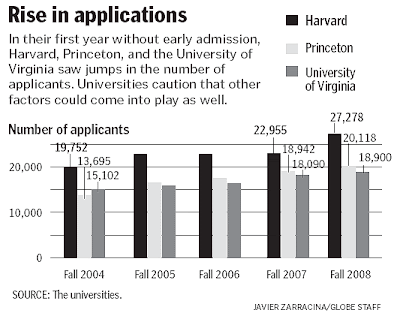
-
"Applicants on rise after halt to early admissions: Harvard, Virginia, Princeton results"
By Linda K. Wertheimer, (Boston) Globe Staff, January 17, 2008
In their first year without early admissions, Harvard, Princeton, and the University of Virginia received a record number of applications, a sign that their push to open up the competition for spots to more students may be working, the schools' admissions officials said.
The three universities hope that eliminating early admissions will create a fairer, less stressful process and a more diverse applicant pool. Early applicants tend to be more affluent than students who apply at the regular deadlines.
Harvard had the most dramatic spike, which it attributed in part to its announcement last month that it was greatly boosting financial aid for students from middle- and higher-income families in the 2008-09 school year. Harvard said yesterday it received 27,278 applications by Jan. 1, a 19 percent increase over last year. Princeton, with 20,118 applicants, had a 6.2 percent increase, and UVA, with 18,900 applicants, reported an increase of 4.5 percent.
William R. Fitzsimmons, Harvard's dean of admissions and financial aid, said he hoped the numbers reflect that counselors, parents, and students felt less pressure to rush to apply.
"Frankly, I think we emboldened a bunch of people to step back a bit," Fitzsimmons said. "It's pretty clear, no matter how you cut it, that this first year without early admissions has been a resounding success."
In the fall of 2006, with Harvard acting first, the three schools announced they were scrapping decades-old policies of allowing students to apply by November and learn whether they had been accepted by Dec. 15, a few weeks before the January deadline for regular admissions. The switch to a single Jan. 1 deadline for all admissions went into effect with the applicants for the fall of 2008.
In the past, Harvard, Princeton, and Virginia drew between 30 percent and 50 percent of their freshmen classes from the early applicant pool. Early admission is still used by more than 300 schools, and is popular among students who had a top pick and wanted an answer as early as possible. But it has been unsettling to others who preferred more time to consider multiple schools.
The three schools' policies varied, with Princeton and Virginia requiring students to commit to them as soon as they were accepted, and Harvard giving students the option to say no.
The numbers of students who applied early varied at the three schools, with Harvard regularly getting 4,000 early applicants - about a fifth of its overall applicant pool.
In November, the three schools went on joint recruiting trips to educate students and parents about the elimination of early decision, a venture that probably helped boost application numbers, Fitzsimmons said.
"The message was that we're out here in November when we normally would be doing early admission to tell you we have terrific institutions, and we haven't given away a huge chunk of our freshman class," he said.
Still, Fitzsimmons and admissions officers at Princeton and Virginia cautioned that they could not reach final conclusions about the effect of eliminating early admissions. The universities cannot analyze the economic diversity of their applicants until after February when students apply for financial aid, said Janet Lavin Rappelye, Princeton's dean of admission. In addition, she said, schools will need more than one year of data to draw meaningful conclusions.
"In three to five years, we'll be able to look back to see whether this works for us," Rappelye said. "The question will be, 'Are we admitting a more diverse pool of applicants, and are they coming?' "
Also, it is difficult to know all the factors that influenced the increase in applications, particularly at Harvard, which has been phasing in changes to financial aid since 2004, Fitzsimmons said. Harvard's latest announcement came in mid-December, when most students already had sent in their applications.
Nationally, college applications have been on the rise because of a bulge in the population of high school graduates. The number of graduates climbed from a low of 2.5 million in 1995-96 to an estimated 3.2 million by 2006-07, and is expected to peak at 3.3 million by the end of next school year, according to the National Association for College Admission Counseling.
Students also have been applying to a greater number of schools at once, said David Hawkins, the association's director of public policy and research.
"It's very difficult to pinpoint any single interpretation of these numbers," Hawkins said. "Follow the money is always the rule that I go by. Early decision, I would guess, would take a backseat to the [Harvard] financial aid announcement."
But Hawkins said Harvard's 19 percent increase in applications defies predictions from many college officials that Harvard, Princeton, and Virginia would see drops in total application numbers because savvy applicants saw early decision as the best strategy to get into a school.
Yale and MIT, which have early admissions, had higher numbers of early applicants this year. Officials at the schools said it could be because of the changes at the other schools. Yet, Yale expects its overall applicant pool to remain about the same size, and the Massachusetts Institute of Technology had a 4 percent increase in overall applicants.
Yale has no plans to dump early admissions partly because it saw an increase in the early applicants' diversity about five years ago when it made changes, said Jeffrey Brenzel, the school's dean of undergraduate admissions. Yale used to require early applicants to commit to the university early if they were accepted; now, Yale lets the applicants wait until the regular spring acceptance deadline.
With its rise in applications, Harvard will become more competitive this year, Fitzsimmons said. It will still accept 2,100 freshmen - 7.7 percent of this year's applicants, compared with 9.1 percent last year.
Fitzsimmons said he believes Harvard is reducing stress for some students, based on letters from high school counselors and others saying they appreciate having more time to apply.
But others say it remains to be seen whether eliminating early admissions at some schools will reduce the stress on students.
At Milton Academy, the usual 60 percent to 65 percent of the roughly 190 seniors applied early, and they just chose different schools than in the past, said Rod Skinner, director of college counseling.
"It might have been for some kids that there was less pressure. They could wait till the regular round," said Skinner, "But for other kids, they wanted to get it in early anyway so they could have something by December."
-
Linda Wertheimer can be reached at wertheimer@globe.com.
----------
"Dartmouth revamps financial aid"
January 22, 2008
HANOVER, N.H.—Dartmouth College announced Tuesday that beginning in the fall, undergraduates from families with incomes below $75,000 will receive free tuition.
more stories like thisDartmouth also will replace loans with scholarships and extend need-blind admissions to all international students.
The steps are similar to ones taken recently by Harvard, Yale and other elite schools to make college more affordable for middle-class families.
"The college has long been committed to helping superbly qualified students attend Dartmouth, regardless of their financial means, and financial aid has been a personal priority of mine for many years," college president James Wright said. "Building on our more than threefold increase in financial aid since 1998, I am pleased that we could make this further enhancement to our financial aid program as we seek to keep Dartmouth affordable and to enroll the most talented students from around the world."
He said many students who will get free tuition also will get scholarships for costs such as room and board, books and other expenses.
Tuition this year is $34,965; room, board and mandatory fees add $10,518, for a grand total of $45,483.
Dartmouth trustees approved the changes at a special meeting Jan. 16.
The school cited census data indicating that 70 percent of U.S. households earn less than $75,000, and median family income is $46,326.
It said it already enrolls one of the most economically diverse student bodies in the Ivy League, and the aid expansion should enable it to continue doing so.
Already, 13 percent of Dartmouth students are the first members of their families to attend college and 14 percent receive federal Pell grants, which are for students from low-income families.
For citizens or permanent residents of the U.S., Mexico and Canada, the school already makes admissions decisions without knowing the student or family's ability to pay. The school commits to meeting all of each admitted student's demonstrated financial need through a combination of grants and loans.
Effective immediately, Dartmouth will offer scholarships worth just under $3,000 to let students who receive financial aid take advantage of research or internship opportunities in their junior year.
Financial aid costs Dartmouth $61 million a year, up from $24.5 million in 1998.
Dartmouth said the expansion will cost an additional $10 million a year when it is in full swing. The money will come from reallocating spending and a bigger annual draw approved last year -- 6 percent instead of 4.7 percent -- from Dartmouth's endowment of about $3.8 billion.
Dartmouth is in the midst of a fundraising campaign to add $1.3 billion to the endowment, including $150 million for financial aid. The campaign passed the $1 billion mark last month.
-
On the Net: www.dartmouth.edu
----------
http://www.boston.com/bostonglobe/editorial_opinion/letters/articles/2008/01/26/school_funding_system_needs_reform?mode=PF
http://www.boston.com/news/local/articles/2008/01/23/school_districts_strained_as_state_funds_fall_short?mode=PF
http://www.boston.com/bostonglobe/editorial_opinion/letters/articles/2008/01/26/school_funding_system_needs_reform/
----------
"Sector Snap: Student lenders fall on margin, funding concern"
(Via The Boston Globe Online,) April 16, 2008
NEW YORK --Shares of student lenders were mostly down Wednesday after one was downgraded by an analyst and another said it would stop lending at some schools.
The College Cost Reduction Act, passed into law in October, cut subsidies to student lenders and forced them to shoulder a greater share of the risk of students defaulting. Adding to their challenges, lower demand for asset-backed debt due to investors' dulled appetite for risk has made raising money to funds loans more expensive.
"The combination of reduced government subsidies and elevated funding costs basically wipes out the margin on new (Federal Family Education Loan Program) loans," Morgan Stanley analyst Kenneth Posner wrote in a note to investors cutting his rating on SLM Corp., also known as Sallie Mae, to "Underweight" from "Equal Weight."
SLM can retract borrower benefits such as origination fee waivers to make up some of the lost profit, but "it has no other ability to pass higher funding costs on to consumers since pricing is fixed by the government," Posner wrote.
SLM shares fell $1.27, or 7.3 percent to $16.17 in afternoon trading.
Student Loan Corp. shares also fell in early trading, and then rebounded. The Citigroup Inc. subsidiary said starting May 1, it will stop issuing new loans to students at schools were profits have been "unsatisfactory," and would stop issuing federal consolidation loans. The company said it expects the changes to be temporary.
Student Loan Corp shares added 63 cents to $105, but fell as low as $103.51 earlier in the session.
Other student lenders and related companies also declined. First Marblehead Corp. slipped 18 cents, or 4.4 percent, to $3.92. Nelnet Inc. shares fell 10 cents to $11.50.
----------
INNOVATION ECONOMY
"Student loan confusion opens market niche"
By Scott Kirsner, (via Boston Globe Online), April 20, 2008
Chaos and confusion can create great conditions for a start-up. Or they can kill it.
That's what makes entrepreneurship so much fun.
As summer approaches, millions of students and parents will begin hunting for the loans that will help cover their college tuition bills. What they'll likely find is less choice, since more than 50 lenders have ducked out of the market for federally backed student loans in recent months. And issuers of private loans are expected to be more stringent on credit scores, while ratcheting up interest rates.
That may influence parents and students to spend more time shopping for loans. And that situation, which is part of the global credit drought, could prove to be a cool drink of water for companies trying to build businesses around connecting students with money for their education.
"As a start-up, you either have to figure out how to change the world, or wait for things to happen organically," says Kevin Walker, cofounder and chief executive of Newton-based Simple Tuition Inc., an online service that helps students compare various loan options. The growing challenge of piecing together college financing, Walker believes, could help accelerate that organic change.
In 2005, when Walker was laying the groundwork for his company, the idea of parents or students doing much comparison shopping - or of schools encouraging it - was not particularly welcomed.
"Families would simply go through the school's financial aid office," says Walker. "We'd explain what we were doing, and we were told, 'That's not the way things work.' "
Lenders especially didn't want their loans to be easily comparable - as companies like LendingTree had done with home mortgages and car loans. "That would put them in a whole new world of competition," Walker says.
But a scandal last year made colleges more receptive to pointing students and parents to Simple Tuition's site. At schools like Columbia University and Johns Hopkins, financial aid officials were found to be trading stock or receiving consulting fees from the schools' "preferred lenders," and some loan companies were dangling bribes to win designation as a school's most-favored lender.
Since then, Walker says, financial aid offices at places like Brown, Stanford, and Harvard Business School have been more willing to create links to Simple Tuition so that students can evaluate lots of options, not just those on a school's in-house list.
Walker says that media reports this spring about the cloudy outlook for student loans also have helped his company. The site had about 600,000 users last year, and is on track to hit about 2 million users in 2008, Walker says.
"Students and parents are more and more aware that they ought to be doing their own research, and that takes pressure off our need to market," he says.
But one challenge for Simple Tuition is that some of the lenders with which it works - that pay a fee for every prospective customer the site refers to them - have vanished. Last year, the site had 55 of these "partner lenders," and this year it has 31 - though Walker says many of those that have stopped working with the company were loan consolidators that didn't supply much revenue.
Another challenge is that the lenders trying to decrease the amount of student lending they do are likely reducing their marketing budgets. Walker says he has watched the prices that student lenders pay to Google for each click on an ad plummet in the past year. He claims his ad prices haven't been affected as severely. The company has raised $12 million in venture capital so far, much of it from the local firms IDG Ventures and Atlas Venture, and Walker hopes to raise a third round later in 2008.
Planning for a June launch is another start-up, College Loan Market LLC, based in North Reading. That site will put a student's loan applications out to bid to a group of lenders, which should produce a more customized loan offer than Simple Tuition can. The site will also help students solicit loan offers without damaging their credit scores - a common side effect of filling out multiple loan applications.
Getting lenders' attention in the midst of the current turbulence has been tough, admits College Loan Market cofounder Marc Stein. He says the goal is to have at least five lenders bidding on applications. Two are already committed to participate, and Stein says that "seven others are at various stages of contract negotiations."
And while news stories about student loans make students more inclined to shop around, Stein says they've given some prospective investors in his company cold feet. "People who aren't inside the student loan business read in the Wall Street Journal that the business is crashing and burning," he says. "It has made our financing round much more difficult."
The company is looking to raise $1.5 million, but has raised just a sliver of that so far.
So-called peer-to-peer lending companies are also sailing into the student loan fray. Waltham-based Virgin Money (part of Richard Branson's empire) offers to formalize loans between students and their family members for $299. Fynanz Inc., a younger New York start-up, recently began doing the same thing in Massachusetts, though Fynanz allows strangers (perhaps alumni of a school) to make loans to students and earn interest - anywhere from 6 to 10 percent, depending on the borrower's credit score.
But online peer-to-peer lending is still new, and Fynanz has completed one loan since its launch in March. "We don't expect this to be mainstream anytime soon, but I do expect some of the smarter, more involved students to see this as an option," says chief executive Chirag Chaman, an alumnus of Worcester's Clark University.
"It could help a small number of students, but I don't think it's going to solve a national credit crunch," Tony Erwin says of peer-to-peer lending. Erwin is Northeastern University's director of financial aid services. "It's a fine idea, but it's not the fix," he adds.
As long as students and parents are searching for a fix, that creates openings for start-ups.
"It's a really disruptive time in the market," says Stein. "But I really view chaos in a marketplace as a great opportunity."
-
Innovation Economy is a weekly column focusing on entrepreneurship, technology, and venture capital in New England. Scott Kirsner can be reached at kirsner@pobox.com.
-
www.boston.com/business/personalfinance/articles/2008/04/20/student_loan_confusion_opens_market_niche/
-
----------
"Higher education, at an affordable cost"
The Boston Globe, Letters, April 22, 2008
IT WAS with some amusement that I read about the "painful" reality of choosing UMass-Amherst over New York University because of NYU's exorbitant price ("College-bound face dilemma," Page A1, April 19). I faced the choice, 10 years ago, of paying $27,000 a year for NYU or $7,000 for UMass. I chose UMass because it seemed absurd to pay four times as much for a university with a roughly identical research profile. I don't know how things would have turned out at NYU, but it certainly couldn't have been any better, and at least financially, it would have been a lot worse.
more stories like thisUMass is a world-class research university with an elite faculty that cares deeply about its students. It offers as many opportunities to its students as any other university, and at a fraction of the price of private schools. If those poor high-school students with their broken NYU dreams put in the effort at UMass to excel academically and learn about their fields, they're as likely to succeed as they would be at NYU, and they won't graduate with six-figure debt.
JONAH KATZ
Cambridge, Massachusetts
The writer is a PhD student in the Department of Linguistics at MIT.
----------
Higher Education
"Preparing a payment plan for college"
By Jenn Smith, Berkshire Eagle Staff
Tuesday, June 10, 2008
PITTSFIELD — When it comes to paying for college, the smart shopper gets the best deal.
During a recent visit to Pittsfield, Karin Pellmann, public relations executive for MyRichUncle, a New York City-based student loan company, shared some tips for finding good financial aid deals.
Here's a summary of what college-bound students and families should be aware of:
Know how to read and understand the financial aid award letters. This can basically be broken down into the categories of free money (scholarships and grants) and cheap money (work study, low-interest federal loans).
Calculate the total cost of attendance. This is often estimated by a college to include fixed costs (tuition) and variable costs (housing, books, meal plans, etc.). But families should also factor in other known costs, such as course and lab fees, car payments, vacations, etc.
Figure out the total cost of college. Subtract the total amount of free money offered from the cost-of-attendance estimate. At this point, many families will have to borrow money.
Maximize on federal student loans. These loans (Perkins, subsidized and unsubsidized Stafford) are generally lower in cost because they are backed by the federal government. According to Bankrate.com, the current average Stafford rate is 6.80 percent.
Know your other loan options. Though a college may provide you with a lender list, there are likely other options than what is shown.
"When it comes to loans, become a savvy shopper," said Pellmann.
Under federal Title IV legislation, students have the right to choose any lender they'd like. According to Bankrate.com, the current alternative loan options and rates include the federally-backed PLUS loan (8.50 percent), a private loan (8.36 percent) and a $30,000 home-equity loan (7.54 percent). But other private lender rates can range from 7.75 percent (Discover student loan) to 10.77 percent (Chase Bank's education one undergraduate loan).
When it comes to dealing with loans, Pellmann says other smart moves include getting a credit report, borrowing the absolute minimum, knowing your payment schedule and knowing the total cost of college with interest. Said Pellman, "Don't panic. Prepare."
----------
The Boston Globe, Op-Ed, ELIZABETH WARREN & GANESH SITARAMAN
"Out of the hole of college debt"
By Elizabeth Warren & Ganesh Sitaraman, June 5, 2008
GRADUATION season. All around the country, parents are taking photos of grinning college graduates holding their hard-earned diplomas. But after "Pomp and Circumstance" is over, students and parents can start worrying: The debt season will begin.
Undergraduate borrowers leave school with an average of $20,000 in debt, and average graduate borrowers owe $45,000. Even before the recent credit crunch, alarm bells were sounding over the rising number of defaulted student loans, which now top 5 million.
The high costs of carrying student loans echo through dozens of life-shaping decisions. Big student loans? Don't become a public school teacher, a firefighter, or a police officer - the pay is too low. Better not go into business for yourself - too risky when you have big loan payments every month. Don't apply to graduate school - just more debt. And don't even think of moving back to Iowa or Oklahoma - pay scales aren't high enough to support debt payments. Today's students talk about delaying marriage, not buying a home, and working full-time when babies are born, just so they can keep paying those student loans.
Some of those who pay the biggest price for student debt don't take it on at all. About 20 percent of low-income students with good test scores (strong predictors of college success) never even apply to college. Taking on loans that are double the family's annual income is understandably daunting, so they become cautious, resigning themselves to less education and fewer lifetime opportunities - depriving themselves and America.
It's time to rethink college borrowing and repaying. We propose "Service Pays," a program that is as simple as it sounds: borrow money to go to college, work in public service a few years, and loans are forgiven.
This isn't a pie-in-the-sky idea. In February, the House of Representatives passed the College Opportunity and Affordability Act of 2007. Buried in the bipartisan bill's 747 pages is a provision for $2,000 of loan forgiveness per year, for service in areas of national need. To be sure, $2,000 isn't going to get anyone through a year of college, but it's a first step to alleviate the considerable debt burden young people face.
The time spent paying back loans through public service would help rebuild the country. With increased competition from China and India, more and better trained math and science teachers are needed, particularly in lower-income areas. Critical infrastructure needs to be repaired. Some areas of public service face shortages as baby boomers retire.
In state public health agencies, for example, 24 percent of the workforce was eligible for retirement as of 2004, and in some agencies, that number is as high as 45 percent. And loan forgiveness for serving in the military could help replenish the services with well-educated young people.
The transformative potential of Service Pays cannot be underestimated. In an era of community fragmentation and increased mobility, time spent in public service can help forge a shared identity as young people work together to fulfill the promise of America. And some who participate may find themselves drawn into public service as a life's calling. A service-for-debt program has the potential to transform a generation excited about community service into a generation dedicated to public service.
Cost is always a concern, particularly during this time of economic instability. But in the long run, investing in the next generation makes good financial sense. The GI Bill helped 2.2 million returning soldiers become engineers, scientists, entrepreneurs, and business leaders, fueling the economy and raising the standard of living. It cost $7 billion (about $240 billion in today's dollars), but for every dollar invested, nearly $5 were returned over 35 years in higher productivity and tax revenues. Service Pays makes the same investment in the future.
Graduation should move young people toward the American dream. But so long as crippling student loans limit graduates' future options, they cannot build a better future for themselves, for their families, and for our country.
-
Elizabeth Warren is a professor at Harvard Law School and author of "The Two Income Trap: Why Middle Class Parents Are Going Broke." Ganesh Sitaraman is a student at Harvard Law School and author of "Invisible Citizens: Youth Politics after September 11."
-
-----
"Writers on college debt overlooked a major gain"
The Boston Globe, Letters, June 8, 2008
THE JUNE 5 op-ed "Out of the hole of college debt" by Elizabeth Warren and Ganesh Sitaraman proposes that Congress pass a law in which student loans would be forgiven after the borrower engages in several years of public service.
Thanks to the efforts of Senator Edward Kennedy, Congress passed and President Bush signed such a law last year. Sections 203 and 401 of the College Cost Reduction and Access Act allow high-debt, low-income borrowers to cap loan repayments on all federally guaranteed loans at about 12 percent of their incomes. After they make 120 of these relatively low payments while working for any government agency or nonprofit organization, the government pays off and forgives all remaining principal and interest. The forgiveness is a new entitlement program, not dependent on annual federal appropriations.
Of course additional federal loan forgiveness for public servants, such as the provision included in the pending College Opportunity and Affordability Act, would be welcome. But the authors should have acknowledged the important public service loan forgiveness law that the current Congress has already passed. A Congress often criticized for doing very little should be credited for this significant achievement.
PHILIP G. SCHRAG
Washington
The writer, a professor of law at Georgetown University, is vice chairman of the Committee on Government Relations and Student Financial Aid of the American Bar Association's Section of Legal Education.
-----
----------
"Where to find help on student loans", July 29, 2008
MEFA is offering a toll-free hotline, 800-809-0571, for those with questions about financing. It is available from 8 a.m. to 10 p.m. Monday to Friday, and 9 a.m. to 3 p.m. Saturday.
Colleges are encouraging families to contact them directly for help. Their websites usually provide lists of preferred lenders.
American Student Assistance will provide help for MEFA federal loan clients and other families. Visit www.amsa.com or call 800-999-9080. It is also designated as the lender of last resort for the state and provides information for borrowers trying to get federal loans.
The website www.finaid.org provides helpful background information, advice, and lists of lenders.
The website www.bankrate.com provides search capabilities for loan rates and conditions, financial calculators, and listings of aid programs.
-----------
"Is Your Student Loan Safe?: Students Scramble to Secure New Loans as Dozens of Lenders Drop Out"
By ALICE GOMSTYN, ABC NEWS Business Unit
July 30, 2008 —
Forget back-to-school shopping: With just a few weeks to go before the start of the fall semester, many college students are doing some last-minute student-loan shopping as more and more cash-strapped lenders drop out of the student loan business.
Texas A&M University financial aid director Delisa Falks said that in the last few days, the university has heard from seven different lenders saying they could no longer provide federally guaranteed loans.
It's a problem that has been ongoing nationwide for months, leaving many students with fewer options for financing their college educations.
Falks said that while there are many other lenders to take the place of the recently discontinued lenders, "it's very disappointing that it's gone this way in the student loan industry."
Student loan companies traditionally raise capital by selling bonds, but as a fallout from the subprime housing meltdown continues to shake the country's financial sector, investors have become wary about putting their money into student loans.
As a result, "lenders have been having a hard time raising enough capital to continue making loans," said Justin Draeger, a spokesman with the National Association of Student Financial Aid Administrators.
"The whole problem in the capital markets started with mortgages and has drifted down," said Thomas Graf, the executive director of the Massachusetts Educational Financing Authority (MEFA), which this week announced that it would not provide funding to 40,000 students and families.
"Difficulty in the capital markets in the last few months has made it extremely difficult for us to secure funding for the fall season," Graf told ABC News.
Lenders have had another reason to exit the student loan market: a change to federal law last fall cut interest rates on government-backed loans and reduced subsidies to lenders, making student loans less profitable.
About 100 Lenders Suspend Funding
Since March, roughly 100 U.S. lenders have suspended their government-backed student loan programs while nearly 30 have also stopped their private student loan programs, according to the NASFAA statistics. (Find the NASFAA list here.)
MEFA, a state non-profit agency, had already announced in April that it would not be providing government-backed student loans. This week's announcement pertained to low-cost private loans.
The suspension of MEFA loans and others have led students and families to scramble for alternatives. Lynne Meyers, the director of financial aid at College of the Holy Cross, said that on Tuesday alone, her office received 120 applications for PLUS loans, government-backed loans that parents take out on behalf of their children.
Kaitlin Sullivan, 19, was among those filing an application. Though applying for a new loan meant more paperwork for Sullivan, the sophomore took it in stride.
"The financial aid office sent me all the information that I needed to know, and they assured me that if I followed the steps, I'd be all set," she said. "That's what I've done."
But PLUS loans don't work for everyone. Dyneche Duffield, 18, of Nacogdoches, Texas, comes from a single-parent household. She and her mother, she said, don't receive financial support from her father, and while Duffield has obtained federal student loans, her mom's poor credit history has kept her from qualifying for a PLUS loan.
Instead, Duffield, an incoming freshman at Houston Baptist University, is now applying for private loans, which generally have higher interest rates than federally-backed loans like PLUS. (PLUS loan interest rates are currently 8.5 percent; interest rates on federal Stafford loans are 6 percent this year.)
Duffield has noticed the decline in student lenders. Her local bank, she said, used to offer student loans but recently stopped.
"I would have much rather taken out a loan there than somewhere where I didn't know anyone," she said.
Federal Government Help
NASFAA's Draeger said the federal government has taken steps to shore up the student loan market through the Ensuring Continued Access To Student Loans Act, which was signed into law in May. Among other measures, it allows the U.S. Department of Education to buy government-backed loans from student lenders, thereby providing lenders with more capital that they can then use to make new loans.
The bill passed Congress and hit the president's desk "very fast," Draeger said. "Everyone's on the same page -- no one wants to see a student denied any access to a federal student loan."
Draeger conceded, however, that the credit crunch means that private loans will be harder to obtain.
Charlene Haykel, the CEO of Simply College Aid, a company that advises families on financial aid, advised that when it comes to private loans, students and families should start their research and planning early -- ideally by January of a student's junior year of high school.
"They have to be much more vigilant," Haykel said. Students and parents should treat their search for college funding, she said, "like a job."
"Too often, kids wait until the last minute," she said, "and get into very high-debt situations."
-
ABC News' Aaron Katersky contributed to this report.
-
www.nasfaa.org/publications/2008/rsuspensions030408.html
-
www.nasfaa.org/home.asp
-
-----------
-

-
Walt Minnick, a financial aid counselor at Salem State College, was swamped with calls yesterday after one major lending authority announced it would make no student loans this year. (Essdras M Suarez/ Boston Globe) 7/31/2008.
-
"College families scouring for loans: As bills come due, schools counsel calm; Funds still available - at higher rates"
By Peter Schworm and Beth Healy, (Boston) Globe Staff, July 31, 2008
With tuition bills looming, thousands of Massachusetts students and parents are scrambling to secure college loans amid deep turbulence in the nation's credit markets, but college and university officials are reassuring families they should be able to borrow the money they need.
Worried parents, facing payments that are due as soon as tomorrow, peppered financial aid offices across Massachusetts yesterday about the status of existing loans and the odds of obtaining new ones. In the latest in a series of wrenching changes to the student loan landscape, the Massachusetts Educational Financing Authority announced Monday it would not provide private loans for some 40,000 students this fall.
"A lot of phone calls," said Mary Benda, financial aid director at Salem State College. "A lot of questions and confusion, all day."
Given the timing of the authority's announcement, many colleges said they will be flexible about payment dates and late fees for parents who are pursuing other loans.
The uncertainty has compounded the concerns of many families over paying tuition costs in a slumping economy, and has complicated an already unwieldy financial aid system. Many parents had relied on private loans acquired through the nonprofit lending agency to supplement financial aid and federal student loans, but college officials said they are working closely with families to find alternative lenders.
College officials are quick to tell parents and students that government-backed programs, such as Stafford loans, remain widely available and that a wide range of options for additional private and federal loans remains, although probably at higher interest rates. Many schools are advising parents to replace private loans from MEFA with federal loans offered at a fixed 8.5 percent interest rate. Last year, MEFA offered loans at 6.39 percent interest.
"There are a lot of options for students and families," said Tony Erwin, director of financial aid services at Northeastern University. "But the terms aren't going to be as favorable. That's a result of the market shifting."
But some education officials said the timing of MEFA's withdrawal, just weeks before students return to campus, was bound to unsettle families.
"It's very discouraging to learn about this so late in the game," said Robert Antonucci, president of Fitchburg State College. "It creates an environment of panic, even though there are other options out there."
Numerous commercial lenders and state financing agencies stopped providing student loans this year because of a deepening credit shortage and reduced government subsidies that cut lenders' profits, loan specialists say.
MEFA announced this spring that it would not participate in the federal loan program, and had notified borrowers it was struggling to secure financing for private loans. With the start of the semester close at hand, the authority's decision Monday still caught many parents by surprise.
"All of a sudden you wake up and it's July 29. August is in three days," said James Steele, a father from Sandwich who is sending three children to school this fall and had previously relied on MEFA's fixed-rate private loans.
But many parents with no ties to the MEFA program also contacted colleges this week, concerned that the authority's announcement meant that other loans were threatened.
To ease their doubts, colleges e-mailed parents and students about alternatives and sought to reassure them that federal loans are not in doubt and that private funding remains available. Colleges also said they will be more lenient on deadlines.
"We don't have to have the money; we just have to have the approval" for a loan, said Susan Lanzillo, director of financial aid at Framingham State College.
Some institutions, such as Simmons College, had already grown skittish about MEFA's prospects and had not listed the authority among their recommended lenders.
Private loans accounted for 24 percent of all education loans last year, up from 6 percent a decade ago, according to the latest survey by the College Board. Private borrowing among undergraduates increased by 12 percent, when adjusted for inflation.
The departure of many major lenders from the student loan market will make it trickier for parents to find a substitute, especially with a tight deadline.
"This does come as a blow for students, especially so late in the game," said Justin Draeger of the National Association of Student Financial Aid Administrators. "There seem to be enough lenders in the game to pick up the slack, but private loans will likely be more difficult to get, and more expensive."
Hardly any of the private loans will have fixed rates; they will be variable, changing monthly or quarterly as the nation's interest rates rise and fall.
At Boston University yesterday, some students said the loan struggles amounted to a crash course in real-world finance.
"I think college students have to grow up a lot quicker because of the uncertain economy," said Jennifer Choi, a junior from Orange County in California who is applying for a loan from Sallie Mae, the nation's largest student lender, to pay for the upcoming semester. Balancing the paperwork with her job and classes, she said, has been daunting.
Financial aid executives and student loan specialists recommend that families first take advantage of fixed-rate federally backed loans.
"Make sure you've taken advantage of every free dollar you can. And max out your federal loans if you have to borrow," said Tom Joyce, a Sallie Mae spokesman.
Deciding what kind of loan to take out is much like choosing a mortgage, financial specialists said. There are interest rates, fees, penalties, and incentives - and mind-boggling fine print. The biggest question is whether borrowers are willing to gamble on a variable-rate loan.
Sallie Mae's best rate now on a private loan is 4.5 percent, for customers with the best credit ratings; rates can run as high as 13 percent. A search in bankrate.com for private student loans in Massachusetts turned up variable rates ranging from 7.8 percent to 9.8 percent.
If interest rates rise, payments could jump - causing the same kind of trouble homeowners have been grappling with as variable mortgage rates rose.
In tough economic times, officials said, students and their parents are cobbling together tuition payments from any number of grants and loans. At the University of Massachusetts at Boston, the number of students seeking financial aid has climbed by more than 1,200 from last year.
"It's impacting people that thought they'd be immune," said J. Keith Motley, chancellor.
-
Globe correspondents Angel Jennings and Anne Baker contributed to this report.
-
-----------
"Many more ask colleges for aid: Families feel pinch in tight economy"
By Peter Schworm, (Boston) Globe Staff, August 14, 2008
Facing a sputtering economy and escalating tuition, college students are applying for financial aid in surging numbers, the latest sign of tough times buffeting the nation's campuses.
Public colleges and universities in Massachusetts received nearly 15 percent more financial aid applications over the first half of 2008, compared to the same period last year, a striking jump that surpassed the expectations of college officials. Some private institutions - notably Harvard University, Amherst College, Williams College, and Northeastern University - experienced even sharper rises, according to recent statistics from the US Department of Education.
College administrators and education advocates said the increase illustrates the strain families are experiencing in paying for college as they confront falling home values and growing everyday expenses.
"Broadly, this is about the economy," said Seamus Harreys, dean of student financial services at Northeastern, where aid applications rose 19 percent in the period.
"The cost of borrowing is up, and there is growing concern about individual financial circumstances," Harreys said. "Parents and students across the board are feeling the pinch."
The figures show how many students filed the federal financial aid form, the Free Application for Federal Student Aid. The form is the first step in applying for financial aid and student loans from the government and from individual colleges. Colleges use the information to determine how much families should contribute toward college costs.
This year, economic woes and turbulence in the private student loan market have made it harder for families to pay for college, prompting more to apply for financial aid and government-backed student loans, financial aid officers said.
Nationwide, the number of students applying for financial aid climbed 16 percent to 8.9 million students.
Aid applications increased 16 percent for students at the University of Massachusetts at Amherst, 21 percent at Boston University, 46 percent at Amherst College, and 40 percent at Williams. According to federal data, applications soared 65 percent at Harvard, which last year announced a major expansion of its financial aid program to families well up the income ladder.
Requests for financial aid are also up at the state's community colleges. The federal report said they rose 30 percent at Northern Essex and Middlesex community colleges, for example.
College administrators said several factors other than the economy have contributed to the rise in applications. They cited increases in student loan limits and expanded eligibility for government grants and an overall rise in college admission applications.
Officials at some colleges, particularly elite private schools, said concerted efforts to attract low-income students have also prompted the increase.
"We have made it a priority to reach out to students who are bright but don't have the resources," said Joe Paul Case, Amherst College's director of financial aid.
Nationally, about two-thirds of full-time undergraduates receive some grants, often sharply reducing the listed price. For example, at Amherst College, which pledges to meet students' full financial need and which has eliminated loans from aid packages, the average award is $35,000. The annual cost to attend is about $50,000.
But the vast majority of colleges award too little aid to cover total costs, forcing families to tap more of their savings and students to work or to take out more in loans.
Many of those families have asked colleges to sweeten their financial aid packages.
"It has put some stress on us, but we're trying to meet it the best we can," said Peter Giumette, dean of student financial services at Brandeis University, which, through June, had received nearly 1,000 additional applications, a 20 percent increase from last year. "We have limited resources ourselves."
Like many administrators, Giumette said he and his staff had met throughout the summer with parents appealing the college's award decisions. Despite daunting tuition, families can generally cobble together the money they need through financial aid and loans, he said, although the interest rates of private educational loans are less favorable than before.
Some of the increase in financial aid applications also appears to be psychological, administrators said. Families who in the past might have dipped into their savings more aggressively or taken out a second mortgage are now applying for federal loans. Others are following the advice of financial aid administrators, who said that no matter what the odds, there is no downside to applying.
"We tell them 'You can't win the lottery unless you buy a ticket,' " Giumette said.
-
Casey Ramsdell contributed to this report. Peter Schworm can be reached at schworm@globe.com.
-
-----------
-

-
-----------
"Student loan authority may not get state aid: MEFA turns to large investors in its quest to raise $400 million"
By Beth Healy, (Boston) Globe Staff, August 14, 2008
Financial help from the state appears unlikely for Massachusetts' student loan authority, which is pressing ahead with efforts to raise money the traditional way - in the public market.
The Massachusetts Educational Financing Authority has hired a new lead investment bank, Morgan Stanley & Co., and a new bond insurer and is aiming to raise about $400 million from large investors, according to a person involved in the effort. The person asked not to be named because the bond issue is incomplete.
The nonprofit loan authority's former banker was UBS Financial Services Inc., which closed its municipal business amid the auction-rate securities scandal and has agreed to buy back $19 billion of those investments from customers.
The authority provided $510 million in loans to more than 40,000 students last year, but in late July it revealed that it would have no money for students this fall because it couldn't launch a bond offering in time. Demand for bonds issued by student lenders evaporated last fall as a result of the broader troubles in US credit markets.
MEFA's empty coffers sent students and families scrambling to find other loans just as tuition bills were coming due. The authority's private loans have been popular because they were offered at low, fixed rates: Many lenders offer only variable rates, which can rise unpredictably. The loss of MEFA as an option this year could cost families significantly more in interest payments over time.
Two last-minute proposals to assist the authority were floated last week by Governor Deval L. Patrick and state Treasurer Timothy P. Cahill, but both appear destined for dead ends.
Patrick had suggested that the state pension fund buy a portion of the planned bond offering. But Cahill opposed the idea, and the rest of the pension board has taken no action. A letter last week from the fund's executive director said buying the bonds directly would violate the $51 billion fund's investment policies.
As an alternative, Cahill proposed that the state back the student lender's bond offering, using taxpayer funds as collateral. That would require approval at a special meeting of the Legislature, but no such meeting has been planned, according to lawmakers and staff. Senate President Therese Murray declined to comment. The Legislature is slated to meet next in October.
Cahill's office said it is still pressing ahead on the treasurer's proposal.
Both the governor and Cahill got involved at the prodding of the Legislature, which took up the issue on the last night it was in session, July 31. MEFA's struggles have been unfolding publicly since spring.
Cyndi Roy, the governor's deputy press secretary, said the administration is continuing to work with the loan authority.
"Governor Patrick put a serious, viable proposal on the table and he remains actively engaged with MEFA on that and any other solutions that will help 40,000 Massachusetts families send their children to college this year," she said.
Most families are pursuing other options by now. A MEFA bond offering could take until early September to complete.
The governor has encouraged the state's colleges and universities to work together to help MEFA if they can. About 20 of them met last week, in person and some by conference call, to brainstorm.
One proposal in particular has potential - but possibly not until next year - according to people who were there. Some schools suggested reinstating a participation fund, under which schools set aside up to 6 percent of the loan amounts their students secured through the authority. The funds were a kind of insurance for bondholders, but the program was phased out several years ago.
Meanwhile, MEFA executives are hoping market forces and attention generated by the governor will help get their bond offering off the ground. One reason for optimism: New Jersey's Higher Education Student Assistance Authority on Aug. 7 completed a $350 million student-loan bond issue that was the first in the industry since May. If the Massachusetts authority gets a deal done, "For this year, it would be the largest all-private student loan deal," said Gary F. Santo Jr., a managing director at Fitch Ratings, a bond rating agency in New York. But he said it's too soon to say if the market is returning to health.
"It would normally be a good sign that the market may be improving for private student loans," Santo said. "However, it would depend on the structure and the terms, as well as the actual investors. Anything that might be unique to this transaction might not be replicable for other issuers."
The New Jersey bonds were offered at interest rates of 5.9 percent and 6.1 percent, according to Morgan Stanley, which also led that deal, along with Citigroup.
-
Beth Healy can be reached at bhealy@globe.com.
-
-----------
The Boston Globe, Op-Ed, MICHAEL DANNENBERG
"A college fund for every student"
By Michael Dannenberg, August 23, 2008
BARACK OBAMA wants to give families a refundable $4,000 tax credit for college, if their children complete a required amount of community service. It's a fine, conventional Democratic idea. It could be a lot more powerful, though, if Obama coupled it with an old Republican favorite - depositing his $4,000 credit into private accounts like the so-called 529 plans that so many upper-income families use to save for college.
There are already 12 higher education-related tax credits and deductions on the books, including the Clinton administration's HOPE and Lifetime Learning tax credits. To varying degrees they make college more affordable for those with taxable income who get over the hump of initially enrolling in school.
But the current education tax benefits are a mess of different eligibility standards, confusing forms, delayed delivery, and regressive rewards. One in four eligible families claims the wrong amount, according to the Government Accountability Office. And financial aid specialists agree none of them do a good job at promoting college access for those who otherwise wouldn't go.
The real "post-partisan" college affordability and college access policy is to simplify our higher education tax benefits and deposit those proposed $4,000 credits into a 529 college fund created in each individual child's name. Named after the relevant section of the tax code, 529 plans are tax-favored investment or savings accounts run by brokerage firms under contracts with the state.
A progressive 529 savings program could start with low-income eighth graders, if not younger students. That way, children would get the benefit of tax-deferred growth, college aspirations would go up, and progressive 529 college funds would act as a magnet for additional contributions from employers, religious groups, philanthropy, and others. Children who don't go straight to college would be able to tap their accounts later or pass it on to a dependent.
Under this proposal, as opposed to the current HOPE and Lifetime Learning credits, funds would be available to community-college and part-time students. Cash would be available immediately when college bills are due, and could be used to offset room, board, and textbook costs as well as tuition. Families wouldn't even have to file a tax return. And by folding in the existing HOPE and Lifetime credits, the plan's costs are minimized beneath what Obama has proposed.
There's precedent for progressive 529s. Eleven state 529 plans, including those in swing states like Colorado and Michigan, already have initial deposit, matching, and other features to encourage low-income families to take part.
Moreover, withdrawals are easily conditioned on good behavior, including proof of community service as per Obama's original plan. That's a good condition. Children who serve or work about 10 hours a week to pay for college take their studies more seriously, manage their time more effectively, and learn two important values: First, in this life, you don't get something for nothing; and second, each of us has a responsibility to others.
Washington could go further and condition its contributions to a state 529 plan on states maintaining their own spending on higher ed, in order to keep them from using the plans as an excuse to raise tuition. The federal government requires that states keep up their part to get K-12, transportation, and Medicaid funds - and Washington should do the same with higher education funding.
A bear market might seem a strange time to promote private accounts. But not only is the stock market strong over the long term, account funds can be invested in solid government bonds as a default. If a state wants to allow parents to invest in more aggressive securities, it can.
The key is for Democrats and Republicans to establish a universal platform for college savings, to encourage all students to take their studies seriously, and to break the political paradigm of government entitlement versus private responsibility. We can have both. And if every child has a college fund, we'll all win.
-
Michael Dannenberg, a senior fellow at the New America Foundation in Washington, is the former senior education counsel to Senator Edward M. Kennedy.
-
-----------
"Walter E. Williams: Is college really worth it?"
By WALTER E. WILLIAMS, The New Hampshire Union Leader, Op-Ed, August 27, 2008
As parents pack their youngsters off to college, they might ask themselves whether it's worth both the money they will spend and their children's time. Dr. Marty Nemko has researched that question in an article aptly titled "America's Most Overrated Product: Higher Education."
The U.S. Department of Education statistics show that 76 out of 100 students who graduate in the bottom 40 percent of their high school class do not graduate from college, even if they spend eight-and-a-half years in college. That's even with colleges having dumbed down classes to accommodate such students.
Only 23 percent of the 1.3 million students who took the ACT college entrance examinations in 2007 were prepared to do college-level study in math, English and science. Even though a majority of students are grossly underprepared to do college-level work, each year colleges admit hundreds of thousands of such students.
While colleges have strong financial motives to admit unsuccessful students, for failing students the experience can be devastating. They often leave with their families, or themselves, having piled up thousands of dollars in debt. There is possibly trauma and poor self-esteem for having failed, and perhaps embarrassment for their families.
Dr. Nemko says that worst of all is that few of these former college students, having spent thousands of dollars, wind up in a job that required a college education. It's not uncommon to find them driving a taxi, working at a restaurant or department store, performing some other job that they could have had as a high school graduate or dropout.
What about students who are prepared for college? First, only 40 percent of each year's 2 million freshmen graduate in four years; 45 percent never graduate at all. Often, having a college degree does not mean much. According to a 2006 Pew Charitable Trusts study, 50 percent of college seniors failed a test that required them to interpret a table about exercise and blood pressure, understand the arguments of newspaper editorials and compare credit card offers. About 20 percent of college seniors did not have the quantitative skills to estimate if their car had enough gas to get to the gas station.
According a recent National Assessment of Adult Literacy, the percentage of college graduates proficient in prose literacy has declined from 40 percent to 31 percent within the past decade. Employers report that many college graduates lack the basic skills of critical thinking, writing and problem-solving.
Colleges are in business. Students are a cost. Research is a profit center. When colleges boast about having this professor who has won a science award or that professor who has won the Nobel Prize, very often an undergraduate student will never be taught by that professor. It is a "bait and switch" tactic and very often your youngster will take classes not taught by a professor but taught in large classes by a graduate student.
Faculty who bring in large grants are more highly valued than faculty who teach well. Teaching excellence is so often undervalued that the late Ernest Boyer, vice president for the Carnegie Foundation for the Advancement of Teaching, quipped, "Winning the campus teaching award is the kiss of death when it comes to tenure."
Parents and taxpayers cough up billions upon billions of dollars to the nation's colleges and universities. Colleges make money whether students learn or not, whether they graduate or not, and whether they get a good job after graduating or not. Colleges and universities engage in "bait and switch," confer fraudulent degrees and engage in other practices that would bring legal sanctions if done by any other business.
There is little or no oversight of the nation's more than 4,000 colleges and universities that enroll in excess of 17 million students. There are some colleges, such as Grove City College in Pennsylvania and Hillsdale College in Michigan, that do a fine job of undergraduate education. Useful information about what colleges are doing what can be found in the Delaware-based Intercollegiate Studies Institute's "Choosing the Right College":
(http://isi.org/college_guide/choosing_right_college.html).
--
Walter E. Williams is a professor of economics at George Mason University.
--
Readers' COMMENTS:
NOTE: If you have read this article before, you may not be seeing the newest comments. Press F5. Or click "Refresh" or "Reload" at the top of this page while holding down Ctrl. All approved postings will appear.
Walter E. Mitchell is a little disingenuous if he is really arguing that an education is not worthwhile. After all, he holds a PhD from UCLA and is an Econ prof at George Mason. Certainly, he knows firsthand how valuable a quality education can be. In addition, he has included a link to a website promoting a book for which he wrote the introduction, for what that's worth.
That being said, I agree with him that college is probably not a great idea for people in the bottom half of their high school graduating class. Nor is it a good idea for anybody who just wants to go to college and party. Parents, if your high school juniors and seniors do not achieve academically or do not have the maturity or willingness to get the most out of college, you ought to think long and hard before investing in college. The cost is truly staggering, and your student will only get out of it what they put into it. Even if they drop out after one semester, you will be shocked to know how much that will cost you and how little good it will do them.
- Pat, Littleton
Mike, Derry-
I understand. The 10 yrs I had while making "mountains of money" came with the 60+ hour work weeks, 50 weeks per year. I can't count the inumerable hours I spent working at home in the wee hours, while the kids were sleeping, that weren't included in my weekly pay.
We all have to make choices....btw - I drive a used car and have for a long time I have only owned a new car once (10+ yr ago).
JR, Candia - Teachers that make that kind of money have been teaching for at least a decade (and have a Master's). Teaching isn't as easy as you would make it sound. I have been in the corporate world and the teaching world. Both careers have their challenges, benefits and their downsides. Salary certainly is not one of the benefits of teaching. Personal satisfaction is however and I wouldn't trade it for salary. The children make it all worthwhile.
I still believe that having a college education or any education after high school, keeps the mind receptive to learning. A college degree gives you the opportunity to do just about anything. I consider it a base for further intellectual growth.
- Dawn M, Manchester
Some college degrees are great, others are worthless. "Let the buyer beware". It doesn't require hindsight to know which degrees are fluff.
When a degree entails genuine rigorous transfer of skill and knowledge in a field of use to society (think medicine, science, engineering, computers, etc.) that is difficult to obtain outside of the college environment, you can feel pretty safe.
But when the coursework is primarily subjective, requires minimal effort or skill, and has questionable value in the real world (Sociology?!? What did you expect?), you're being had.
As more businesses and individuals come to recognize how worthless so many degrees are, hopefully tighter scrutiny will alleviate some of the pain from these college con-artists.
- Jim Peschke, Croydon, NH
College education is important in one respect when it comes to working for large/medium size companies. The people who do the hiring are college graduates who only hire college graduates in the supervisor/ manager levels and higher because this 1) is a company requirement. 2) they want to hire people like themselves (have a college degree and 3) do not want to accept the fact that many (high school only) graduates with real world job or military experience are more intelligent and able than someone out of college. Therefore, in my experience, I have seen many people with a Bachelor's degree who are totally useless in their job positions and who only got there because of their degrees.
- ScottK, Boston
Jim B.
What is your electrician cousin going to do when he turns 50 or 60 and can't get up to go to work anymore because he has abused his body his whole life being an electrician? Oh wait, if he's part of a union he probably only works 4 hours per/day and gets paid for 8 anyway. And I think teaching is a pretty good gig since they get 4 months off and make $50k-$60k/per year.
- JR, Candia
Dawn,
Jim makes a pretty fair point. As high school grad I got an entry level construction job (think grunt, largely unskilled labor). I then went to college and got my teaching degree/certification. It took 6 years of teaching (and working a LOT harder) just to reach my pay level as an 18 year old.
Unlike you, I graduated with a lot of debt, and didn't have 10 years making mountains of money to make myself financially secure. Instead, I drive a used car and live in a small apartment with my wife.
I'm not complaining; after all, I made my own bed and now I'm sleeping in it (and the low pay does come with pretty good benefits). But I do make sure to caution anyone thinking of becming a teacher that they had better be prepared for the reality that they could make a lot less, work nowhere near as hard, and not have to go to school.
- Mike, Derry
Why don't we ask people from Bedford? I am sure they can enlighten us all about what a college education can mean. The requirements for even lower wage jobs are requiring at least an Associates degree these days. I can not even imagine discouraging my kids from going college. Now, what they major in, that is a different story. Plenty of useless degrees to be had, that is for sure. Plenty of lucrative ones also.
- Judy, Pembroke
A few weeks ago it was don't learn foreign languages and now it's why go to college.
A newspaper is a business too and I think TUL believe less education will translate to sales of their paper.
- DM, Hampton
If a college education is really a "delayed" high school education and the advance learning that should be taking place is being substituted for basics, then what is the education really worth? More than that, what is going on in schools if colleges are having to make up for the lack of teaching and learning? How much further are colleges going to have to "dumb down" just for students to be able to say they have a college degree? It's scary!
- Elle, Manchester
College is the way to go!!! My kids are going! I went to college, graduated with no debt (some 24 years ago-thank you to my parents), and after 6 years of work became a partner in my company. Choices I made. Then, after 10 years, to reduce the rat race, I went back to school got a Master's and began teaching (at a significantly reduced salary (one third of what I was making as a partner)). Again my choice, and I have no regrets.
Ask your cousin teaching HS if he/she has regrets for his/her choices - I'll bet not, I found teaching to be very rewarding, more so than being a partner and making tons of money.
Having a college education or any education after high school, keeps the mind receptive to learning. College also gives you the opportunity to do just about anything, as I consider it a base for further intellectual growth.
- Dawn M, Manchester
Corporate America overwhelming supports, endorses and embraces the "college business" when applicants are required to demonstrate educational degrees without experience. As the adage goes, "it's not worth the paper it's printed on."
- R, Raymond
If you think education, even a little, is too expensive you may be underestimating the cost of total ignorance.
The social momentum toward more time devoted to work and getting to/from work directly impacts people's ability to be informed and educated citizens. TV is not a help either of course. And so although it is the 21st Century we see the sad increase in militarism, and belief in ideas like creationism, and emphasis on religion instead of reason. These are the traits of medieval, not modern people.
But you don't need college to know how to read & write, you time and the will to learn.
- Joseph Smathers, Nashua
Walter Williams makes a very good point. I have two cousins in their 40's- one finished high school, went through an electrician's union apprenticeship, and is making $80,000 a year with overtime. The other majored in sociology at some little private college, went to grad school to get certified to teach, graduated with $50,000 in debt, and is teaching HS English for $40,000 a year. What should I recommend my kids do with their lives?
- Jim B, Manchester
-----------
"Student Loan Aid Is Test for Treasury: Groups Urge No Bailout Benefit To Private Lenders"
By Amit R. Paley, Washington Post Staff Writer, Friday, November 28, 2008; A01
Student advocacy groups are urging the Treasury Department to prevent a new $200 billion consumer-lending program from benefiting private student lenders, which they say are largely unregulated and prey on students with risky, high-interest loans.
The program, announced this week and developed by the Treasury and Federal Reserve, is not aimed specifically at the student loan market. Its much broader goal is to encourage lending to consumers -- including car loans, credit card debt and student loans -- as well as help the financial system by increasing liquidity in the credit markets.
But groups including Consumers Union, the nonprofit group that publishes Consumer Reports magazine, and the American Association of Collegiate Registrars and Admissions Officers say the money will also help prop up private student-loan providers, which often offer high and variable interest rates but not the consumer protections guaranteed under the federal government's loan programs.
Private student loans, which were a primary focus of a nationwide conflict-of-interest scandal last year, are the fastest-growing segment of the $85 billion-a-year student loan market.
"A bailout for the providers of usurious private student loans will not solve the college affordability crisis caused by the failing economy, and would actually be detrimental to many students and consumers," nine advocacy groups wrote in a letter sent last week to Treasury secretary Henry M. Paulson Jr., after he signaled that the department was developing the program. "However, if you continue to pursue any form of rescue for private student loans, it would be unconscionable to do so without also providing better consumer protections."
The plan's impact on student lending highlights the potential unintended consequences from the enormous bailout program as officials rush to rescue the nation's financial system.
Michelle Smith, a spokeswoman for the Federal Reserve, said the formulators of the program were solely concerned with trying to salvage the economy, not with broader discussions of the government's approach to student loan policy. Those types of issues, she said, would be more appropriately addressed by the Bush administration, which thinks private loans are an important part of the financial aid system.
Lending industry officials hailed the new lending plan as a critical step toward ensuring that the private student loan market does not collapse.
"The announcement of the intervention is welcome news to anybody concerned about not having student's education plans for the current academic year disrupted," said John Dean, special counsel to the Consumer Bankers Association, which represents many of the nation's largest student loan companies.
Democratic leaders on the congressional education committees, who have carried out multiple investigations into abuses by the private student loan industry, said they were alarmed that bailout money could be funneled toward private student loan companies. The lawmakers were not informed about the plan and were still unclear how it would be implemented.
"I'm very skeptical," said Rep. George Miller (D-Calif.), chairman of the House Education and Labor Committee. "My concern here is that what Paulson may be doing is borrowing the good name of student loans to bail out some very bad actors."
Michele A. Davis, the chief Treasury spokeswoman, declined to comment for this article. Education Department officials praised the plan for helping to create new private and federal loans. "The Department fully supports the program," said spokeswoman Samara Yudof.
The government's new program is meant to help the consumer-lending industry by lending as much as $200 billion to investors who hold securities backed by student loans or other forms of consumer credit. Government officials hope that lending will jump-start the credit markets and encourage companies to offer loans to help people to buy cars, borrow through credit cards, or pay for college.
The $17 billion-a-year private student loan industry has been particularly hard hit by the financial meltdown, according to industry groups and analysts. Thirty-seven firms have stopped issuing private student loans, and investors have been reluctant to put money toward them, according to FinAid, a Web site that tracks the student loan industry.
The government's plan will primarily benefit large lenders, which are more likely to have sufficient capital to participate, said Mark Kantrowitz, the publisher of FinAid. Smaller lenders, which often offer lower rates to compete with their bigger rivals, will be largely shut out, he said, making it unlikely that the plan will lead to significantly lower rates for students.
Sallie Mae, the nation's largest lending company, has offered private loans with an average interest rate of 11 to 13 percent, nearly twice as much as federal loans, according to Student Lending Analytics, a California-based firm that advises financial aid offices. It said Sallie Mae, which is based in Reston and controlled 42.5 percent of the private student loan market last year, has offered some private loan variable rates that are more than 17 percent.
Tom Joyce, a spokesman for Sallie Mae, said the average rate now is between 10 and 11 percent, around what most banks are charging for private student loans, which are not subsidized and government-guaranteed like federal loans. "The comparison to federal student loan rates is unfair and artificial," he wrote in an e-mail. "The comparison should be to borrowing on a credit card or other unsecured loans."
The student and consumer advocacy groups who wrote Paulson say that far too many students unnecessarily take on private student loans. One out of five undergraduate private student loan borrowers did not first take out federal loans, according to a study by the American Council on Education, which represents college and university presidents. Experts and government officials say students should always exhaust federal student loans before they turn to private ones.
The estimated 8 percent of undergraduates who take out private loans often are swayed by misleading and deceptive advertising, then saddled with interest rates two or three times as high as federal loans, according to the Nov. 19 letter to Paulson, also signed by the U.S. Public Interest Research Groups, U.S. Student Association, National Consumer Law Center and the Project on Student Debt, whose executive director is working with President-elect Barack Obama's transition team on education issues. The Treasury has not responded to the letter.
Industry officials counter that private student loans are critical for students struggling to pay the ballooning costs of college tuition. The National Association of Student Financial Aid Administrators called private student loans a "necessary evil" and supported the new plan to back them.
"How realistic is it to say that families shouldn't use private student loans when college costs are increasing faster than the rate of inflation?" said Kevin Bruns, executive director of America's Student Loan Providers, an industry trade group.
Federal loans for students and their parents, however, can cover the entire cost of tuition and living expenses in nearly all cases, consumer advocates say. They say the key exceptions are international and undocumented students, as well as those whose schools don't participate in the federal loan programs.
"The less dependent that students are on private student loan financing to pay for college, the better off they will be in the long run," said Christine Lindstrom, the director of the higher education project at U.S. PIRG. "Private student lenders and banks do not need further incentives to push market their expensive, risky loan products on vulnerable students and families."
-
http://www.washingtonpost.com/ac2/related/topic/FinAid+Page+LLC?tid=informline
-
-----------
"Tuition hammers Bay State, study says: But graduation rates are among the best in nation"
By Peter Schworm, Boston Globe Staff, December 3, 2008
With steady tuition hikes outpacing income gains, college costs are placing a heavy financial burden on Massachusetts families, derailing many students' progress toward a degree, a new national survey has found.
Even with financial aid, poor and working-class families must spend nearly half their annual income to attend public four-year colleges, according to the National Center for Public Policy and Higher Education's "Measuring Up 2008" report, which was released today.
Although the biennial study, considered a leading benchmark of higher education performance, painted a bleak picture of college costs, it showed that Massachusetts students are still graduating at a high rate compared with counterparts in other states.
Since 2000, the cost of public two-year schools in the state rose from 18 percent to 26 percent of family income, while the cost of four-year colleges climbed from 21 percent to 32 percent. Both figures are well above the national average.
Among the bottom 40 percent of Massachusetts earners, who make an average of $21,130 a year, college costs are especially onerous. A year of community college, for example, costs about $8,500 after financial aid, about 40 percent of their earnings. For students at four-year public colleges, the yearly cost of roughly $10,300 consumed about 50 percent of wages in that income bracket.
"We're seeing more students priced out," said Bob Giannino-Racine, executive director of ACCESS, a nonprofit in Boston that counsels students on financial aid. "We're seeing more students go to community college when they are ready for a four-year school and more students who can't stay in school because they have to work. They and their families just can't make it."
Finances also are making it harder for many students, particularly low-income and minorities, to continue their education, the report found.
Just 50 percent of community college students return for their second year, the study found, down from 59 percent in the early 1990s.
The percentage of Massachusetts college students who graduate each year has remained essentially unchanged since that time, the report found. Just 54 percent of the state's high school students enter college by age 19.
"We've known for a long time that affordability is a critical problem," said Paul Reville, the state's education secretary. "We've been falling behind in providing students financial aid, and we've got to make that ground up."
When judged by percentage of personal income, the state government is subsidizing its colleges and universities at the second-lowest rate in the country behind New Hampshire, the study found.
Reville said that despite the state's budget woes, officials remain committed to boosting spending on financial aid and reducing community college tuition in the next budget cycle.
"Now is not the time, given the financial pressures on students and families, to retreat one iota" on plans to reduce college costs, he said.
Despite the comparatively high costs, students in Massachusetts colleges are graduating at the nation's highest rate, with 68 percent of full-time college students earning degrees within six years. Among those 18 to 24 years old, 41 percent were enrolled in college last year, up from 29 percent in the early 1990s. Nationally, 34 percent in that age group were attending college.
Yet minorities continue to attend college at much lower rates than whites. Among young adults, 28 percent of Hispanics and 39 percent of blacks are enrolled in college, compared with 49 percent of whites.
Judith Taylor, program director at Jobs for the Future, a consulting and advocacy group in Boston, said cost is one of many roadblocks for low-income students, including poor preparation, family responsibilities, and transportation barriers.
"The cost is only one factor, but it can be the straw that breaks the camel's back," she said.
-
Peter Schworm can be reached at schworm@globe.com.
-
-----------
"New student loans require payments while in school"
By Candice Choi, AP Personal Finance Writer, March 20, 2009
NEW YORK --The running joke about student loans: Don't ever graduate, since you don't have to start paying them back until you do.
Starting Monday, that will no longer be the case for students borrowing from Sallie Mae, the nation's largest private student lender.
The company, formally known as SLM Corp. is replacing its signature loan with a shorter-term version that requires students to make interest payments while in school. For many families, the move is expected to push private loans out of reach in an already tight credit market.
The upside is that the cost of a private student loan will be cut by about 40 percent, said Jack Hewes, chief lending officer for Sallie Mae, which is based Reston, Va.
Families would also repay loans between five and 15 years, compared with the previous 15 to 30 years. Despite the shorter term, Sallie Mae says the monthly bills upon graduation wouldn't rise dramatically.
This is because the interest payments students make while in school would avoid negative amortization, where the loan balance grows because of deferred interest.
The loans will be available for the 2009-2010 calendar year.
As an example of how the loans will work, Sallie Mae paints the scenario of a student who wants to borrow $17,000 over two years.
For the first semester of freshman year, the student would pay $40 a month. That figure would rise each semester, reaching $160 by the second semester of sophomore year. The $160 monthly payments would continue until graduation.
Once out of school, the student would owe only the principal of $17,000.
This would be paid off over the next six years at $328 a month. Under the previous setup, the student would have repaid the money over 15 years at $250 a month.
The new requirement will lower the total cost of the loan to $28,000, compared to the previous $45,000.
For Sallie Mae, the impetus for the change is easy to see. Interest payments from students while they're in school improves cash flow for the company, noted Mark Kantrowitz, publisher of FinAid.org, which tracks the college financial aid industry. The loans are also less risky since families that can't pay while in school are weeded out.
Sallie Mae expects its default rate will drop substantially as a result of the change, Hewes said. In the last fiscal quarter, 4.5 percent of the company's private student loans defaulted.
It's not clear yet how the change will impact the volume of student loans that are made. But Sallie Mae projects it will issue between $5.5 billion to $6 billion in private student loans this year, down from the $6.3 billion in loans it made last year.
One reason loan volume won't be hugely impacted is that banks and lenders have already tightened lending standards in the past year, Kantrowitz said.
In addition to lowering the total price of a loan, another potential upside of the change is that families will become more aware of just how costly private student loans can be.
"Students tend to over borrow, not realizing how much interest they're paying. With this, students will know exactly what it's costing them," he said.
As a result, he noted that more will turn to cheaper federal loans and grants.
-----------
-

-
Parents are liquidating or reducing their contributions to their 529 accounts.
(ABC News Photo Illustration)
-
"College Savings: Follow the Obamas?: The Obamas Likely Lost Money on Their 529 College Savings Plans; Should You Follow Their Lead?"
By ALICE GOMSTYN and EMILY FRIEDMAN, ABC News, April 22, 2009—
Buried in the news about President Obama and his wife, Michelle, earning more than $2.7 million last year was the disclosure of a rather important investment -- and possible loss -- in a nest egg that many view as just as important as savings for a home or for retirement: the college savings plans for the couple's two children.
The Obamas last year invested $240,000 in what are known as 529 college savings plans -- state-run investment vehicles designed to help parents reap tax benefits while saving for their children's college tuitions -- according to 2007 Senate disclosure forms and the couple's 2008 tax returns.
The Obamas -- who have two daughters, Sasha, 7 and Malia, 10 -- contributed $120,000 each to two different plans: one geared toward children up to age 8 and another for those between 9 and 12 years of age. Both plans are part of Illinois' 529 program, the Bright Directions College Savings Plan Program.
But, assuming the Obamas stayed true to their selections, right now their investments aren't looking so bright.
According to the program's Web site, the two plans saw substantial losses over the last year: the age 9 to 12 plan lost at least 27 percent of its value and the newborn to age 8 plan dropped at least 34 percent.
The White House did not respond to requests for comment on the accounts.
The stock market's precipitous decline since the start of the recession means that the nation's first family is hardly unique in seeing their college savings deteriorate.
But the Obamas, like other families with young children, have time on their side. If the market recovers by the time the girls attend college, their 529 plans could save the Obamas tens of thousands of dollars.
It all has to do with the tax advantages associated with 529 plans, experts say, and they can benefit both wealthy families -- the Obamas included -- and average Americans alike.
Why Invest in a 529?
State 529 plans are a relatively recent option for parents -- the oldest plans date back to 1996 and their popularity has grown ever since.
While investors do pay taxes on their contributions to 529s -- unlike, say 401(k) plans, where investors contribute pre-tax dollars -- earnings garnered from the plans aren't subject to federal taxes. Some states even let taxpayers deduct the first $10,000 contribution each year from their state taxable income.
Take the Obamas: If the first family saw their college savings plan investments grow by $100,000 by the time the girls matriculate, they could apply that money directly to their daughters' tuition costs. If they saved $100,000 outside of the plan, the taxes levied on those savings -- say, in the 35 percent tax bracket, currently the nation's highest -- would likely mean that the Obamas would ultimately contribute about $35,000 less to their daughters' education.
"The point is they'd have to put a lot more money in later on to get the same amount available for the kids' college education," said Tom Ochsenschlager, the vice president of taxation for the American Institute of Certified Public Accountants.
Taxed Less, Saving More
The Obamas also took advantage of a 529 feature that particularly appeals to wealthy individuals -- they front-loaded their contributions for five years.
Normally, financial contributions from parents to children above a certain amount are subject to gift taxes -- but under 529 plans, parents can make larger contributions and prorate them over five years so that the annual, prorated amount is below the gift tax limit. (For 2009, according to the IRS, the most an individual parent can give a child without triggering the gift tax is $13,000 or $26,000 per couple.)
If the Obamas had taken that $240,000 and invested it elsewhere over the next five years, they could face tens of thousands in taxes.
Most Americans, of course, can't afford to invest nearly as much into college savings plans as the Obamas have, especially during this recession.
Laura Lundberg told ABCNews.com that the downturn in the economy has forced her to cut back significantly on how much she invests on one of her sons' 529s, and said she hopes she can prevent her financial situation from getting so dire that she has no choice but to liquidate the fund altogether.
Lundberg and her husband, both 43, set up a 529 for their now 15-year-old son Matthew three years ago, with every intention of contributing $1,200 to it every year.
"Now we're looking at maybe contributing $200 for this year, that's how bad it's gotten," said Lundberg, who estimates that her husband's commission-dependent salary from a heating and cooling company will fall about 40 percent this year because of the struggling economy.
"It is very stressful," said Lundberg, who lives with her family in St. Peters, Mo. "My son is 14th in his class right now, which is awesome, but he's only a freshman and we don't know how he'll finish by the time he's a senior."
Lundberg said she worries about the day when she has to tell her son Matthew that they simply cannot afford to send him to Duke University in North Carolina -- the school she says he has his heart set on.
"I know that in two short years we're going to have to fill out the financial paperwork for colleges and when Matthew sees the bottom line, he'll realize," said Lundberg. "He'll realize just how much isn't there.
"Knowing how much college is right now and knowing it's not going to go down and that it's looming in the distance is hard," she said. "I don't know how we're going to make ends meet without leaving him in debt."
Lundberg's other son, who is just 11 years old, isn't likely to have a 529 to benefit from, thanks to the family's waning income.
"Unfortunately there is just no possibility of a 529 for my other son right now," said Lundberg.
"The dream of sending our children to college is becoming more distant every day," she said. "With the economy the way it is now, I can't see any possibility of putting more money in the account for a long, long time."
Lundberg is not alone.
Will the Recession Cut College Savings?
Joseph Hurley, the founder of Savingforcollege.com and the vice president at Bankrate, said that, according to his research, people have been investing fewer of their hard-earned dollars into their children's' education as the economy has plummeted over the past year.
"Contributions are down partly because people don't have the money anymore," said Hurley. "They've lost their jobs."
"Also, some people are just frozen into inaction, they're scared," he said. "They don't want to make an investment decision."
Companies that administer multiple state 529 plans -- like Oppenheimer Funds and Vanguard -- present a more mixed picture.
Rocky Granahan, a senior vice president at Oppenheimer Funds, said that the plans that Oppenheimer manages in five states -- Illinois, New Mexico, Nebraska, Oregon, and Texas -- have seen declines in the dollar amounts that people are contributing to 529 plans but increases in the number of 529 accounts opened.
Families crunched by the recession may have "a little less to save," Granahan said, but "the good news is that families are still making savings for college a priority."
Vanguard, which manages funds in Colorado, Iowa, Nevada, Missouri, New York and Pennsylvania, said that big, one-time contributions to 529 plans have declined while scheduled contributions -- like those made on a monthly basis -- have remained steady.
Tips on Participating in a 529 College Savings Plans
Hurley advises that no matter how nervous the stock market makes you, there are ways to manipulate your 529 to your advantage.
While specifics of 529 plans vary from state to state, because U.S. citizens can enroll in a plan in any state even if they do not live there, Hurley suggests finding an age-based plan, like the Obamas did.
"The aged-based option means you won't have to make as many decisions in terms of where the investment goes," said Hurley. "The plan's investments become more conservative as your child gets older."
Hurley said that most plans offer a choice of where your money is invested. Those who wish to be as conservative as possible with their money should look for plans that invest in money markets; whereas other choices may include multiple fund portfolios or individual mutual funds.
Shopping around to other state's plans and comparing the investment performances from plan to plan is another way to ensure you're investing wisely, said Hurley.
"The type of investment the plan uses -- whether it is index funds or actively managed funds or if the company hires outside managers to handle the pot of money -- all affects the performance," said Hurley. "Fees and expenses of applying also vary from state to state."
Hurley said that in 2008, Florida's 529 plan was rated the top in performance because it used separately managed accounts with hired money managers.
If you're strapped for cash and need to withdraw money from your 529 plan for something other than educational purposes -- like Lundberg is considering doing -- you could face a stiff penalty: federal income taxes on the earnings on your 529 investment plus another 10 percent tax penalty.
If you've lost money on your 529 plan, however, it's a different story. You can withdraw your money tax-free. In some cases, you may even be able to use the loss as a tax deduction.
What's a Pre-Paid 529?
Those unwilling to roll the dice on the stock market may be interested in pre-paid 529 plans.
A pre-paid plan locks in your tuition cost provided that your child goes to the in-state, public school, according to Hurley.
"You purchase a contract and the plan then becomes obligated to pay for the future tuition instead of you," he said.
"So, if tuition goes up, that is the plan's problem, not yours," added Hurley.
Most pre-paid plans do charge a premium, warns Hurley, to cover the inevitable increase in college tuition from the time the contract is purchased to when the child actually enrolls in a university.
Because pre-paid plans eliminate any market investments, Hurley said that this may be the perfect plan for those parents especially nervous about the sinking economy depleting their bank accounts.
More 529 Perks: Financial Aid, Later Education Expenses
Dan Danford, the chief executive officer of the Family Investment Center based in Joseph, Mo., reminds investors that contributing to a 529 may actually help your child's chances for financial aid when it comes time to apply to colleges.
The government will always take money from your child's accounts before the parents', said Danford, which makes it more economical to start a 529 -- which is always in the parents' name or the grandparents' name -- than to set up a regular savings account for your child.
"The government figures that if the child has the money, he should spend it to go to college," explained Danford. "Because a 529 isn't in the kids' name, it won't count against them when they apply for financial aid."
If your child does have a savings account, Hurley advises that you use it before the college years so that it is not considered an asset of your child's when it comes time to apply for financial aid.
"I tell parents that when the kids are in high school, if they have a chance to go on educational trips or need computers, spend money out of the kid's name first," said Danford. "That way, you still use it for education, but then you'll get more aid when they get to college."
Another perk to starting a 529, Danford said, is that there is no limit to how long you can hold on to the fund, even if you complete an undergraduate degree and still have money left over. Excess money can be used later on in life for advanced degrees or, in some cases, can be transferred to other family members.
-
ABC News' Karen Travers contributed to this report.
-
-----------
"Obama says he's ready to battle on student loan reform"
Posted by Foon Rhee, deputy national political editor, The Boston Globe Online - boston.com - April 24, 2009
Saying he feels their pain, President Obama today reached out to families struggling to pay college bills, highlighting his plan to revamp student loan programs to cut out private middlemen.
Obama wants to end the private Federal Family Education Loans program that the White House says costs taxpayers an unnecessary $5 billion a year by using private firms as brokers.
"That is a premium we can no longer afford," he said, saying the system is "rigged" to give profits to "special interests" without any risk.
He told reporters that "wasteful subsidies" are worsening the paradox facing the country: a college education is more important than ever, but the cost of attending is also higher than ever.
"The stakes could not be higher," he said.
Obama said he wants to boost the percentage of Americans attending college to the world's highest again, and a key part of that is reforming the student loan system.
He acknowledged that private loan companies vehemently oppose the change. "They are gearing up for battle," he said. "So am I."
(His full remarks are below, along with a White House summary of his proposal.)
The private student loan industry has also been beset by allegations of kickbacks to college officials to steer students to the loans. Investigations by Congress and New York Attorney General Andrew Cuomo found that some lenders had secret deals to give colleges or their staffs consulting fees, company shares, and other perks.
OBAMA'S REMARKS
Thank you. That was excellent -- we might have to run her for something some day. (Laughter.) That was terrific. Thank you, Stephanie. I want to also introduce Yvonne Thomas, who is Stephanie's proud mother. And we appreciate everything that you've done. And Stephanie's father, Albert, is around here as well.
OBAMA'S PROPOSAL
There are few things as fundamental to the American Dream or as essential for America's success as a good education. This has never been more true than it is today. At a time when our children are competing with kids in China and India, the best job qualification you can have is a college degree or advanced training. If you do have that kind of education, then you're well prepared for the future -- because half of the fastest growing jobs in America require a Bachelor's degree or more. And if you don't have a college degree, you're more than twice as likely to be unemployed as somebody who does. So the stakes could not be higher for young people like Stephanie.
And yet, in a paradox of American life, at the very moment it's never been more important to have a quality higher education, the cost of that kind of that kind of education has never been higher. Over the past few decades, the cost of tuition at private colleges has more than doubled, while costs at public institutions have nearly tripled. Compounding the problem, tuition has grown ten times faster than a typical family's income, putting new pressure on families that are already strained and pricing far too many students out of college altogether. Yet, we have a student loan system where we're giving lenders billions of dollars in wasteful subsidies that could be used to make college more affordable for all Americans.
This trend -- a trend where a quality higher education slips out of reach for ordinary Americans -- threatens the dream of opportunity that is America's promise to all its citizens. It threatens to widen the gap between the haves and the have-nots. And it threatens to undercut America's competitiveness -- because America cannot lead in the 21st century unless we have the best educated, most competitive workforce in the world. And that's the kind of workforce -- and the kind of citizenry -- to which we should be committed.
And that's why we have taken and proposed a number of sweeping steps over our first few months in office -- steps that amount to the most significant efforts to open the doors of college to middle-class Americans since the GI Bill. Millions of working families are now eligible for a $2,500 annual tax credit that will help them pay the cost of tuition; a tax credit that will cover the full cost of tuition at most of the two-year community colleges that are some of the great and undervalued assets of our education system.
We're also bringing much needed reform to the Pell Grants that roughly 30 percent of students rely on to put themselves through college. Today's Pell Grants cover less than half as much tuition at a four-year public institution as they did a few decades ago. And that's why we are adding $500 to the grants for this academic year, and raising the maximum Pell Grant to $5,550 next year, easing the financial burden on students and families.
And we are also changing the way the value of a Pell Grant is determined. Today, that value is set by Congress on an annual basis, making it vulnerable to Washington politics. What we are doing is pegging Pell Grants to a fixed rate above inflation so that these grants don't cover less and less as families' costs go up and up. And this will help prevent a projected shortfall in Pell Grant funding in a few years that could rob many of our poorest students of their dream of attending college. It will help ensure that Pell Grants are a source of funding that students can count on each and every year.
Now, while our nation has a responsibility to make college more affordable, colleges and universities have a responsibility to control spiraling costs. And that will require hard choices about where to save and where to spend. So I challenge state, college and university leaders to put affordability front and center as they chart a path forward. I challenge them to follow the example of the University of Maryland, where they're streamlining administrative costs, cutting energy costs, using faculty more effectively, making it possible for them to freeze tuition for students and for families.
At the same time, we're also working to modernize and expand the Perkins Loan Program by changing a system where colleges are rewarded for raising tuition, and instead, rewarding them for making college more affordable.
Now just as we've opened the doors of college to every American, we also have to ensure that more students can walk through them. And that's why I've challenged every American to commit to at least one year of higher education or advanced training -- because by the end of the next decade, I want to see America have the highest proportion of college graduates in the world. We used to have that; we no longer do. We are going to get that lead back.
And to help us achieve that goal, we are investing $2.5 billion to identify and support innovative initiatives that have a record of success in boosting enrollment and graduation rates -- initiatives like the IBEST program in Washington state that combines basic and career skills classes to ensure that students not only complete college, but are competitive in the workforce from the moment they graduate.
And to help cover the cost of all this, we're going to eliminate waste, reduce inefficiency, and cut what we don't need to pay for what we do. And that includes reforming our student loan system so that it better serves the people it's supposed to serve -- our students.
Right now, there are two main kinds of federal loans. First, there are Direct Loans. These are loans where tax dollars go directly to help students pay for tuition, not to pad the profits of private lenders. The other kinds of loans are Federal Family Education Loans. These loans, known as FFEL loans, make up the majority of all college loans. Under the FFEL program, lenders get a big government subsidy with every loan they make. And these loans are then guaranteed with taxpayer money, which means that if a student defaults, a lender can get back almost all of its money from our government.
And there's only one real difference between Direct Loans and private FFEL loans. It's that under the FFEL program, taxpayers are paying banks a premium to act as middlemen -- a premium that costs the American people billions of dollars each year. Well, that's a premium we cannot afford -- not when we could be reinvesting that same money in our students, in our economy, and in our country.
And that's why I've called for ending the FFEL program and shifting entirely over to Direct Loans. It's a step that even a conservative estimate predicts will save tens of billions of tax dollars over the next ten years. According to the Congressional Budget Office, the money we could save by cutting out the middleman would pay for 95 percent of our plan to guarantee growing Pell Grants. This would help ensure that every American, everywhere in this country, can out-compete any worker, anywhere in the world.
In the end, this is not about growing the size of government or relying on the free market -- because it's not a free market when we have a student loan system that's rigged to reward private lenders without any risk. It's about whether we want to give tens of billions of tax dollars to special interests or whether we want to make college more affordable for eight and a half million more students. I think most of us would agree on what the right answer is.
Now, some of you have probably seen how this proposal was greeted by the special interests. The banks and the lenders who have reaped a windfall from these subsidies have mobilized an army of lobbyists to try to keep things the way they are. They are gearing up for battle. So am I. They will fight for their special interests. I will fight for Stephanie, and other American students and their families. And for those who care about America's future, this is a battle we can't afford to lose.
So I am looking forward to having this debate in the days and weeks ahead. And I am confident that if all of us here in Washington do what's in the best interests of the people we represent, and reinvest not only in opening the doors of college but making sure students can walk through them, then we will help deliver the change that the American people sent us here to make. We will help Americans fulfill their promise as individuals. And we will help America fulfill its promise as a nation.
So thank you very much. And thank you, Stephanie. And thank you, Stephanie's mom.
All right. Thanks, guys.
Reforming Student Loans to Make College Affordable
“We will provide the support necessary for you to complete college and meet a new goal: by 2020, America will once again have the highest proportion of college graduates in the world.”
-- President Barack Obama, February 24, 2009
America’s future economic strength depends on the quality of our education. Countries that out-teach us today will out-compete us tomorrow. America once had one of the most educated workforces in the world, but it has now slipped to the middle of the pack. Only 38 percent of young workers have a college degree, a lower percentage than nine other countries and no higher than a generation ago. At the same time, we do not provide enough financial aid, partly because the student loan program spends $5 billion more than necessary subsidizing banks and other lenders to make student loans.
Today, President Obama met with a family struggling to afford the cost of college and released a new analysis of the impact of his plans to increase student aid. He will take on the special interests to eliminate wasteful and unreliable guaranteed student loans and invest more in helping students succeed in college and complete their degree. And he will make a historic investment in college affordability: together, the American Recovery and Reinvestment Act (ARRA) and the President’s Budget provide about $200 billion in Pell Grant scholarships and tax credits over the next decade.
· Reforming Student Loans: The guaranteed student loan program pays banks and other lenders a guaranteed rate of return and reimburses them for defaults, giving them large profits set by the political process rather than won in a competitive marketplace. The Obama-Biden Administration will expand the alternative Direct Loan program, which is administered by private sector companies selected through a competitive process and paid based upon performance. Direct loans have essentially the same terms for students and are more reliable and efficient. They will save $48 billion over the next decade according to the Office of Management and Budget, which will be reinvested in Pell Grant scholarships for students.
· Restoring Pell Grants to a Strong Foundation for Student Aid: The value of Pell Grants have fallen from 77 percent of the cost of attending a public university to 33 percent over the past three decades. The ARRA invested $17 billion, making it possible to increase Pell by $619 for 7 million students. But these funding increases are only temporary, and without additional resources the value of the maximum Pell Grant will fall by $1,400 in 2011. President Obama is committed to a strong, reliable Pell Grant program. He will make Pell an entitlement, provide $116 billion over the next decade to prevent any drop in the size of Pell Grants, ensure that they continues to grow faster than inflation, and eliminate the frequent budget shortfalls that have plagued the program.
· Cut Taxes on College Tuition: The ARRA created the American Opportunity Tax Credit, which will give millions of families up to $2,500 each to help pay for college. The credit was also expanded to help families too poor to owe income taxes. But the credit expires at the end of 2010. The President’s Budget would make it permanent.
· Make a New Commitment to College Access and Completion: Only 65 percent of students starting at four-year colleges – and 38 percent of students starting at two-year colleges – earn a degree within six years. The President’s Budget includes a five-year, $2.5 billion fund to improve college access and help America’s colleges and universities graduate more students. The fund will identify, test, and promote what works in boosting college enrollment and persistence.
----
Reader's Comment:
I believe the President is on the right track in wanting to eliminate the "middle man" in the FFEL programs. This is costly to taxpayers and shifts a large sum of funds that could be benefiting students to student lending profiteers. However, I don't believe "college education" is a necessary or even a desirable pursuit for everyone. If his ultimate plan is to pump even more funds into four year higher ed and distribute it on a non-merit basis, he is making a huge mistake. Because of the government's actions that have made student loans so readily available, more money is in the system, thus increasing the price of college for all. Instead that money should be distributed in grants to students who show financial need and work hard. If they don't work hard and excel academically or are in a cushy academic or liberal arts program, then the money would be better spent on helping kids or older workers who want technical training to get it. You are not entitled to a college education. In fact, we would be much better off if we fixed our K-12 education system and hired better guidance and career counselors, who aren't just interested in the number of kids that get into four year colleges every year.
Posted by Joe C - on April 24, 2009, at 2:15 P.M.
-----------
"Obama calls for change in college loan system"
By Philip Elliott, Associated Press, April 25, 2009
WASHINGTON - President Obama renewed his call yesterday for the government to stop backing private loans to college students and replace them with direct financial aid.
"In a paradox of American life, at the very moment it's never been more important to have a quality higher education, the cost of that kind of education has never been higher. . . . Yet, we have a student loan system where we're giving lenders billions of dollars in wasteful subsidies that could be used to make college more affordable for all Americans," he said at the White House.
Obama wants to end the decades-old dual system the federal government uses to advance loans to students to pay for college. Under that system, students at some colleges borrow directly from the government, while others get loans from banks, nonprofits, or state agencies that in turn receive subsidies from Washington.
He says "middle men" lenders in the Federal Family Education Loan program add inefficiency to the system.
Obama has said that the change would save at least $48 billion over the next 10 years - money that could be funneled to student aid.
But Republicans are concerned about the costs of that, and even some Democratic lawmakers oppose the switch.
Senator Lamar Alexander, the chairman of the Senate Republican Conference, said ending a successful lending program and giving more power to Washington and Education Secretary Arne Duncan would not help students.
"Arne Duncan, I think, is the president's best appointee. But as secretary of education, he should focus on paying teachers more for teaching well and creating more charter schools - that's his agenda," said Alexander, a former education secretary. "I don't think Secretary Duncan came to Washington to be named banker of the year. The Department of Education should not be a $500 billion national bank."
-----------
"Sallie Mae's About-Face on Loan Subsidies: Lender's Proposal Similar to Obama's"
By Amit R. Paley, Washington Post Staff Writer, Monday, May 11, 2009
For the past two decades, every attempt to overhaul the $85-billion-a-year student loan industry by eliminating subsidies to lenders has faced insurmountable opposition from one of the most powerful institutions in the business: Sallie Mae, the world's largest student loan company.
But in a dramatic reversal, the lending behemoth now supports President Obama's efforts to kill the subsidies it has tried to protect for so long. Instead, the company has offered a proposal that calls for the government to hold on to the loans and pay private companies for originating and servicing them.
Sallie's plan is still slightly different from the one advanced by the administration, which entails the government originating loans itself. But the company's turnaround, which surprised many in the industry, could make it more likely that the administration will succeed in transforming the way that millions of students pay to attend college.
The story of how Sallie Mae came to jettison its 20-year support of federal subsidies provides a look at how an industry powerhouse worked to navigate the changing political tides of Washington, overcome a financial crisis that devastates its business model and break with its traditional allies to craft legislation that could ultimately leave it more powerful than ever.
The battle over student lending has pitted rival camps supporting the two government programs that provide federal loans to schools. One program awards subsidies to private companies that provide loans to students, while the other program, known as direct lending, entails the government lending money directly to students.
Sallie Mae has been lobbying against the direct-lending program since it was launched in 1994. With the support of congressional Republicans and some Democrats representing districts where the lender employs thousands of workers, the company beat back repeated efforts to eliminate the subsidies under the alternative government plan, known as the Federal Family Education Loan Program. Sallie Mae has spent millions of dollars to lobby about the issue, opposing student advocates and congressional Democrats who argued that the subsidies were a waste of money.
But in July 2007, after Democrats regained control of Congress and a series of conflict-of-interest scandals tarnished the student lending industry, lawmakers reduced the subsidies. Lenders said the lower subsidies would make it difficult raise the capital to provide the loans and still turn a profit.
"As soon as the government passed the legislation in 2007, I said, 'Okay, after 25 years of cuts, we have finally got to the point where there is not enough money left in this program to provide the capital,' " Sallie Mae chief executive Albert L. Lord said during an interview at the firm's Reston headquarters. "And I didn't stand on the tallest mountain and say that, but I knew it."
When Obama unveiled a plan this year to eliminate the subsidies altogether, many thought that the lending giant would once again try to defeat the move. The major student loan industry groups were apoplectic about the plan because many of them -- especially the banks -- make most of their profits on student loans by holding the loans.
But Sallie Mae quietly circulated legislation last month that is not substantially different than the administration's proposal.
"I was frankly shocked, myself, to see that Sallie Mae was so willing to roll over and back away from this fight," said Alan M. Collinge, a longtime critic of Sallie Mae and the founder of StudentLoanJustice.org, a Web site that advocates for consumer protections in the student loan industry. "It's almost hard to believe that a company that played such a huge role trying to kill the direct-loan program is now supporting it."
On Capitol Hill, the company's 12-page legislative proposal is being carefully reviewed. Rep. George Miller (D-Calif.), the chairman of the House education committee, has asked the Congressional Budget Office to determine how much money the proposal would save the government.
The cost of the new lending proposals is perhaps the most important issue under review. The nonpartisan Congressional Budget Office has estimated that Obama's plan to eliminate the subsidies would save up to $94 billion, which the administration would then direct to Pell grants for low-income students. Sallie Mae and outside analysts have estimated that the company's plan would save 80 to 90 percent as much as the president's proposal.
Administration officials said it would make no sense to support Sallie Mae's legislation if it costs more than Obama's plan.
"It definitely does not save as much money as the administration's proposal, and we need every penny to invest in the Pell grant program," said Education Department Deputy Undersecretary Robert Shireman, who is leading the agency's efforts to overhaul the federal student loan systems. "We know it falls short in terms of the dollars that it makes available to put toward financial aid for students."
Another senior administration official acknowledged, however, that the Sallie Mae proposal would build support for eliminating the subsidies and remains a possible compromise that would still result in a dramatic increase in grants for college students.
"Why fight a war if we don't have to?" said the official, who spoke on condition of anonymity to discuss internal strategy. "Our plan may be better from a public policy perspective, but we live in the real world. And in the real world, Sallie Mae's proposal looks pretty good right now."
Other lending companies have been infuriated by Sallie's proposal. John Dean, special counsel to the Consumer Bankers Association, a powerful student loan lobbying group, said the company's plan, which he called "pornography," would drive most banks out of the industry and strengthen Sallie Mae's market share.
"Sallie Mae threw in the towel on the opportunity to defeat the Obama proposal," Dean wrote in an e-mail to association members. "Since then it has dedicated its efforts to doing what it does best: Watching out for itself. When that entails throwing industry colleagues under a bus, Sallie Mae's leadership does not hesitate."
But traditional enemies of the company are coming around. Jamie S. Gorelick, a senior Justice Department official in the Clinton administration, was hired by Sallie Mae last year to help increase the firm's stable of Democratic lobbyists and strategists. Gorelick recalled that she was skeptical of working with Sallie Mae because of lingering animosity toward the company for trying to defeat Clinton's proposal to create the direct-lending program.
"Those scars are deep, and Al Lord came to personify for me all the ugliest parts of that debate," she said. "My feeling was if someone wanted to hire me to defend the old model, I was not going to do it." She eventually signed off after she realized that Lord was willing to change the company's business model.
Lord exudes confidence about the company's new strategy. Asked whether his proposal would increase Sallie Mae's control of the market, he responded: "Of course. That's the goal."
He said he had little interest in debating the politics of different student lending policies.
"This is a company, and our job is to make money, not fight about political ideologies," Lord said. "We just want to be in the business of student loans and be paid fairly for it."
-----------
-

-
OUT OF THIS WORLD: The Meteor, the yacht of First Marblehead CEO Daniel Meyers, inset, is docked at the Fan Pier. (Photo by Stuart Cahill).
-
"Student loan company chief’s posh yacht makes waves"
By Christine McConville, Friday, May 15, 2009, www.bostonherald.com - Business & Markets
The glorious Meteor, a Dutch-made wood-hulled yacht tied up at Fan Pier, is turning lots of heads, a standout symbol of wealth even among the sleek sailing vessels competing in the Volvo Ocean Race.
But not everyone can appreciate the $75 million boat’s beauty.
“It’s obscene that people made that much money off of students,” said Alan Michael Collinge, author of “The Student Loan Scam,” a book that chronicles students who became saddled with enormous college loans and face dim prospects of paying them off anytime soon.
Meteor’s owner is Daniel Meyers, whose First Marblehead Corp. made billions connecting banks with colleges whose students needed loans.
Company spokesman Lee Jacobsen said no company money was used to purchase the 170-foot vessel, which costs about $5 million a year to maintain according to yachting experts.
But that comes as little consolation to critics of the private student-loan industry.
“I know people who are living in their cars because of their student loan debt,” Collinge said.
Meyers, 46, a graduate of Brandeis University in Waltham, co-founded the once high-flying First Marblehead in 1991. The Boston-based company is one of the largest securitizers of student loans.
He left the firm under a cloud of controversy in 2005, after the company’s board learned he spent $32,000 - his own money - on gifts for a Bank of America executive. The bank at the time was a First Marblehead client, and the gift-giving raised questions of favorable treatment.
Last year as the world’s credit market collapsed, investors stopped buying loans, and First Marblehead’s sagging business forced it to fire some 700 employees.
Meyers returned in September to help right the floundering company. Then in February, another controversy emerged: First Marblehead’s board of directors decided it would reimburse Meyers for business-related travel on his $40-million Gulfstream jet.
The company’s stock once commanded $56 a share but now trades at under $2.
But Jacobsen, the company spokesman, said that since Meyers returned, as a $1-a-year CEO, “First Marblehead has significantly reduced costs and improved its liquidity, and is positioning itself to compete in a re-emerging private student loan market.”
Late last month, the company posted a narrower loss for its fiscal third quarter as its cost-cutting programs started paying off.
READER's COMMENT:
On May 15, 2009, "MHammer" wrote -
why is there a middleman skimming billions off college loans? more evidence of the corrupt banking system in collusion with the hapless universities ... where are our elected officials? This "securitizing" of student loans is a sham and unneccesary. When did this start happening. I took my student loan out from a bank and made my payments to the same bank for seven years. there was no need to securitize a government gaurenteed loan.
-----------
"POLITICAL NOTEBOOK: President seeks to simplify college aid"
The Boston Globe, By Associated Press, June 25, 2009
WASHINGTON - The Obama administration plans to simplify the federal college aid form, which at 153 questions drives millions of families to give up before they finish.
President Obama wants to make the form much more user-friendly as part of a sweeping plan to put higher education within reach of more students.
Education Secretary Arne Duncan, who announced the changes at the White House yesterday along with IRS Commissioner Douglas Shulman, said the goal is to boost college enrollment among low- and middle-income students.
Both men described the current form as a nightmare. Duncan said it has prevented hundreds of thousands of students from going to college because they could not navigate the form and pursue aid. Shulman described the current form as “an endurance test for students and their families.’’
-----------
July 15, 2009 - Reuters News Online
"STUDENT LOAN CHANGES"
Representative George Miller, chairman of the House education committee, was set to introduce legislation on Wednesday that would overhaul the $92 billion student loan market along lines already proposed by the administration.
Miller, mirroring Obama's plan, wants to eliminate the Federal Family Education Loan Program (FFELP), a government program that once furnished handsome profits for lenders such as Sallie Mae and Student Loan Corp.
"We believe the odds are north of 75 percent that Congress will eliminate the FFELP program," said Jaret Seiberg, financial services policy analyst at Concept Capital.
Student lending companies were largely resigned to the likelihood that the FFELP will end and have been adjusting their business models to a future in which they will service direct loans to students from the U.S. Education Department.
Similarly, credit card companies were moving to accommodate reforms to their practices that President Barack Obama signed into law in May and which begin to take effect next month.
On another front, hedge fund officials told a Senate panel in a hearing on Wednesday that they largely support Obama's proposal to require hedge fund advisers to register with the SEC -- a potential sea change for the hedge fund sector.
"A modernized financial regulatory system ... will include appropriate regulation of hedge funds and other private pools of capital," said famed hedge fund manager James Chanos, head of Kynikos Associates.
However, Mark Tresnowski, managing director and general counsel of private equity firm Madison Dearborn Partners, said more regulation for private equity firms is "arguably unnecessary."
Speaking on behalf of the Private Equity Council, a lobbying group, he said registration would result in new regulatory oversight for many private equity firms and would particularly impact smaller firms.
-----------
A BOSTON GLOBE EDITORIAL
"End student-loan profiteering"
July 20, 2009
AS TUITIONS skyrocket, more students are being priced out of a college education. Today, Pell Grants, which help finance the education of students from low-income families, can cover only 30 percent of tuition costs, down from 50 percent a generation ago. The federal government already provides some direct loans to students, granting $20.1 billion to students in 2008-2009. Yet, far more student loans - $56.7 billion in the most recent academic year - came from private banks that make government-guaranteed loans to students. This arrangement offers little benefit to the public; banks are paid by taxpayers for making no-risk loans that are insured by the government.
On Wednesday, though, House Education Committee Chairman George Miller introduced legislation, with President Obama’s support, that will eventually remove private banks as intermediaries in the federal student loan system. Miller noted that the credit crisis has pushed up interest rates on federally subsidized student loans from 3.4 percent to 6.8 percent by 2012. Direct federal lending better shelters student loans from the market, and also saves the public money. The Congressional Budget Office estimates that relying on the federal government for loans will save taxpayers $87 billion over 10 years.
This taxpayer money is urgently needed to provide aid to students for whom a four-year college is out of reach. Earlier this week, Obama proposed to infuse $12 billion into community colleges. Another block of savings will give extra funding for Pell Grants and link them with cost-of-living increases.
In this economic climate, Congress must fix the broken system that unnecessarily takes money from taxpayers and students. Educational investments should go straight to students.
-----------
-

-
MAKEUP WORK: Emerson College operates out of this and other buildings in downtown Boston. Photo by Nancy Lane.
-
"Emerson College to cough up $780G in national student-loan scandal"
By Christine McConville, Wednesday, July 22, 2009, www.bostonherald.com - Business & Markets
Thousands of students and graduates will get a break on their loans for Emerson College, after state regulators taught the school a harsh lesson about “deceptive” lending practices.
The Boston communications and performing-arts school agreed to cough up $780,000 to more than 4,000 students for unfairly steering them to “preferred” lenders, according to a settlement announced yesterday with the Massachusetts and New York attorneys general.
The paybacks range from $25 to $833, depending on the amount borrowed, and cover the “extra” interest charges students incurred by missing out on better loan terms from other providers.
Checking loan activities from 2004 to 2007, regulators found that Emerson’s financial-aid office made it difficult for students to borrow from firms who were not on its favored lender list. The nearly $40,000-a-year school even took a cut of some loans under a “revenue-sharing” deal with preferred private lender Education Finance Partners, regulators said.
The preferred lenders, meanwhile, showered Emerson’s financial-aid officers with expenses-paid resort getaways, free meals, tickets to sporting events and, in at least one case, hefty consulting fees, regulators said.
Emerson’s former dean of enrollment, Daniel V. Pinch III, got $1,500 a month for assisting preferred lender Collegiate Funding Services Inc. He ultimately pocketed $36,000, but was fired in June 2007 amid a widening nationwide probe of student-loan kickbacks and conflicts of interest.
Emerson cooperated with the investigation, but denied any legal wrongdoing, despite agreeing to the settlement and adopting a code of conduct for financial-aid staff.
“We no longer recommend specific lenders,” said Emerson spokesman Andy Tiedemann. “Our goal continues to be guiding families through the financial aid process and helping students obtain financial assistance under the most favorable terms available to them.”
-----------
"States Cut Aid To College Students As Demand Booms: Number Of Students Seeking Aid Rising sharply"
RYAN J. FOLEY, Associated Press Writer, August 12, 2009
MADISON, Wis. -- Struggling with budget shortfalls that reach into the billions, several states are making deep cuts in college financial aid programs, including those that provide a vital source of cash for students who most need the money.
At least a dozen states are reducing award sizes, eliminating grants and tightening eligibility guidelines because of a lack of money. At the same time, the number of students seeking aid is rising sharply as more people seek a college education and need help paying the tuition bill because they or their parents lost jobs and savings during the recession.
Many of the affected programs are need-based grants that provide money that complements financial aid offered by schools and the federal government. Without that cash, some students may be forced to drop out, transfer to cheaper schools or simply have less money available for rent and groceries. Experts fear others will take on too much debt or spend even more time working as they pursue a degree.
"There's almost no question the folks coming in are probably going to have much more difficulty getting by year to year in college and staying enrolled as a result," said Sara Goldrick-Rab, a professor at the University of Wisconsin-Madison and an expert on financial aid. "The safety net is falling away."
State financial aid accounted for 12 percent of the grants awarded to college students in 2007-2008, according to the New York-based College Board. While that's a fraction of the financial aid provided to millions of students by schools, the federal government and private scholarships, the demand for aid is booming. Roughly 620,000 more students applied for federal aid in the first quarter compared with last year, a jump of more than 25 percent, according to the U.S. Department of Education.
University of Illinois senior Brandi Cho, 21, said her parents cannot afford to make up the $2,500 she expected to do without after her state grant runs out in the spring. She is considering two options: Find a second weekend job on top of the 15 hours a week she already works, or cram five senior-level accounting classes into the fall semester so she can graduate early.
"The best that I can do is just start saving every penny that I have," Cho said.
The cuts come as lawmakers and governors struggle to balance budgets crippled by the recession's impact on tax revenues. Lottery-funded merit aid programs in states such as Georgia, Florida and West Virginia are also pinched as revenues from the games are leveling off and in some cases declining.
In Illinois, a state scrambling to find $11 billion in budget savings, officials are telling 145,000 low-income students who receive the state's need-based Monetary Award Program grants to expect no help in the spring semester because money for the program will run out. Lawmakers and Gov. Pat Quinn cut the state's aid budget in half; an additional 40,000 students who rely on other state programs will be affected, too.
Ohio is eliminating grants of up to $2,496 for low-income community college students, and cutting them by more than 50 percent for low-income students at four-year universities. The state is axing $640 grants for 58,000 private school students and grants of up to $4,000 for 22,500 students attending two-year, for-profit schools.
"That's a lot of money to someone like me," said Maria Zimbardi, a 33-year-old mother of three in Youngstown, Ohio, who will not receive the nearly $3,300 grant she got last year. She is working part time as a waitress while learning administrative and accounting skills at National College, and is taking out more student loans -- which now total $29,000 -- so she can graduate next May.
The Wisconsin Higher Educational Aids Board projects that more than 20,000 low-income students will not receive grants because of a lack of money and a sharp increase in applicants. Jennifer Matamoros is among them, and the senior at the University of Wisconsin-Whitewater -- where tuition has increased about 6 percent a year in each of the past four years -- is worried about paying bills without the $2,600 grant she got last year.
She said she'll likely borrow more and graduate with $30,000 in student-loan debt, which is as much as she expects to make a year in her career as an elementary school teacher. "They just keep raising more costs and taking away more money," she said.
Education Sector, a Washington-based think tank, warned in a recent study that student debt was at an all-time high, with a rising share owed to riskier private student loans. The study warned that could eventually reduce access to higher education and lead to more students defaulting on their loans.
"It's going to start to impact the equation of whether college is worth it for some students," said Erin Dillon, a policy analyst for the group.
In Michigan, where state lawmakers have yet to pass a spending plan, about 96,000 students don't yet know the value of their Promise scholarships -- or if they get one at all. The state's Republican-controlled Senate voted to eliminate the $140 million program that provides high school graduates with up to $4,000, but Democratic Gov. Jennifer Granholm has vowed to restore some of money.
Financial aid officials in other states are making difficult choices with the limited funds they have. In Massachusetts, where the state financial aid budget was cut 10 percent, the Office of Student Financial Assistance plans to make deep cuts to other aid programs to preserve the need-based Mass Grants program. Even so, many grants could fall by $400 to $500 compared with last year.
Wisconsin decided to slightly increase the average grant awards because students are showing much greater need, said Connie Hutchison, the executive secretary of the Wisconsin Higher Educational Aids Board. That meant university students who applied in July for aid are learning the pool of money has run out.
"We're getting a lot of questions about why students are not getting financial aid they got last year," Hutchison said. "It's so hard to explain to them."
-
Associated Press writers Tim Martin in Lansing, Mich., Dorie Turner in Atlanta and David Mercer in Champaign, Ill., contributed to this report.
-
-----------
-
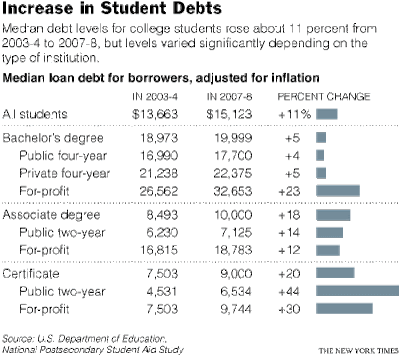
-
"Study Shows Rise in Average Borrowing by Students"
By TAMAR LEWIN, The New York Times, August 12, 2009
Although about a third of the students who earned bachelor’s degrees in 2007-8 graduated with no debt, nearly the same as four years earlier, the average amount students borrow has increased, according to a policy brief released Tuesday by the College Board.
“People think students are drowning in debt, and there is a small proportion of students that borrow an exorbitant amount, but most students graduate with a manageable debt load,” said Sandy Baum, an author of the brief.
For bachelor’s degree recipients who did borrow, the median loan debt was $19,999, up 5 percent from $18,973 four years earlier, adjusted for inflation. The data, the latest available, come from the federal Department of Education’s National Postsecondary Student Aid Study, which is conducted every four years.
About 6 percent of those who completed a degree or certificate — and 10 percent of those who received a bachelor’s degree — borrowed more than $40,000, the brief said.
But the brief does not include parents’ borrowing, credit-card debt, informal loans from relatives or friends, or loans for graduate school.
“We are asking people to bear more and more of the cost of higher education through borrowing, since neither state spending, need-based aid, or family incomes have kept up with the costs,” said Lauren Asher, president of the Project on Student Debt, a nonprofit research group. Borrowing varied greatly depending on the type of school attended. For example, 98 percent of those who got degrees at for-profit two-year colleges had an education loan, compared to 38 percent of those who attended public two-year colleges.
Over all, the median student loan debt of borrowers in 2007-8 was $15,123, up 11 percent from $13,663 in 2003-4. But debt levels rose far more sharply for students at for-profit colleges, and those earning certificates and two-year degrees.
For example, students who received certificates in a for-profit program carried a median debt load of $9,744 in 2007-8, a 30 percent increase from 2003-4. And bachelor’s degree recipients in for-profit institutions had a median debt load of $32,653, up 23 percent four years earlier.
For-profit colleges acquire much of their revenue from federal aid. The authors of the brief say for-profit colleges had about 7 percent of the nation’s undergraduates in 2006, but received about 19 percent of the federal Pell grants.
Borrowing did not increase much for those earning bachelor’s degrees in public or private colleges. At private four-year colleges, the median loan debt for bachelor’s degree recipients was $22,375 in 2007-8, up 5 percent from $21,238 four years earlier.
“How much debt is too much depends on circumstances you can’t predict when you’re planning for college, like the economy, your health, and whether the field you’re training for will continue to expand,” Ms. Asher said.
Given the recession, the next debt study may paint a grimmer picture. “Of course, everybody is struggling much more,” Ms. Baum said. “And private student loans are less available, now that a number of banks that were making those loans are no longer making them, or no longer in business.”
Over all, 41 percent of the students who earned a degree or certificate in the 2007-8 academic year — and 34 percent of those who received bachelor’s degrees — graduated with no debt.
According to the brief, 50 percent of all full-time students took out a federal loan in 2007-8, and 19 percent took out private loans, many of them borrowing through both routes.
“It’s important for students to remember the difference between federal and private borrowing,” said Patricia Steele, the other author of the brief. “Private borrowing gives you no protection, no forbearance, no income-based repayment.”
-----------
-
http://projectonstudentdebt.org/
-
http://projectonstudentdebt.org/files/pub/classof2007.pdf
-
http://roomfordebate.blogs.nytimes.com/2009/06/14/how-much-student-debt-is-too-much/#alan
-
-----------
"AP IMPACT: For-profit colleges boost lending"
By JUSTIN POPE, AP Education Writer, August 14, 2009
Some of the nation's biggest for-profit colleges and vocational schools are boosting enrollment in tough times by making more loans directly to cash-strapped students, knowing full well many of them probably won't be able to repay what they borrowed.
The schools still make money because the practice boosts their enrollment and brings in tuition dollars subsidized by the government. But some of these students could end up saddled with high interest rates and loan payments they can't handle, a burden that could damage their credit for years to come.
Among the for-profit colleges that are booming are ITT, Corinthian Colleges and Career Education Corp. They and other such institutions have an estimated 1.2 million U.S. students pursuing degrees in such fields as nursing, computers and the culinary arts.
Many students at these schools get thousands of dollars in tuition grants under various government programs, and take out loans to cover the rest of their costs.
But because the economic meltdown has made it harder for students to get bank loans, several of these schools are increasingly stepping in, financing degrees in the same way a furniture store or used-car dealer might extend credit to customers.
These schools call the practice a lifeline for students who couldn't otherwise afford an education. And in some cases, students may find better terms than they used to get from lenders like Sallie Mae Corp., which have recently cut way back on student loans to high-risk borrowers.
But some experts worry students will get pushed into loans they shouldn't take.
In fact, two publicly owned college chains have set aside roughly half their internal lending amount as a loss reserve - essentially telling investors they don't expect students to repay more than half of what they borrow.
Another concern: Some companies label such loans consumer financing rather than student loans, which carry particular disclosure requirements. One for-profit school, Colorado-based Westwood College, has been hit with a class-action lawsuit accusing it of fraud and arguing that its lending program violates state banking laws. Westwood charges a relatively high 18 percent interest but doesn't call its lending student loans.
"It's very alarming," said Deanne Loonin, director of the National Consumer Law Center's student loan borrower assistance project. The colleges "can structure the products in all kinds of ways - things like revolving credit lines, unsecured loans, even secured loans. It's this new thing and we're worried about it."
Westwood, which has been making such loans for eight years, calls the lawsuit unfounded.
Jessica Rosales was 17 when she enrolled at Westwood's Inland Empire campus near Los Angeles. She dropped out after one term and was later told she owed Westwood around $18,000 - nearly half in interest and collection fees. Rosales said that the school misled her about the source of her aid and that she never signed a loan from the school.
"It's basically been a curse for me," said Rosales, one of four lead plaintiffs suing Westwood. The interest charges have been dropped, but the bill remains on her credit report. She said she gets calls from collection agencies and is having trouble getting a mortgage.
Westwood's Apex loan program, which is used by about 30 percent of its 12,000 students, has no credit requirement, said Bill Ojile, senior vice president of Westwood. He said that terms are clearly disclosed, interest accrues only after the student leaves school, and students are required to exhaust all other options first.
Many for-profits are seeing enrollment surge. New enrollments at ITT are up one-third from a year ago; last month the company forecast profits 50 percent higher than last year. Laid-off workers returning to school and increased government aid have boosted the number of students at many of these places.
Even critics acknowledge many for-profit schools - also called "proprietary" colleges - offer convenience and innovation that nonprofit colleges could stand to emulate. They also proudly enroll many low-income students.
But they can also be expensive. Forty-three percent of proprietary college students took out private loans in 2007-08, up from 15 percent in 2003-04, according to an anaysis of federal data by the group Education Sector. Over the same period, the proportion of students at for-profit colleges borrowing at least $40,000 nearly tripled to 30 percent, according to Mark Kantrowitz of the Web site finaid.org.
Those figures are worrisome because, on average, for-profit colleges have lower graduation rates and higher loan default rates than other schools.
Some companies, including Apollo Group, parent company of the giant University of Phoenix, have steered clear of such loans altogether, and the industry calls internal lending a relatively small practice, entered into reluctantly.
"We're not lenders. We're educators," said Harris Miller, president and CEO of the Career College Association, which represents the industry. But "if it's a question of not going to school at all or covering the gap, they cover the gap."
Some students could be better off borrowing from their school than from a third-party lender. Career Education, for instance, says most students in its lending program pay just 8 percent interest, and online students pay none. The company says it has no interest in making students overextend themselves.
So why are Career Education and Corinthian Colleges making loans so risky that they anticipate half won't be collected?
Consider, for example, a school charging $10,000, hoping to enroll a student who has lined up $9,000 in aid from the government and elsewhere. Even if the school loses half of the $1,000 it lends to get the student in the door, it comes out $9,000 ahead.
"For many of these students, if you don't apply these thousand dollars, they're not coming to school," said Jeff Silber, an industry analyst at BMO Capital Markets. "Even if you write off that $500 right away, you're giving up all those other revenues. Financially it still makes sense to do this."
Another incentive is the "90-10" rule, a federal law requiring for-profit colleges to collect at least 10 percent of revenue from sources other than the federal government. That gives for-profit colleges a reason to keep tuition high and offer loans.
According to Securities and Exchange Commission filings and comments to investors, Corinthian plans about $100 million of lending this year. ITT said last month its lending grew significantly last quarter and would total $75 million this year. Career Education said its current balance of $31 million could grow to $50 million by year's end.
Representatives for Carmel, Ind.-based ITT ESI Educational Services and Santa Ana, Calif.-based Corinthian did not respond to requests for comment.
Rosales said she wishes she had listened to her mother, who found Westwood's recruiters pushy and only reluctantly let her daughter attend the school.
"But you're young and you think you know it at all," Rosales said. "And you really don't know anything."
-----------
MICHAEL DANNENBERG - "Using student loans to slow tuition growth"
By Michael Dannenberg, The Boston Globe, Op-Ed, August 25, 2009
IT’S back-to-school time for college students, which means big tuition bills. Most will defer large out-of-pocket costs until after college through the use of student loans. No one is happy about the explosion in student loan debt to pay rising tuition, but there is a silver lining: We can use student loans to slow tuition growth.
There are two sides to the college affordability ledger: financial aid and tuition. Politicians focus almost exclusively on expanding financial aid, which is crucial, but it’s like chasing a rabbit. Tuition outpaces inflation, grant aid, even health care cost growth, and, most importantly, median family income. To keep pace with rising tuition, student loan debt doubled over the last decade.
To slow tuition growth, supply-and-demand incentives have to change. If suppliers are on the hook for a portion of student loan default costs, they’ll be less likely to run up tuition beyond what they can expect students to repay. If consumer demand can be nudged at the same time toward colleges that are good investments, schools that offer poor value at a high price will have to slow tuition growth and improve student outcomes. We shouldn’t regulate tuition; we should nudge it in the right direction.
Colleges, because their mission rightly is to build and diffuse knowledge, have insatiable growth aspirations. Many will raise tuition as much as the market will bear, and it bears a great deal.
But families choose colleges and borrow almost blindly. They have relatively little information as to how good an investment a particular school is. Ranking guides like that of US News & World Report focus on the top 20 percent of schools and inputs like class size as opposed to outcomes like how much students learn.
If colleges are made responsible for a portion of student loan default costs, they’ll be more responsible in who they let in, how much they charge, and how well they prepare students for good-paying jobs that enable those students to pay off their debt. In the private student-loan market, banks are increasingly placing proprietary colleges on the hook for a portion of student loan default costs. The federal student loan market is five times as large. We need recourse there as well.
There’s a danger colleges will respond by pricing their exposure to defaults into even higher tuition. That’s why we also need to nudge demand away from high-cost, poor-value schools.
Most colleges supply a good product, and shouldn’t be penalized simply for serving high-risk populations. But a subset of schools is clearly not serving students well. Community colleges in that group aren’t the issue here, because of their low cost and low borrowing rates. The real problem is with low-level private institutions and shoddy for-profit trade schools. We should steer students away from them, but how?
Few Americans want to see No Child Left Behind-like testing at the college level. But it’s relatively easy to compare colleges according to what students most want out of higher education: good jobs and financial security.
We need a price-to-earnings ratio - that is, price of college to expected future earnings - for higher education. The US Department of Education has the average net price for each college. It can generate lifetime student default rates for each school as well. A private website, Payscale.com, lists median starting and mid-career salaries for hundreds of schools. Put such data together and construct a higher-education value index, including a “lemon list.’’ Just like politicians have to say they approve campaign commercials, make the lemons warn consumers on their marketing materials.
“Warning: One in two Acme College borrowers defaults on a student loan within three years of separation from Acme College. Acme graduates earn an average starting salary of $22,000 a year. Be careful before assuming substantial student loan debt to attend Acme College.’’
Schools will want to be identified as good-value options and shudder at the prospect of being on a lemon list. To avoid it, they’ll be less quick to raise tuition - and more interested in making sure their students get good-paying jobs.
-
Michael Dannenberg, former senior education counsel to Senator Edward M. Kennedy, is a senior fellow at the New America Foundation in Washington.
-
-----------
"More students, parents ask for more aid"
By DAN TUOHY, New Hampshire Union Leader, August 25, 2009
The economy has more New Hampshire college students scrambling for financial aid, some right up until they head to campus.
Colleges are doing what they can to meet the need, in some cases being flexible and getting creative to help.
In the competitive world of higher education, like the marketplace at large, administrators tell of families delaying decisions as they weigh options and review available finances.
One enrollment director described it as a matter of "sticker shock."
Paul J. LeBlanc, president of Southern New Hampshire University, said more students and parents are calling to appeal financial aid awards, sometimes going as far as to ask whether another institution's offers can be matched.
"The other thing we're seeing is very prolonged and tortuous decision-making," LeBlanc said. "It's an interesting, complicated year."
The financial strain in New Hampshire, which reflects what is going on nationwide, is really part of a two-year trend, said Brad Poznanski, vice president for marketing and enrollment management at Saint Anselm College.
Saint Anselm's enrollment numbers are on target for September, but the college is not covering 100 percent of aid requests.
"Even when we come close, it's still a stretch for many families," Poznanski said.
Classes resume Monday at the University of New Hampshire, and there are still students who have yet to complete the financial aid application process, UNH Director of Financial Aid Susan Allen said. Many others have submitted appeals, she said.
"Appeals are reviewed daily and while we don't have exact numbers of how many appeals we have received, they have unquestionably increased this year," Allen said.
To date, UNH has processed 10,760 aid applications and awarded $32,756,294 in need-based institutional and Supplemental Equal Opportunity Grant (for students in dire fiscal straits, which do not have to be paid back), according to Allen.
At this time last year, UNH processed 9,945 applications for a total $25,168,803.
The financial strain is evident in the numbers of returning students who are applying for aid for the first time, said Shannon Reid, spokeswoman for the Community College System of New Hampshire. She reported a dramatic increase in the number of students seeking appeals for aid. In response, the system is adding more staff hours to process requests and to counsel students.
"We're increasing our efforts to make sure students know about scholarship opportunities that may be available through our Community Colleges of New Hampshire Foundation," she said.
Fiscal constraints on traditional sources led to a new initiative at Keene State College.
Since the spring term, the Keene State College community has raised nearly $188,000 to help some students who are under financial strain return to campus. Of 71 donors to date, 65 are individuals; 37 donations came from staff and faculty, including emeriti.
"One point that I think is telling is that these were not just new scholarship gifts, but in most cases they were made in addition to gifts already made," said Maryann Lindberg, vice president for advancement at Keene State. "Donors were also not just major donors, but in some cases were employees with modest incomes."
Pat Blodgett, director of Student Financial Services at Keene State, said the new initiative helped more than 100 families.
Since June 30, 2008, Blodgett said there has been a 32 percent increase in financial aid appeals from students and families whose economic circumstances have changed since their financial aid packages were awarded. Her office reviews each one on a case-by-case basis.
As a result of the appeals process and reviews, there was a 25 percent increase in KSC students who are now eligible for Pell Grants, and as a result of those additional students qualifying, the college has seen an increase of more than $1 million in Pell funding, according to Blodgett's office.
Financial aid directors welcome the calls, especially if a student's economic situation changes, and they may be eligible for additional aid.
Allen, director of financial aid at UNH, encourages students and families to keep in contact.
"If things change financially, students need to notify us," she said. "Often families think that if they have received an aid package, then that's the end for the year. However, if things change, we can make changes throughout the year, so again, the best advice is for families to be in touch with the aid office."
-
READERS' COMMENTS
We were rejected for a federally backed student loan because we had a minor credit issue with a disputed medical bill being paid late... Only the squeeky clean credit are getting approved. The current Govenrment is not making it any easier for kids to get into schools no matter what you think. Rejecting loans left and right for any reason. No Money left! Just money for Clunkers and Crooked bankers and Detroit city bailouts of unions!
- John, manchester
Sorry to all the critics out there but college is expensive because you are paying for it, not because of some secret liberal racket to steal your money. Elementary school and high school is expensive too but since you're not writing tuition checks directly (it's all paid through taxes) so there is more of a sticker shock when you get to college. Those who have kids in private schools already know this.
Colleges compete for enrollment which requires them to invest in the campus to make it a more appealing place through building new facilities and hiring more staff to teach more courses. This brings in new students and keeps the institution economically viable.
There are a lot of other factors, such as the absurd cost of heating for all of the buildings on campus, campus security and cleaning crews, and basic utilities. Also in New Hampshire people prefer higher property taxes so large institutions have to pay that too. It all adds up. And to answer your concerns about food cost, the salary of all the kitchen staff is built into the price of food. People who cook their own food at home don't pay themselves for it so the yearly bill should be much lower.
Colleges cost a lot of money. There is aid available but if it is that much of a hardship you need to look at more affordable options because they do exist. Just don't ridicule the people who CAN afford college and choose to send their kids where they please.
- Bill, Manchester
Every person wanting to go to college should tak a a year or two after high school and work in an Ameri-corps type program and as a result, received aid for college. This also makes the person appreciate what college will allow them to achieve later in life and may encourage them to actually go to class instead of starting their weekends on Thursday.
Next step: Attend community college, which is more affordable, and get the general ed classes out of the way.
FYI: Most colleges mandate that freshman live on campus. This is a bogus way to allow colleges to plan their budgets, knowing that 'x' number of students will be paying a known dollar amount.
Colleges even plan budgets on vending machine profits, charging up $ 2.00 or more for a 20-ounce soda.
- Tom P., Ashland
All of these creative solutions, but it should be noted that lowering the cost of tuition is not one of them.
- Allen, Derry
Let's back up here, we can bash whoever we want for these financial times; however, at no time does the child have a 'right' to a higer education free from charge. If we as parents are responsible we would be utilizing the wonderful Community Colleges in this state where the cost is more appropriate and feasible. Let's look at this realistically: 60% of incoming freshman fail in school! Why send them off to an expensive school when a Community College will get them started in the right direction? It allows them to attain thier Associates degrees opening the doors to begin working; yet, it opens another door -- 4yr programs really like the 'older' student OR the CC student as these people are more mature and have less of a chance of failing in their Bachelor programs. One other big benefit to having your Associates degree is that once attained, NO one can take that away from you and bumps you up on a pay scale should you have to work. That's being smart with not just your money but on how you are being educated. These are different times and it's time for people to think 'out-of-the-box' for their kid's education. No one cares where you went to school for a 4yr degree, it's where you go for your Master's and PhD that counts -- and, really, not every child should be educated at higher levels, tech degrees work just as nicely!
Put the money where it matters, not where it doesn't!
FYI I currently have a son who is enrolled at NHTI, Concord where he is using the program enrolled as a stepping stone for attaining his Bachelor's where a reputable 4yr program will accept him. He will then head off to work on a Master's and PhD in the field he's most interested in at this time. No folks, he doesn't stay at the school, he commutes(a good 30mi one way each day), works and pays as he goes along as the goal is to spend as little as possible now and know we'll be spending so much more when he's at higher levels in his education. Backwards planning for his education was the best thing we (him and I, I am a single parent) ever did!
- lar, Salem
why are there no "charter" colleges in NH. I always see comments in this paper how the charter schools in NH are run so much cheaper and save tax dollars. Every one could then afford college.
- Jim, Loudon
We have a child in her first year this year.
I found honestly it may just be cheaper to rent her an apartment, than to pay for room and board......food alone this year will cost is over $3,000.
As a family of 4, we spend approx $4600 a year for the whole family to eat....at the rate of college at $3K for 9 months per student (for 3 meals a day), I find that a bit insane.
We were very lucky she got a lot of scholarships, etc, but I also found the more scholarships she got the more aid was taken away, she lost her pell grant, she lost her work study, and they reduced subsidized stafford loans first, then they reduced her unsubsidized loans.
She ended up choosing an in state school, due to cost when her first choice was a nice private school. With a $23000 difference a year in tuition, she didn't feel she had a choice.
It's not a right to get an education in this country, it's who can afford it......and that is sad!
- m1e1b1s1, claremont, nh
Another part of the issue is lenders who approve student loans in June and suddenly in August you discover the loan money isn't there. The lender doesn't bother to notify anyone. Another bad deal is if you borrow, your payback interest is adjustable and many times higher than a home mortgage. Unless you are dirt poor or very wealthy, getting a degree is almost impossible.
- Mary C, Manchester
Liberals and Unions have owned education for 50 years and what has happened to cost? Why does education continue to decline in quality and costs continue to escalate far beyond the inflation rate?
- Gary Hoffman, Bedford
Another dastardly Democratic plan comes into being. Now that liberals have taken over college campuses, they are raising the fees and tuitions so high that only Republicanics can attend so that they can brain wash the conservative crud out of their little pointy heads. You people need some new hobby. How about joining the military?
- Bob, Deerfield
I do not think that colleges are a money making machine. Some colleges do as much as possible for the students and lets face education is not free. People's salary, cost of maintenance, buildings, supplies other than what the student is responsible for and that's only the surface that we see. the sad part is that our institutions are not helped very much from the outside. Today the economy is in the ditch and giving is down in order to make room for our toys ( you figure it out). Our children need the education in order to continue the future and not fall back to the dark ages.
- Walter, Mason
College has become a scam, face it. Why has the cost of an advanced education skyrocketed? Because kids have no choice but to pay it. Colleges are a money making machine, not a system to help the next generation prepare for the lives ahead of them.
- Bob, Manchester
-----------
"Serving Students, Not Lenders: A solid loan reform inches closer to passage."
washingtonpost.com - Editorial - September 16, 2009
EXCEPT FOR a lucky few, paying for college isn't easy. Judging from how long it has taken, neither is reforming how the government provides the loans that make higher education affordable to millions. Yet Wednesday, as the House considers a bill that promises to save taxpayers billions of dollars, it's clear that the right choice is to vote yes.
Historically, the government has kept student-loan interest rates low through two programs: one in which the feds do the lending directly; and one in which the government subsidizes private entities that offer students loans at low, set interest rates. For more than a decade, private lenders fought back attempts to end the expensive subsidy system that kept them profitable at taxpayer expense. Then came the financial crisis, during which the public-private system fell apart, and the election of President Obama, who is intent on getting rid of the private middlemen.
According to the Congressional Budget Office (CBO), if the government directly financed all federally sponsored student loans, it would save $80 billion over 10 years. House Democrats have advanced a version of the president's plan that will probably get a vote in the House Thursday; the measure would put those savings into a range of worthy programs, from aid for community colleges to school renovation to larger Pell grants.
Lenders retort that they provide better customer service than can the government, including financial literacy training and counseling on how to avoid loan defaults. But under the bill before the House, the Education Department would contract with private lenders to service the loans it originates. A sensibly designed competitive bidding process should result in effective customer support.
Unable to argue with the $80 billion figure, private lenders are now trying to convince Congress to allow them to continue originating loans, which they would then sell to the Education Department and service in return for a fee, another scheme they claim would ensure better service. But the CBO estimates that their plan would probably save $13 billion less over 10 years than the Democrats'. That's too much savings foregone.
We do have one concern with the Democrats' plan, which would increase the size of Pell grants and then index them to inflation. The bill looks set to pass in the House. When the Senate takes up the proposal, which it might do later this month, it should reconsider locking in such spending just as the government faces massive budget deficits.
-----------
"Truth About Lending"
The New York Times, Editorial, September 16, 2009
Congress has a chance, starting this week, to end the boondoggle that allows private lenders to earn a handsome subsidy for making risk-free student loans that are guaranteed by the federal government. It’s a wonderful deal for the lenders — and an emphatically bad one for the taxpayers.
The House is expected to vote on Thursday on a bill that would simplify the loan system — and save the country nearly $90 billion over the next decade — by ending the subsidy program and allowing students to borrow directly from the government through their colleges and universities. To get this done, however, lawmakers will need to see through the spin and misrepresentations that have become all too common lately.
In addition to being too costly, administering the privately run lending program is more trouble than it is worth. Consider, for example, the recent corruption scandal in which publicly subsidized lenders were found to be paying kickbacks to colleges.
The subsidy program has not held up its end of the bargain from even a lending standpoint. It was supposed to keep running through economic hard times. But it collapsed during the credit crunch and was bailed out by the federal government, which is still pumping money into the system. The direct lending system has gone on working like a trundle, with no bailout needed.
The private lenders and those who do their bidding in Congress have recently taken issue with a Congressional Budget Office analysis that showed that the bill would save about $87 billion over the next 10 years.
They argue, absurdly, for example, that the savings would be smaller if the system were analyzed under accounting rules other than the ones that the federal government is required to use. The aim is to mislead taxpayers and members of Congress into believing that the C.B.O. estimate is dishonest.
The claim by critics that ending the subsidized program would expand government — and push private companies out of the business — is also nonsense. The loans would be handled through colleges but serviced and collected by private companies and nonprofits that stand to make a tidy profit.
Lawmakers need to put aside all the noise and pass this bill.
-----------
"Obama lashes out at U.S. banks over student loans"
By Caren Bohan, September 21, 2009
TROY, New York (Reuters) – President Barack Obama criticized the largest U.S. banks on Monday for trying to thwart legislation that would overhaul federal student loan programs.
He singled out in particular banks that have received bailout money from the federal government, saying they want to maintain the status quo on student loans because they get an "unwarranted subsidy" from it.
The U.S. House of Representatives last week approved legislation that would cut major banks and student loan giant Sallie Mae out of a large slice of the $92 billion university student loan business, shifting most lending into a program run by the U.S. Education Department.
The bill, strongly backed by Obama, will go next to the Senate for further consideration. Some Republicans criticized the bill as a government takeover of an industry that has served students well but Obama's fellow Democrats praised the House bill as a victory for students over banks.
"Ending this unwarranted subsidy for the big banks is a no-brainer for folks everywhere. Everywhere except Washington, that is," Obama said in remarks prepared for delivery at a community college in Troy, New York. "In fact, we're already seeing the special interests rallying to save this giveaway.
"The large banks -- many who have benefited from taxpayer bailouts during the financial crisis -- are lobbying to keep this easy money flowing. This is exactly the kind of special interest effort that has succeeded before and that we cannot allow to succeed again," he said, in fiery comments distancing himself from the banks.
Many U.S. students take on crushing debt loads to pay university bills that can total $50,000 a year or more at the country's private universities.
-
(Additional reporting by Patricia Zengerle in Washington; Editing by David Alexander and Bill Trott)
-
-----------
"Financial aid reform may be in the works"
The Nashua Telegraph (Online), By Karen Lovett, September 22, 2009
The U.S. House of Representatives passed the "Student Aid and Fiscal Responsibility Act of 2009" last week aimed at making college more affordable for students and families.
U.S. Reps. Carol Shea-Porter and Paul Hodes voted in favor of the bill, which now moves on to the Senate.
Hodes said in a press release that the bill will save taxpayers $87 billion, reinvesting $77 billion of that into efforts to make college more affordable by increasing the maximum Pell grant from $5,350 to $5,550; investing $3 billion in college access and completion support programs; keeping interest rates low; offering more reliable credit for Perkins Loan program; and simplifying the FAFSA form.
Some Republicans have opposed the bill because they say it shifts focus from closing achievement gaps to making the federal government "one of the nation's largest banks, maintaining school buildings, duplicating existing programs ranging from early education to job training and college completion," according to a Republican policy statement.
-----------
"Student loan default data highlights for-profits"
By JUSTIN POPE, The Associated Press via The Washington Post (Online), Monday, December 14, 2009
-- More than one in five borrowers of federal student loans who attend for-profit colleges default within three years of beginning repayment, new figures made available by the U.S. Department of Education on Monday show.
Historically, the government has reported such figures in terms of how many students default within two years - a figure that stands at 6.7 percent of student borrowers overall and about 11 percent at for-profit schools.
But the new three-year numbers, though preliminary, give a clearer picture of whether a student at a particular school will default, and the government will soon begin using them to help decide which colleges qualify for taxpayer-supported student aid programs.
Currently, schools with default rates over 25 percent for three straight years can be disqualified, but experts argued that schools were gaming the two-year figures. So starting in 2012, colleges will be judged on how many students default within three years of starting repayment, though the new threshold default rate for sanctions will be 30 percent instead of 25 percent.
Nearly 12 percent of borrowers who began repayment in fiscal 2007 defaulted within three years - up from 9.2 percent for 2006. But at for-profit colleges, the rate was 21.2 percent within three years, The Associated Press calculated from the government's data. That was up from 18.8 percent for fiscal 2006.
Harris Miller, president and CEO of the Career College Association, which represents for-profit colleges, said the increase reflects the poor economy. He also said high default rates don't measure a school's quality, and noted that his group's members enroll large numbers of low-income students.
"If you accept low-income students you're going to have high default rates," he said. "It has nothing to do with whether you're for-profit or not."
In recent years, only a handful of institutions have lost eligibility for federal aid due to high default rates. However, the new data show more than 300 colleges - more than 85 percent of them for-profit schools - had three-year default rates higher than 30 percent. Those schools will have to improve when the rules kick in or risk losing federal aid.
However, most of those schools are smaller, local institutions and not the giant national chains. Among the better-known institutions, the data indicate a three-year default rate of 15.9 percent at University of Phoenix, 23.2 percent at Kaplan University and 17.1 percent at DeVry University.
Still, the three-year rates at those schools are all rising. Phoenix's rate was up from 10.3 percent for 2006, and Kaplan's was 16.6 percent. Ashford University, a rapidly growing for-profit, saw its three-year rate jump from 6.1 percent to 17.4 percent.
The figures do not include private student loans, just those from the government.
For-profit colleges are attracting a surging proportion of federal student aid dollars, the AP reported last month, reflecting the rising share of low-income students they educate. But critics say that's no excuse for higher default numbers; they say it leaves for-profit schools with a greater obligation to make sure students don't overborrow. Critics also contend students struggle to pay back loans because credentials from too many for-profit schools aren't rewarded in the job market.
Michael Dannenberg, senior fellow at the New America Foundation, said the school-level data searchable at http://fsadatacenter.ed.gov give students potentially valuable information to consider when considering college.
"In general, higher education is a good investment, but there are no guarantees," he said. "At some schools, there's a one in five chance you'll be in worse financial shape -three years out- than before you began."
Students, he added, should be careful about borrowing large amounts of money for college. "The debt can grow exponentially in default, and it follows you forever," he said. "College loans can almost never be discharged in bankruptcy."
Dan Madzelan, acting assistant secretary for postsecondary education, noted that while some for-profit colleges have high default rates, others are in line with traditional colleges. He also cautioned that for some schools with high rates but a low number of borrowers, the default rate numbers could be misleading.
-
On the Net: http://fsadatacenter.ed.gov
-
-----------
-

-
Mary K. Grant
-
"MCLA faces grim budget"
By Jennifer Huberdeau, North Adams Transcript, 1/20/2010
NORTH ADAMS -- As students return to classes today at Massachusetts College of Liberal Arts, the most pressing concern on the minds of administrators is the upcoming fiscal 2011 budget -- which is expected to roll back state college budgets to fiscal 2000 spending levels.
"Our biggest challenge will be the budget, which will become a real issue as we continue to move this college forward," President Mary K. Grant said during Tuesday’s opening breakfast at the college for faculty and staff. "We are pretty well positioned at this point, but I do not want to lose our momentum. I ask you not to be too discouraged. Things will get better in the future, but for the moment, we will just have to set some things aside."
While Grant offered no specifics, she made it clear the college would be on an austere spending plan and would consider hiking student fees next year.
If funded at fiscal 2000 spending levels, MCLA would receive about $11.7 million for operating expenses -- just $200,000 less than its state appropriation in fiscal 2010 -- but its budget was boosted by $2.3 million in federal stimulus funds, bringing the total up to its fiscal 2009 level of $14.3 million. The college expects no such boost this coming year.
"It’s not just MCLA but all of public higher education that’s facing these cuts," Grant said. "It’s a tough budget year for the commonwealth and the country."
Over the last few months, administrators have looked for ways to save money, including the implementation of a recent energy savings audit.
However, modest student fee increases -- which have yet to be determined -- are a reality, Grant said.
"We’ve talked with the Student Government Association about this already," she said in an interview following the breakfast. "We’ve told them the prospect of fee increases is real, but not for this academic year -- next year. We’re going to try to keep those increases modest, but every institution of public higher education in Massachusetts is facing the same challenges."
One of the challenges of working with a smaller budget is the increased pressure put on employees -- a point expressed by two union heads during the breakfast.
Adjunct English professor Paul Rapp, president of the faculty union, said the economy has pushed more students toward state colleges -- increasing enrollment without increasing staffing levels.
"Higher enrollment is leading to larger class sizes and larger advising loads," he said. "These things are not in the best interest of anyone here or in the commonwealth."
Charles Cianfarini, president of the local chapter of the Association of Professional Administrators, said that despite signing a contract, the union’s members had yet to see it funded by the state Legislature.
"Our union president is meeting with the state Board of Higher Education on Thursday, where it is our belief we will be asked to make more concessions," Cianfarini said. "The APA’s membership are the only employees in the state to go without a raise since January 2007. Unlike other state workers, we are salaried and have no additional means to earn overtime, yet we have all seen our workloads increase. We work long days and extra hours at home, all while enduring the plight of having to go without raises while our cost of living continues to rise."
Grant said the college has a continuing commitment to keeping student-to-teacher ratios low but will face the challenge of expanding its full-time faculty roster beyond its current size over the next several years.
State Sen. Benjamin B. Downing, D-Pittsfield, acting chairman of the Legislature’s Joint Committee of Higher Education, assured the packed dining hall of the Amsler Campus Center that one of his goals is to "turn around the seemingly generation-long challenge of adequately funding public higher education."
"We need to begin to see public higher education as a long-term economic investment," he said. "The only way we are going to grow the economy in Berkshire County is if we have a highly skilled workforce. These budget trends we face as a state didn’t build up overnight, nor will they be fixed overnight. But I can point to this campus as a shining example of why we need to fund public higher education and why faculty and staff need pay increases."
One of the items that won’t be put on the back burner in the coming months, Grant said, will be the planned $50 million Center for Science and Innovation, which received $500,000 in state funding for a feasibility study late last year.
"We are in the bidding process for the feasibility study," she said. Finalists for the study are expected to tour the campus on Feb. 16.
Mayor Richard J. Alcombright and state Rep. Daniel E. Bosley also spoke at Tuesday’s breakfast.
-
To reach Jennifer Huberdeau, e-mail jhuberdeau@thetranscript.com.
-
www.topix.net/forum/source/north-adams-transcript/T6GP9D5BG57FDKEHG
-
-----------
"Parents, students on edge over soaring tuition"
By Donna Gordon Blankinship, Associated Press Writer, February 1, 2010
SEATTLE – As students around the country anxiously wait for college acceptance letters, their parents are sweating the looming tuition bills at public universities.
Florida college students could face yearly 15 percent tuition increases for years, and University of Illinois students will pay at least 9 percent more. The University of Washington will charge 14 percent more at its flagship campus. And in California, tuition increases of more than 30 percent have sparked protests reminiscent of the 1960s.
Tuition has been trending upward for years, but debate in statehouses and trustee meeting rooms has been more urgent this year as most states struggle their way out of the economic meltdown.
The College Board says families are paying about $172 to $1,096 more in tuition and fees this school year. The national average for 2009-2010 is about $7,020, not including room and board, according to the nonprofit association of colleges that oversees the SATs and Advanced Placement tests.
Mike Sarb, a University of Illinois senior from suburban-Chicago Elk Grove Village, Ill., says money is a big concern for his blue-collar family scrambling to find the money to pay more than $20,000 for tuition, room and board.
They are not pleased that university officials are likely to raise tuition 9 percent this summer.
"They do complain that the school's taking advantage of people (by raising tuition)," Sarb said.
But interim President Stanley Ikenberry says the school has run out of options. With a budget deficit expected to top $11 billion this year, the state of Illinois owes the university more than $430 million, money he doesn't expect to see any time soon.
In some cases, one student's tuition disaster is another's bargain.
State officials have told Florida students they can expect 15 percent tuition increases every year until tuition reaches the national average. That could be a long slog, as the state is starting its tuition realignment from a place other students envy — about $3,000 a year.
In California, unprecedented budget cuts to higher education have led to huge fee increases at the state's two public university systems, as well as layoffs, furloughs, enrollment cuts and reduced course offerings.
At the University of California, which has 10 campuses and about 220,000 students, in-state undergraduate fees in fall 2010 are set to reach $10,302 — 32 percent more than in fall 2009 and three times what California residents paid 10 years ago.
But at California State University, the nation's largest public university system with 23 campuses and 450,000 students, resident undergraduate fees rose 32 percent from fall 2008 to fall 2009 to $4,026, which is nearly three times what students paid 10 years ago. Gov. Arnold Schwarzenegger's budget proposal for 2010-2011 assumes that the system will raise fees another 10 percent in the coming academic year.
"We're paying more and getting less," said Steve Dixon, a Humboldt State University senior who heads the California State Students Association.
At the University of Washington, where tuition and fees are expected to pass $9,000 by the 2010-2011 school year, students are worried about threatened cuts in financial aid as well.
"It's kind of a perfect storm for students," said Jono Hanks, a political science major from Everett, Wash., who is the UW student government lobbyist at the statehouse this quarter.
Hanks lives at home, packs his lunch and pays tuition with work and about $4,000 in student loans a year. Others have told him they're looking for a second job and adding to their debt to keep up with this year's 14 percent tuition increase.
"Some of them are even talking about dropping out for a few years so they can pay off the loans they have," Hanks said.
The Seattle university expects to raise tuition another 14 percent next year. UW tuition used to double every decade. At 14 percent a year, it could double in five.
Hanks is almost finished with school so he's not that concerned about his ability to pay for the last few quarters of his degree. But he does worry what barrier tuition increases will pose for his younger sister and brother, who are both in elementary school.
Other states have been more subtle in their budget balancing attempts.
The University of Wisconsin-Madison is in the first year of a four-year tuition increase plan aimed at improving quality. In addition to statewide tuition increases of about 5.5 percent, in-state students at UW-Madison will pay an extra $250 a year each year.
This year, tuition went up by $617 to $7,296 or about 9.2 percent, but financial aid increased at the same time.
Still, few are complaining because the extra money — $100 million in the first four years and $40 million each year afterward — is reserved for providing more classes, improving student services and increasing need-based financial aid.
The Georgia Board of Regents has suspended indefinitely its popular "Fixed for Four" guaranteed tuition program, which since 2006 has meant students have paid the same tuition rate annually for four years of college. A freshman at the University of Georgia this year pays $3,865 in tuition and fees per semester if they take between seven and 15 hours of classes.
Some students are relieved at modest tuition increases this year, including 3.5 percent in Ohio, less than 5 percent in Pennsylvania, and 3.9 percent at the University of Colorado at Boulder.
So far a few states, like Oklahoma and Missouri, have avoided tuition increases entirely. And the Oklahoma Legislature gave its state universities no reason to complain when it fulfilled the state higher education budget request.
-
AP Reporters David Mercer in Champaign, Ill., Terry Chea in San Francisco, Dorie Turner in Atlanta, Bill Kaczor in Tallahassee, Fla., and Ryan Foley in Madison, Wis., contributed to this story.
-
-----------
"Lobbying Imperils Overhaul of Student Loans"
By ERIC LICHTBLAU, NY Times, February 5, 2010
WASHINGTON — Four months ago, it appeared all but certain that the White House and Democrats in Congress would succeed in overhauling the student loan business and ending government subsidies to private lenders.
President Obama called the idea a “no-brainer” last fall, predicting it would take billions of dollars from the profits of private lenders and give it directly to students, and many colleges were already moving to get loans directly from the federal government in anticipation of the next move by Congress.
But an aggressive lobbying campaign by the nation’s biggest student lenders has now put one of the White House’s signature plans in peril, with lenders using sit-downs with lawmakers, town-hall-style meetings and petition drives to plead their case and stay in business.
House and Senate aides say that the administration’s plan faces a far tougher fight than it did last fall, when the House passed its version. The fierce attacks from the lending industry, the Massachusetts election that cost the Democrats their filibuster-proof majority in the Senate and the fight over a health care bill have all damaged the chances for the student loan measure, said the aides, who spoke on the condition of anonymity because they were not authorized to discuss the matter publicly.
But they said the administration had recognized the threat and was beginning to push back in an effort to get the plan approved.
Sallie Mae, a publicly traded company that is the nation’s biggest student lender with $22 billion in loans originated last year, led the field in spending $8 million on lobbying in 2009, more than double the year before, and other lenders spent millions of dollars more, according to an analysis prepared for The New York Times by the Center for Responsive Politics.
Political action committees for the lenders and company employees made $2.1 million in political contributions last year, with the money split evenly among Democrat and Republican candidates, the data showed. Sallie Mae’s PAC alone made $194,000 in donations.
Some 10 million students got loans last year to help pay for their educations, and there is disagreement about whether having the federal government take over virtually the entire lending program would help or hurt them. Private lenders warn that students may default on their loans more often because they will get less counseling; the Obama administration says students will benefit from more grants and expanded educational programs.
A defeat for the White House at the hands of the industry could become further evidence of the administration’s sagging political fortunes. The unexpected loss of the Massachusetts Senate seat has given opponents of the lending plan an opportunity that seemed unlikely last September, when the House approved legislation to move to a federally-sponsored loan program.
The student loan industry, which would be forced out of the loan origination business if the proposal became law, is seeking to cast the administration’s plan as an ill-conceived government takeover that could put thousands of people out of work at private lending centers around the country at a time when unemployment is hovering around 10 percent.
“We anticipated this,” Arne Duncan, the education secretary, said of the lending industry’s lobbying efforts. “They’ve had a sweet deal. They’ve had this phenomenal deal that taxpayers have subsidized, and that’s a hard thing to give up.”
Private lenders get a cut of the federally backed loans that they originate and service, with little risk of their own. At Sallie Mae, lobbyists for the firm are focusing on senators regarded as fiscal conservatives, as well as those in states that are home to lending centers with jobs at stake, including Florida, Illinois, Nebraska, New York and Pennsylvania, said John F. Remondi, chief financial officer for the company.
Student loan lenders employ about 35,000 people around the country, although estimates differ as to how many jobs would be eliminated if the federal government took over all direct lending on student loans.
“We haven’t left any stone unturned — we’ll meet with anyone who will meet us,” Mr. Remondi said in an interview. “We’re trying to identify at least 12 senators who would be helpful in this process.”
At the same time, Sallie Mae and other lenders have staged a series of town-hall-style meetings at their job centers around the country to help mobilize opposition to the White House plan and collect thousands of signatures for a petition drive in support of their own plan.
“I would think that the White House would prefer not to make senators vote for something that is going to be very unpopular in their states — and for good reason,” said Jamie Gorelick, a former Clinton administration official who is now lobbying for the lending industry.
Mr. Obama defended his plan last week in his State of the Union address.
“To make college more affordable, this bill will finally end the unwarranted taxpayer subsidies that go to banks for student loans” and use the savings to finance other educational programs, he said to cheers from Democrats. “In the United States of America,” Mr. Obama said, “no one should go broke because they chose to go to college.”
The money that would be saved by cutting out the private-industry middlemen — about $80 billion over the next decade, according to a Congressional Budget Office analysis — could instead go toward expanding direct Pell Grants to students, establishing $10,000 tax credits for families with loans, and forgiving debts eventually for students who go into public service, administration officials say.
The bill would also shift tens of billions of dollars in expected savings to early learning programs, community colleges and the modernization of public school facilities.
Representative George Miller, the California Democrat who has led the fight for the lending overhaul as chairman of the House Education Committee, predicted in an interview that the plan would ultimately pass.
“If people want to lose $80 billion on the taxpayer’s dime for the very narrow interests of Sallie Mae, I guess they can decide that, but it makes no economic sense to me,” he said. “They had a great ride for years.”
If Congress backs Mr. Obama’s proposal, opponents say that students will forfeit the individualized service that private lenders are better able to offer: a one-on-one meeting in a high school gym, a range of loan options to pick from, or an 11th-hour meeting to avoid a default. The lenders have offered an alternative proposal to retain a more active role in originating loans, which they say would generate significant federal savings — $67 billion in the next decade, according to the Congressional Budget Office.
Some financial-aid administrators at colleges around the country say they are worried that the political uncertainty over the loan proposal and the one-size-fits-all approach of the White House’s approach could hurt colleges and students.
“We’re caught in a political struggle,” Caesar Storlazzi, the chief financial aid officer at Yale, said in an interview. Like a wave of other colleges in recent months, Yale decided in November to switch from private-sector loans to the federal government’s direct-lending program.
But with passage of the White House plan now appearing “less inevitable,” Mr. Storlazzi wonders whether keeping the private lenders in business is better for students.
“It really felt like the administration was just shoving this down our throats,” he said. “It feels a bit like a federal takeover.” With competition among lenders, he said, “We get better prices and services.”
-----------
"Education secretary pushes to revise student loan practices"
By Nick Anderson, Washington Post Staff Writer; A15, February 10, 2010
Education Secretary Arne Duncan on Tuesday urged the Senate to overhaul student lending, asserting that the banking industry has had "a free ride from taxpayers for too long" and that executives with lending giant Sallie Mae have enriched themselves as borrowers rack up college debt.
"Working Americans pay while bankers get rich," Duncan said in a prepared statement. "Sallie Mae executives have paid themselves hundreds of millions of dollars in the last decade while teachers, nurses, and scientists -- the backbone of the new economy -- face crushing debt because of runaway college tuition costs."
Duncan's unusually pointed critique marked an escalation in the student loan debate as the Obama administration seeks to end a program that uses private lenders as middlemen for federally backed loans. The tone of the comments echoed President Obama's recent populist rhetoric about the need to expand regulation of Wall Street.
In September, the Democratic-led House passed a bill, over strong industry and Republican opposition, that would mandate a switch to direct government lending. It would steer an estimated $80 billion in savings over the next decade to grants for needy students and other education initiatives. But the bill has stalled in the Senate as the Democratic majority seeks to circumvent a virtually certain Republican filibuster.
Opponents depict the bill as a government takeover that would squelch competition, diminish services to students and cost jobs. Sallie Mae, based in Reston, and other industry players are pushing an alternative that they say also would end government subsidies but preserve a role for private lenders in originating student loans.
John F. Remondi, Sallie Mae's chief financial officer, said the lender shares Obama's reform goals but wants to "enhance" the House-passed bill. Asked about Duncan's comments, Remondi said: "Look, we don't think name-calling helps in this process. The design of the future of this program should be debated fairly and openly."
Sallie Mae estimates that its workforce would be cut from 8,500 to 6,000 if the House bill becomes law. The company said it is funding a radio advertisement in Indiana and Pennsylvania, which are home to some of its facilities, to raise questions about potential job losses under the bill.
Duncan blasted such ads.
"We want the American public to have full knowledge of what's happening here, the reality," he said in a telephone interview. Private lenders "have had a very sweet deal. . . . Our proposal is infinitely better for middle-class, working-class Americans."
The federal student loan program, designed to provide a secure source of college funds for young borrowers, is more than 40 years old. Since the early 1990s, colleges have been able to choose between direct government lending and private lending with a government guarantee against default.
Private lenders have a larger share of the market, but in recent months many colleges have migrated toward direct lending. As of Dec. 31, the Education Department reported $30.9 billion in direct loans originated for the current school year, up from $19.2 billion the year before -- a 61 percent increase. Federally guaranteed loan volume rose 6 percent in that time, the department reported, to $53.1 billion.
Sen. Tom Harkin (D-Iowa), chairman of the Health, Education, Labor and Pensions Committee, has not introduced his version of the measure passed by the House but has said he plans to move a bill "early this year." Some Democrats have raised questions about the bill, even though most appear to support its broad goals.
Sen. Robert P. Casey Jr. (D-Pa.) has not endorsed the House legislation, according to spokesman Larry Smar, and is exploring alternatives. "There's a whole host of things he likes in the underlying bill," Smar said.
Rep. George Miller (D-Calif.), chairman of the House Education and Labor Committee, said, "It's inconceivable to me that the Congress would continue unwarranted subsidies to these lenders."
Looking for admissions advice? Campus news? Reports on college life? Please visit our new Higher Education page at washingtonpost.com/higher-ed. Bookmark it!
http://voices.washingtonpost.com/higher-ed/
-----------
A BOSTON GLOBE EDITORIAL
"Socialism for student lenders"
February 16, 2010
IF EVER there were an example of “socialism for the rich, capitalism for the poor,’’ it’s the nation’s student lending system. Industry giants receive government subsidies to originate and administer government-backed student loans. These loans bring little to no risk and huge profits, even as college students and graduates struggle under the weight of crushing debt during a down economy.
President Obama wants to save taxpayers $80 billion over the next 10 years by eliminating wasteful subsidies to the private student loan industry. That money would be far better spent on expanding direct federal loans to students. But after the House passed a student loan reform bill last fall, the industry has dumped tens of millions of dollars into lobbying.
The Senate should ignore the pleas of Sallie Mae and its competitors, which have long profited off of an inefficient arrangement, and pass a bill similar to the House measure
Predictably, the lenders who want to hang onto their government subsidies have smeared Obama’s efforts as a “government takeover’’ of the loan industry, and have claimed that it will lead to lost jobs at Sallie Mae and other large loan companies. The rhetoric is misleading. These loans have always constituted a government program, since the government has absorbed the vast majority of their risk and cost. Moreover, private companies would still service the loans; they just wouldn’t originate them or receive subsidies.
Obama’s plan to streamline federal student loans is long overdue. The Senate shouldn’t let the industry’s scare tactics lead it astray, and should vote to stop wasting taxpayers’ money.
-----------
"House approves huge changes to student loan program"
By Daniel de Vise, Washington Post Staff Writer, A01; March 22, 2010
Legislation hailed by supporters as the most significant change to college student lending in a generation passed the House on Sunday night.
The student aid initiative, which House Democrats attached to their final amendments to the health-care bill, would overhaul the student loan industry, eliminating a $60 billion program that supports private student loans with federal subsidies and replacing it with government lending to students. The House amendments will now go to the Senate.
By ending the subsidies and effectively eliminating the middleman, the student loan bill would generate $61 billion in savings over 10 years, according to the nonpartisan Congressional Budget Office.
Most of those savings, $36 billion, would go to Pell grants, funding an era of steady and predictable increases in the massive but underfunded federal aid program for needy students. Smaller portions would go toward reducing the deficit and to various Democratic priorities, including community colleges, historically black colleges and universities, and caps on loan payments.
The bill's greatest impact would fall on the more than 6 million students who rely on Pell grants to finance their education. Pell, launched in 1973, once covered more than two-thirds of total costs at a public university. It now covers about one-third.
The student aid measure was initially framed as a boost to the Pell program. Now it is seen as its salvation. Democratic leaders say that without a massive infusion of cash, the maximum grant could be scaled back by more than half to $2,150 and at least 500,000 students could be dropped from the program.
"So if this legislation did not pass, you would see catastrophic cuts to the Pell grant program, effectively slamming the door shut for hundreds of thousands of students, if not millions, who rely on the Pell grant program to go to school," said Rich Williams, higher education associate for U.S. PIRG, the federation of state Public Interest Research Groups.
Late Sunday, Arne Duncan, the U.S. education secretary, said, "Tonight's vote in the House is a big victory for America's students."
Democratic leaders and student advocates hailed the aid package as simple, smart reform: Under the current Federal Family Education Loan program, the government effectively assumes the risk for loans issued by private lenders, who then pocket the subsidies.
"You're taking billions of dollars in wasteful subsidies to student lenders and banks, and you're recycling that money on behalf of families and students to help pay for their college education," said Rep. George Miller (D-Calif.), chairman of the House Education and Labor Committee.
House Republicans and lending industry lobbyists oppose the measure, calling it an unnecessary government takeover and envisioning a bumbling bureaucracy replacing efficient private-sector loan operations.
"Instead of making student loans more affordable or preserving choice, competition and innovation in the loan program, Democrats are taking money from struggling students' pockets to help pay for a government takeover of health care," said Rep. Brett Guthrie (Ky.), senior Republican on the House subcommittee that oversees higher education.
The federal government has subsidized private student lending since 1965 and began lending directly to students in the 1990s. The movement to end the subsidies is rooted partly in allegations of past corruption: In 2007, the private lending industry was assailed for overcharging the government and offering colleges incentives to steer students to their loans.
Although subsidized lending has faltered in the sour economy, the industry has fought eliminating the program, led by Reston-based SLM Corp., better known as Sallie Mae.
In a final push, the loan industry accused Democrats of taking money from students in the dual-purpose bill, which diverts $9 billion in college aid funding toward overall deficit-reduction savings. Democrats said that money was offset by education investments authorized under health-care reform.
The higher-education industry has generally supported student lending reform. Any boost to the Pell program translates to more tuition dollars. The Washington Post Co. is a player in that industry as owner of Kaplan Inc., a for-profit higher-education provider.
In its first iteration in the summer, the student aid bill was a standalone measure that delivered a substantially larger savings -- $87 billion -- for Pell and other Democratic education initiatives.
The figure dropped to $61 billion, chiefly because colleges have begun switching to direct government lending, anticipating that the law will change. Some private loan companies have retreated from the program as well, both because of harsher lending conditions and the looming changes. The volume of subsidized loans shrank from $61 billion in fiscal 2009 to $50 billion in fiscal 2010, according to a preliminary industry estimate. But direct government lending rose from $21 billion to $30 billion. Some of the savings promised in the bill are, in effect, already realized.
Ambitions are diminished in the revised legislation, released last week.
The amount directed at Pell grants would drop from $40 billion to $36 billion, and a portion of the smaller amount would go toward closing an unexpected shortfall in the grant program, oversubscribed because of the recession. The annual Pell grant would rise to $5,975 by 2017 from the current $5,550, and for the first time, it would be linked to the consumer price index. In the original House bill, the Pell target was $6,900.
Community colleges would get $2 billion, down from $10 billion in the original bill. More than $20 billion in initiatives for early education, K-12 school modernization and student loan interest-rate reduction would be eliminated. But a $2.6 billion investment in historically black colleges would survive. The new bill also includes a $1.5 billion initiative that would cap a borrower's monthly loan payments at 10 percent of income, down from 15 percent.
Student loan and health-care retooling were combined in one bill after Democrats lost their filibuster-proof supermajority in the Senate. Democrats then steered both measures into the budget reconciliation process, which requires only a simple majority. Congressional rules allow only one reconciliation bill.
-----------
"Students push for aid overhaul; lenders lobby against it"
By Nick Anderson, The Washington Post, A02; March 24, 2010
College students swarmed Capitol Hill on Tuesday to plead for more financial aid as private lenders made a last push to preserve their endangered role in making federal student loans.
The dueling messages sought to influence potential Senate action this week on a proposal to expand direct government lending by cutting funding for private firms that make federally guaranteed loans. Tens of billions of dollars in projected savings would flow to grants for needy students.
The proposal is attached to a bill approved Sunday by the House -- separate from the comprehensive health legislation President Obama signed into law Tuesday -- that resolves various differences among congressional Democrats over health-care reform. If the Senate approves the bill without amendment, it also would go to Obama for his signature. But opponents of the student lending overhaul are seeking to revise it in the Senate, which would force another vote in the House.
The opponents face a difficult task because overall Democratic support for the bill appears to be solidifying in the Senate, even among senators who have expressed concerns about the lending overhaul, several Democratic aides said.
One potential swing Democrat on student-loan issues is Sen. Bill Nelson (Fla.), who signed a letter recently urging the Senate to consider alternatives that would not cut into industry jobs. But Dan McLaughlin, a Nelson spokesman, wrote in an e-mail: "Sen. Nelson likes the education and student loan reforms. He doesn't like the jobs it could cost in north Florida. But at this point, it looks like it's in the health-care and education legislation to stay."
On Monday, Sen. Blanche Lincoln (D-Ark.) criticized the bill for including "matters unrelated to health care" and said in a statement, "I cannot support this process." Republicans oppose the lending overhaul as an unwarranted government takeover.
The measure would save an estimated $61 billion over 10 years by cutting out subsidies for private lenders, which the Obama administration describes as needless go-betweens, and by expanding direct government lending. It would provide $36 billion in Pell grants for students from low- and moderate-income families, including $13.5 billion to plug a shortfall this year because rising numbers of students are eligible for aid.
The United States Student Association rallied hundreds of members on Capitol Hill for the bill. They waved signs -- "Students NOT Banks!" and "$ Now!" -- and chanted slogans that underscored the fiscal straits universities face as they raise tuition. "They say, 'Cut back!' " students yelled. "We say, 'Fight back!' "
"I'm an independent student," said Sabrina Ford, 19, of Ypsilanti, Mich., a financial aid recipient in her first year at Eastern Michigan University. "If the Pell grants are cut, I have no idea how I would pay for education. Right now, I rely on myself and the government to assist me."
Lenders say that they also favor cutting government subsidies but that an overhaul should preserve a role for their industry in originating loans. SLM Corp., the Reston-based industry leader known as Sallie Mae, says the bill would force it to shed 2,500 jobs.
"The student loan provisions buried in the health-care legislation intentionally eliminate private sector jobs at a time when our country can least afford to lose them," Sallie Mae said in a statement issued through spokeswoman Martha Holler. "We are profoundly disappointed that thousands of student loan originators will soon lose their jobs -- although the Senate has the power to change this."
-----------
"Fifty thousand dollars: The number of colleges in the region that charge that much or more for tuition, room and board, and mandatory fees is expected to more than double"
By Tracy Jan, Boston Globe Staff, March 28, 2010
A trip to space on Virgin Galactic. A Dior couture wedding gown. A Bentley Continental GT. These luxe indulgences each cost $200,000.
Add another item to the list: four years at a growing number of private colleges and universities.
Next year, the number of schools in the region that charge upwards of $50,000 annually for tuition, room and board, and mandatory fees is expected to more than double, according to a Globe survey of 20 colleges and universities. Just two years ago, less than a handful of schools cost that much (though many hovered just below the threshold.)
Among the latest members of the $50K Club: Harvard, MIT, Wellesley, Brandeis, Brown, Dartmouth, and Holy Cross. They join Tufts, Boston University, Boston College, Smith, Mount Holyoke, and Babson, which all broke the barrier this year.
College costs have been creeping up for decades, rising faster than inflation and average family incomes. But hitting $50,000 is a significant psychological milestone, education analysts say, and a tipping point that could scare families away from applying to private colleges.
For parents already reeling from the effects of the recession, it is causing sticker shock.
“It’s the most overpriced product you could possibly buy,’’ said Jim Scannell, a laid-off financial analyst whose son, a Natick High School senior, is applying only to public colleges because of their lower cost. “It’s frustrating because you encourage your kids to do their best to get into one of the best schools, but when it comes time to go to these good schools, we can’t afford it.’’
University officials, though, say the full price tag is misleading because many students receive enough financial aid to significantly defray the expense. BC charges $50,970 this year, for instance, but 40 percent of its undergraduates qualify for grant aid, al lowing the average grant recipient to pay $22,970.
At wealthier schools like Harvard, which, like BC, is among the few selective schools in the region to admit students without regard to their families’ ability to pay, the average grant recipient ends up shelling out just $11,110 toward this year’s total cost of $48,868.
Still, it’s a far cry from the one pound, six shillings, and eight pence per year Harvard students paid in 1654, the earliest tuition recorded for the nation’s oldest university. (That’s about $152 in today’s dollars.) In those days, students were also able to pay with agricultural products and livestock.
Higher education analysts say prices continue to rise for a multitude of reasons. Colleges need more money to hire star faculty and build luxurious dorms and other amenities to lure students. The cost to educate students at top private schools greatly exceeds the amount of tuition charged, because of constant upgrades to technology and the addition of new academic programs, college officials say.
“Mainly it’s an investment in trying to keep up in a very competitive situation,’’ said John Maguire, founder and chairman of Maguire Associates, a higher education consulting firm in Concord. ’’And schools that raise their prices know they can do it.’’
Nationally, the full cost of attending private colleges rose 4.3 percent on average in the past year, to $35,636 for 2009-10, though the rate has slowed in recent years, according a College Board report on college pricing trends. The cost, adjusted for inflation, is more than 2.5 times as high as it was three decades ago. New England colleges are the most expensive in the country, with the average sticker price at private colleges ringing in at $43,884 this school year.
After financial aid grants are taken into account, though, the net cost of private US colleges for the average family is $21,240 today, slightly less than it was five years ago. This is partly due to many wealthy colleges such as Harvard and Yale, which have boosted their financial aid significantly for middle- and upper-income families in recent years.
Many of the most expensive schools also offer the most generous aid, making the net cost lower than one would find at a public institution, said Richard Doherty, president and chief executive of the Association of Independent Colleges and Universities in Massachusetts. Students from the neediest families can receive virtually a free ride at elite private colleges.
But analysts say the $50,000 price tag still carries heavy symbolic consequences. Many low-income students are the first in their families to attend college, and are not versed in the intricacies of applying and paying for college.
“They just look at the price tag and are automatically scared off by it,’’ said Bob Giannino-Racine, director of ACCESS, a Boston nonprofit that helps students find ways to afford college. “They say, ‘Wow, how can I ever imagine sending my child to college when it will cost me twice what I make in a given year?’ They don’t even get to the conversation about financial aid.’’
As even upper-income parents and suburban high school guidance counselors urge students to apply to at least one state college or university as a financial backup, it will become harder for low-income students who traditionally turned to public schools to compete and gain admittance, he said.
“We unfortunately know that the more affluent community you’re in, the more attractive a candidate you will be just on a straight academic and experiential basis,’’ Giannino-Racine said.
The Scannell family in Natick dropped private schools from consideration for their youngest child because previous experience with their two older children led them to believe that they would not receive adequate financial aid. Even out-of-state public universities like Virginia Tech would cost less than most private colleges, said Scannell, whose son is leaning toward UMass Amherst or the University of Delaware.
“It’s a monopoly,’’ Scannell said. “These kids are trained to believe that they have to go to college, so schools can basically get whatever they want because everybody will pay it.’’
Neal McCluskey, higher education analyst at the Cato Institute, believes that is one of the biggest drivers of college price increases. Much of college costs are covered not by families, but through other sources such as loans, taxpayer-funded grants, and college endowments. Increases in federal student aid, he said, just encourages institutions to continue raising their prices.
“You can’t charge an arm and a leg unless people can pay it . . . and Washington ensures that those limbs keep coming, taking them from taxpayers and giving them to students and schools,’’ McCluskey once wrote.
Kenneth Landers, a senior at Newton North High School, said that although he cringes at the price tag of many private schools, he believes the cost is worth it. He has been offered a $29,000 scholarship to Skidmore College in New York, which carries a bill of $51,196, but making up the difference means that his mother, a nurse who is raising him on her own, will have to work extra shifts.
“We don’t have $50,000 in cash laying around to pay tuition,’’ said Landers, who will hear back from nine other colleges this week.
Analysts say many families would choose a $50,000-a-year college if they received $25,000 in scholarships over a school that cost $25,000 to begin with. But they point out that sticker price does not necessarily correlate with quality — many mediocre schools charge as much as or more than Ivy-brand institutions.
“The reality is, many students and parents tend to judge colleges by the price,’’ said Sandy Baum, a recently retired Skidmore economics professor who is a policy analyst for the College Board. “If they lowered the price, many institutions may lose applicants because families won’t think they’re as good. People like to say they’re getting a discount.’’
-
Tracy Jan can be reached at tjan@globe.com.
-
-----------
-
-
President Barack Obama reacts after signing the Health Care and Education Reconciliation Act of 2010 with Speaker Nancy Pelosi, D-Calif, Rep. George Miller, D-Calif, right, school students and others at the Northern Virginia Community College in Alexandria Tuesday, March 30, 2010. Rep. Carl Levin, D-Mich. is behind Speaker Pelosi (AP Photo/Alex Brandon). (AP).
-
"Loan Changes to Help Students, Colleges: Obama says students, community colleges to benefit from loan changes he signed into law"
By DARLENE SUPERVILLE, The Associated Press via ABC News, March 30, 2010
WASHINGTON -- Bigger grants for college students who need them. Relaxed payment terms for students with loans. More money for community colleges and historically black institutions.
The law that President Barack Obama signed Tuesday could mean big changes for hard-pressed students and colleges as the government becomes the primary issuer of student loans. But just whom will that affect and how?
Q: What does the overhaul of student lending do?
A: Basically, it cuts banks out of the government-backed student loan business. Money for the loans has come either directly from the government or through private financial institutions, which have collected billions of dollars in federal subsidies to protect against default.
Under the changes, banks will no longer act as middlemen, and all colleges and universities must switch to the direct lending program by July 1. Many already have made the switch in anticipation of the new law.
Private lenders can still make student loans that are not backed by the government, and they will continue to have contracts to service some federal loans. But the new law represents a significant change in what has been a multibillion-dollar business for the banking industry.
Q: How much money will the government save?
A: Taxpayers will save $68 billion over the next 11 years, according to the Congressional Budget Office.
Q: What will Obama do with the money? How will this affect students and their parents?
A: A chunk of the savings will go toward Pell Grants for college students — to award more grants and to provide larger amounts. Community colleges and institutions with predominantly minority populations also will receive funding.
Q: Will the changes bring down college costs?
A: Sorry, no. Obama acknowledged as much before signing the bill when he urged colleges and universities to "do their part" to hold down costs.
Q: OK, what exactly is happening to Pell Grants?
A: More than $40 billion will go toward the grants, which are targeted toward students from low- and moderate-income families. Between 2013 and 2017, the maximum award will increase to $5,975 from $5,550. The administration also expects more than 820,000 additional awards to be made by the 2020-2021 academic year because of the changes.
Some of the money will address shortfalls in the Pell Grant program that developed because students were qualifying for more and larger grants. More than 6 million students received such grants in the 2008-09 academic year, an increase of about 50 percent from a decade earlier, according to the College Board.
Q: How else will students benefit?
A: Students who have low incomes or meet certain other eligibility requirements and who take out loans after July 1, 2014, will see their payments limited to 10 percent of their discretionary income after graduation. Current law caps payments at 15 percent of income.
For students who make their loan payments on time, the government will forgive the balance after 20 years, instead of 25. Public service workers — teachers, nurses, police officers and those in the military — will see any remaining debt forgiven after just 10 years of repayment.
Q: What's in the new law for community colleges?
Community colleges, which enroll more than 6 million students and are growing fast, will receive $2 billion over the next four years for a competitive grant program to provide training and education programs. The grant program was created in the economic stimulus bill enacted last year, but never funded.
Q: What about funding for institutions that serve mostly minority student bodies?
These colleges and universities will share $2.55 billion in additional funding over the next decade.
Q: Does anybody lose as a result of the changes?
A: Banks and other financial institutions. Sallie Mae, the biggest student lender, has about 8,500 employees in the student loan program and has said close to one-third of them may lose their jobs as a result of the overhaul. Sallie Mae still will have contracts to service federal loans.
-----------
-
Cortney Munna hoped for the best when she decided to attend New York University. Now she owes $100,000.
-
"Placing the Blame as Students Are Buried in Debt"
By RON LIEBER, N.Y. Times, May 28, 2010
Like many middle-class families, Cortney Munna and her mother began the college selection process with a grim determination. They would do whatever they could to get Cortney into the best possible college, and they maintained a blind faith that the investment would be worth it.
Today, however, Ms. Munna, a 26-year-old graduate of New York University, has nearly $100,000 in student loan debt from her four years in college, and affording the full monthly payments would be a struggle. For much of the time since her 2005 graduation, she’s been enrolled in night school, which allows her to defer loan payments.
This is not a long-term solution, because the interest on the loans continues to pile up. So in an eerie echo of the mortgage crisis, tens of thousands of people like Ms. Munna are facing a reckoning. They and their families made borrowing decisions based more on emotion than reason, much as subprime borrowers assumed the value of their houses would always go up.
Meanwhile, universities like N.Y.U. enrolled students without asking many questions about whether they could afford a $50,000 annual tuition bill. Then the colleges introduced the students to lenders who underwrote big loans without any idea of what the students might earn someday — just like the mortgage lenders who didn’t ask borrowers to verify their incomes.
Ms. Munna does not want to walk away from her loans in the same way many mortgage holders are. It would be difficult in any event because federal bankruptcy law makes it nearly impossible to discharge student loan debts. But unless she manages to improve her income quickly, she doesn’t have a lot of good options for digging out.
It is utterly depressing that there are so many people like her facing decades of payments, limited capacity to buy a home and a debt burden that can repel potential life partners. For starters, it’s a shared failure of parenting and loan underwriting.
But perhaps the biggest share lies with colleges and universities because they have the most knowledge of the financial aid process. And I would argue that they had an obligation to counsel students like Ms. Munna, who got in too far over their heads.
How many people are like her? According to the College Board’s Trends in Student Aid study, 10 percent of people who graduated in 2007-8 with student loans had borrowed $40,000 or more. The median debt for bachelor’s degree recipients who borrowed while attending private, nonprofit colleges was $22,380.
The Project on Student Debt, a research and advocacy organization in Oakland, Calif., used federal data to estimate that 206,000 people graduated from college (including many from for-profit universities) with more than $40,000 in student loan debt in that same period. That’s a ninefold increase over the number of people in 1996, using 2008 dollars.
The Family
No one forces borrowers to take out these loans, and Ms. Munna and her mother, Cathryn, have spent the years since her graduation trying to understand where they went wrong. Ms. Munna’s father died when she was 13, after a series of illnesses.
She started college at age 17 and borrowed as much money as she could under the federal loan program. To make up the difference between her grants and work study money and the total cost of attending, her mother co-signed two private loans with Sallie Mae totaling about $20,000.
When they applied for a third loan, however, Sallie Mae rejected the application, citing Cathryn’s credit history. She had returned to college herself to finish her bachelor’s degree and was also borrowing money. N.Y.U. suggested a federal Plus loan for parents, but that would have required immediate payments, something the mother couldn’t afford. So before Cortney’s junior year, N.Y.U. recommended that she apply for a private student loan on her own with Citibank.
Over the course of the next two years, starting when she was still a teenager, she borrowed about $40,000 from Citibank without thinking much about how she would pay it back. How could her mother have let her run up that debt, and why didn’t she try to make her daughter transfer to, say, the best school in the much cheaper state university system in New York? “All I could see was college, and a good college and how proud I was of her,” Cathryn said. “All we needed to do was get this education and get the good job. This is the thing that eats away at me, the naïveté on my part.”
But Cortney resists the idea that this is a tale of bad parenting. “To me, it would be an uncharitable reading,” she said. “My mother has tried her best, and I don’t blame her for anything in this.”
The Lender
Sallie Mae gets a pass here, in my view. A responsible grownup co-signed for its loans to the Munnas, and the company eventually cut them off.
But what was Citi thinking, handing over $40,000 to an undergraduate who had already amassed debt well into the five figures? This was, in effect, a “no doc” or at least a “low doc” subprime mortgage loan.
A Citi spokesman declined to comment, even though Ms. Munna was willing to sign a waiver giving Citi permission to talk about her loans. Perhaps the bank worried that once it approved one loan, cutting her off would have led her to drop out or transfer and have trouble paying back the loan.
Today, someone like Ms. Munna might not qualify for the $40,000 she borrowed. But as the economy rebounds, there is little doubt that plenty of lenders will step forward to roll the dice on desperate students, especially because the students generally can’t get rid of the debt in bankruptcy court.
The University
The financial aid office often has the best picture of what students like Ms. Munna are up against, because they see their families’ financial situation splayed out on the federal financial aid form. So why didn’t N.Y.U. tell Ms. Munna that she simply did not belong there once she’d passed, say, $60,000 in total debt?
“Had somebody called me and said, ‘Do you have a clue where this is all headed?’, it would have been a slap in the face, but a slap in the face that I needed,” said Cathryn Munna. “When financial aid told her that they could get her $2,000 more in loans, they should have been saying ‘You are in deep doo-doo, little girl.’ ”
That’s not a role that the university wants to take on, though. “I think that would be completely inappropriate,” said Randall Deike, the vice president of enrollment management for N.Y.U., who oversees admissions and financial aid. “Some families will do whatever it takes for their son or daughter to be not just at N.Y.U., but any first-choice college. I’m not sure that’s always the best decision, but it’s one that they really have to make themselves.”
The complications here go well beyond the propriety of suggesting that a student enroll elsewhere. Colleges don’t always know how much debt its students are taking on, which makes it hard to offer good counsel. (N.Y.U. does appear to have known about all of Ms. Munna’s loans, though.)
Then there’s a branding problem. Urging students to attend a cheaper college or leave altogether suggests a lack of confidence about the earning potential of alumni. Nobody wants to admit that. And once a university starts encouraging middle-class students to go elsewhere, it must fill its classes with more children of the wealthy and a much smaller number of low-income students to whom it can afford to offer enormous scholarships. That’s hardly an ideal outcome either.
Finally, universities exist to enroll students, not turn them away. “Aid administrators want to keep their jobs,” said Joan H. Crissman, interim president and chief executive of the National Association of Student Financial Aid Administrators. “If the administration finds out that you’re encouraging students to go to a cheaper school just because you don’t think they can handle the debt load, I don’t think that’s going to mesh very well.”
That doesn’t change the fact, however, that the financial aid office is still in the best position to see trouble coming and do something to stop it. University officials should take on this obligation, even if they aren’t willing to advise students to attend another college.
Instead, they might deputize a gang of M.B.A. candidates or alumni in the financial services industry to offer free financial planning to admitted students and their families. Mr. Deike also noted that the bigger problem here is one of financial literacy. Fine. He and N.Y.U. are in a great position to solve for that by making every financial aid recipient take a financial planning class. The students could even use their families as the case study.
The Options
The balance on Cortney Munna’s loans is about $97,000, including all of her federal loans and her private debt from Sallie Mae and Citibank. What are her options for digging out?
Her mother can’t help without selling her bed and breakfast, and then she’d have no home. She could take her daughter in, but there aren’t good ways for her to earn a living in Alexandria Bay, in upstate New York.
Cortney could move someplace cheaper than her current home city of San Francisco, but she worries about her job prospects, even with her N.Y.U. diploma.
She recently received a raise and now makes $22 an hour working for a photographer. It’s the highest salary she’s earned since graduating with an interdisciplinary degree in religious and women’s studies. After taxes, she takes home about $2,300 a month. Rent runs $750, and the full monthly payments on her student loans would be about $700 if they weren’t being deferred, which would not leave a lot left over.
She may finally be earning enough to barely scrape by while still making the payments for the first time since she graduated, at least until interest rates rise and the payments on her loans with variable rates spiral up. And while her job requires her to work nights and weekends sometimes, she probably should find a flexible second job to try to bring in a few extra hundred dollars a month.
Ms. Munna understands this tough love, buck up, buckle-down advice. But she also badly wants to call a do-over on the last decade. “I don’t want to spend the rest of my life slaving away to pay for an education I got for four years and would happily give back,” she said. “It feels wrong to me.”
-
Correction: An earlier version of this column online misstated the benchmark year in a study by the Project on Student Debt.
-
-----------
"Student loan cut worries colleges: University leaders urge extension of the Perkins loan"
By Akilah Johnson, Boston Globe Staff, February 13, 2011
Concerned about the possible expiration of a federal loan program for low-income students, Joseph E. Aoun, Northeastern University president, is leading a coalition of university presidents urging President Obama’s administration to protect the low-interest loans.
More than 30 university presidents, including three from the Boston area, signed a Feb. 9 letter to US Education Secretary Arne Duncan expressing their concerns over the looming end of the Federal Perkins Loan Program. The program is set to expire in 2014.
“Ending this program would be directly at odds with President Obama’s ambitious goal for the US to have the highest proportion of college graduates in the world by 2020,’’ said the letter signed locally by Aoun; Robert A. Brown, president of Boston University, and Lawrence S. Bacow, president of Tufts University. “We want to work with you to find a solution.’’
The university leaders said in the letter that students who depend on the funds could be forced to drop out of college or take high-interest loans when the program expires. Some high school seniors might forgo college all together, the letter said.
“We need to find ways for families to go to college, and not curtail the opportunities for that,’’ Aoun said. He said Perkins loans are a critical bridge in education funding gaps.
Created by Congress in 1958, the Perkins program provides low-interest (5 percent) loans to low-income undergraduate and graduate students. Distributing the money is left to the discretion of universities, which often use it to fill gaps in students’ financial aid packages, administrators said.
The program annually awards about $1 billion in need-based aid to more the 500,000 students nationwide, according to the US Department of Education. Last year, loans averaged $2,125 per student, though undergraduates can borrow up to $5,500, the department said.
Despite the fact that Congress has not added capital to the program since 2004, more than 1,800 colleges and universities participated in the program last year, underscoring the higher education community’s commitment to the program, the letter said.
Since the federal government stopped adding money to the program, new loans made in the program are being funded by recycling repayment funds, said BU spokesman Colin Riley. Each time a student makes a loan payment, that money is used to pay for new loans, Riley said.
Last year, about 3,250 BU students, or about 10 percent, received $6 million in Perkins loans, he said.
About 2,060 Northeastern students were awarded $4.5 million in Perkins loans last year, and more than 600 Tufts students received the federal assistance, administrators said.
“The issue that we’re facing is uncertainty,’’ Aoun said. “Families need to plan ahead. Typically, a college education is a minimum of four years. They need to know that they can continue to count on that.’’
Department of Education spokeswoman Jane Glickman said Friday that her agency has yet to receive the letter.
A proposal to increase the Perkins loan program from $1 billion per year to $6 billion so more schools could participate was cut from legislation to overhaul student loans last year. But Glickman said the administration remains committed to improving and expanding the program, and plans to offer new details of its current proposal tomorrow as part of the president’s 2012 federal budget package.
Akilah Johnson can be reached at ajohnson@globe.com.
-----------
THE COLOR OF MONEY
"A new report shows that student loan debt is not always the smart choice"
By Michelle Singletary, Washington Post, March 27, 2011
We’ve entered an age where financial experts are declaring there’s a new American dream. Your house should be your home, not an investment, they now say. Reject the old truths that a student loan is always a good investment, they now warn.
Never mind that these are some of the same experts who, when the economy was roaring, said you couldn’t go wrong with real estate. They said it was OK to borrow for college because it would pay off with great salaries.
Many folks have found themselves in economic trouble because they let their dreams overshadow financial reality.
You don’t have to give up on the American dream. Just face the truth. Save up for your wants. Spend less than you earn. Despise debt. I thought about these basics while reviewing a new report from the Institute for Higher Education Policy that every parent and college-bound child should read. This is also timely for the out-of-work or underemployed who feel it’s necessary to borrow to better their financial situation.
“Delinquency: The Untold Story of Student Loan Borrowing’’ found that for every student loan borrower who defaults, at least two more become delinquent without default.
For the report, researchers examined data from five of the nation’s largest student loan guaranty agencies. The study primarily focused on 1.8 million students who entered repayment in 2005, following them for five years.
You have to understand why this study is so groundbreaking. It puts the debt that people are accumulating in perspective — looking not just at borrowers who default but also at the hundreds of thousands who are struggling to keep the debt from crushing them. By just focusing on default rates alone, there’s a false appearance that many more people are managing their debt.
Student loans are like no other loans. Lenders and debt collection companies can come after federal loan defaulters with a vengeance. Loan payments can be deducted from a borrower’s wages, income tax refunds can be snatched. Federal benefit payments can be taken. Borrowers can be sued for the entire amount of the loan, and there is no time limit for collection. They might not be able to renew a professional license. On top of this, it’s nearly impossible to erase the debt in bankruptcy.
The report also highlights another distressing fact. Twenty-three percent of borrowers kept default and delinquency at bay by postponing repayment of their loans through deferment or forbearance.
Here’s the moral of this story, the study authors say. Their research confirms that far more students than recognized begin to pay off their loans but then have to resort to repayment options that increase their overall debt.
As a society, we bought into the fantasy that student loans were always a good investment. But this should make us face the ugly truth. Student loans come with more risk than many can handle.
Michelle Singletary is a columnist for The Washington Post.
-----------
"Students...May Feel Impact Of Debt Deal"
By Sandra Block, USA TODAY, August 7, 2011
...[T]he debt-ceiling compromise approved by the Senate on Tuesday and signed by President Obama will have both short- and long-term consequences for all Americans. Who could be affected:
• Student borrowers. Interest on federally subsidized student loans for graduate students will accrue while students are in school. Currently, interest on doesn't begin to accrue until they graduate. The change will take effect on July 1, 2012, says Justin Draeger, a spokesman for the National Association of Student Financial Aid Administrators.
In addition, the deal will eliminate on-time repayment incentives for all federal student loans, effective July 1, 2012. Currently, federal Stafford loan borrowers who make 12 consecutive on-time payments are eligible for a rebate of 0.5% of the loan amount, which is applied to the 1% repayment fee.
The changes will generate an estimated $22 billion in savings. Of that amount, $17 billion will be used to preserve the federal Pell grant program, which provides grants of up to $5,550 a year to low-income college students.
Earlier proposals to cut federal spending called for cuts to the Pell grant program. More than 9 million college students rely on Pell grants to cover some of their college costs, according to the Project on Student Debt. ...
-----------
"Some Lenders to Students Face Greater U.S. Scrutiny"
By EDWARD WYATT, N.Y. Times, January 12, 2012
WASHINGTON — The Consumer Financial Protection Bureau is stepping up its scrutiny of nontraditional lenders to students at profit-making colleges and trade schools that have high rates of default, the newly appointed director of the bureau said Thursday.
The director, Richard Cordray, compared the practices of some parts of the student loan business to those of the subprime mortgage lending machine that contributed to the financial crisis.
“We’re seeing some of the schools anticipating as much as a 50 percent default rate on their students, yet they’re making those loans anyway,” Mr. Cordray said at a news briefing.
“We will be looking closely at those loans. We will be looking closely at the tactics by which they are marketed and making sure that the law is being followed,” he said.
Mr. Cordray was appointed the bureau’s director by President Obama last week during a Senate recess, after Republicans resisted bringing his nomination to the floor for a vote.
A memorandum from the Justice Department’s Office of Legal Counsel released Thursday concluded that Mr. Obama had the authority to make the recess appointment, an assertion that has been disputed by Republicans.
The consumer bureau indicated earlier that it was interested in the subject of predatory student loans. In November, the bureau and the Education Department issued a joint request for information from consumers on the private student loan market, a study that was mandated by the Dodd-Frank financial regulation law. The deadline for comments is Tuesday.
Mr. Cordray said Thursday that the bureau had already seen evidence of problems in the market for private student loans.
“One of the things we see and have seen is lenders who market loans for borrowers knowing that those borrowers are unlikely to be able to pay those loans,” Mr. Cordray said. “But they may have other incentives that lead them to make those loans nonetheless. We clearly saw that in the mortgage market in the run-up to the financial crisis, when that market got broken. We also see it, say, in student lending as well.”
Holly Petraeus, the consumer bureau’s assistant director for service member affairs, said in an opinion article in The New York Times in September that private, profit-making colleges often see members of the military “as nothing more than dollar signs in uniform” and use “aggressive marketing to draw them in and take out private loans,” producing higher than average default rates.
In response, the Association of Private Sector Colleges and Universities said on its Web site that Mrs. Petraeus’s claims were “not substantiated” and ignored that two-year profit-making colleges “outperform community colleges in terms of graduation rates three to one” while serving a larger percentage of at-risk students like single mothers, less-affluent students, older workers and military personnel.
Mr. Cordray said that the bureau recognized that many students needed loans and that it would focus on cases where students were being misled. “People who get steered into terrible loans will end up falling behind in life,” he said. “That should be of concern to this country.”
-----------
"Reining In College Tuition"
The New York Times, Editorial, February 3, 2012
Higher education institutions are predictably cool to President Obama’s proposal to shift federal aid away from colleges that fail to control rising tuition. Even though the details of his plan, which would require Congressional approval, will not be fleshed out until later this month, the idea behind it is sound.
The federal government must do more to rein in tuition costs at the public colleges that educate more than 70 percent of the nation’s students. By one estimate, the cost of four-year public college tuition has tripled since the 1980s, outpacing both inflation and family income. The increase in the tuition burden is largely caused by declining state support for higher education in the past three decades. In both good times and bad, state governments have pushed more of the costs onto students, forcing many to take out big loans or be priced out of once affordable public colleges at a time when a college education is critical in the new economy.
While financial aid is available to some low-income students, many are driven away by tuition sticker shock. At the same time, many colleges have failed to find more cost-effective ways to deliver education and get the average student to graduation in four years. President Obama was on the mark when he said that this needs to change.
A smart analysis by State Higher Education Executive Officers, a nonprofit group, shows clearly what has happened in public higher education since 1985. In Michigan, for example, the net tuition paid per student (after financial aid) rose from about $3,900 in 1985 to nearly $9,000 in 2010, in inflation adjusted dollars. A similar jump occurred in Pennsylvania, where net tuition per student has gone from about $4,500 in 1985 to more than $8,800 in 2010. In response, students have turned to loans. In the last decade, federal college loan debt has more than doubled from $41 billion to $103 billion, according to the College Board.
President Obama’s proposed reform plan would require colleges that receive federal aid to create “a scoreboard” that gives actual costs, graduation rates and potential earnings for graduates. His idea for establishing a $1 billion fund to provide grants to states that improve graduation rates and reduce costs is a good one. He also calls for expanding campus-based aid — mainly loans and work-study programs — to more than $10 billion from the current $2.7 billion. And, for the first time, the government would punish colleges that failed to control tuition or that did not provide good value by shifting money to other schools that do a better job.
Determining what amounts to good value will be difficult, and persuading Congress to move forward on any of these ideas will be hard. But Mr. Obama is right that the federal government should begin leveraging its sizable investment in higher education for reform. He has set the stage for a long overdue discussion about what ails higher education and what might be done about it.
-----------
"Shaheen touts loan repayment plan"
AP / January 15, 2013
MANCHESTER, N.H. (AP) — New Hampshire Sen. Jeanne Shaheen says workers in lower-paying public service careers such as teaching and nursing will be among those who benefit the most from a new student loan repayment plan.
Shaheen was at UNH Manchester on Tuesday to describe the new Pay as You Earn plan, which caps monthly payments on Federal Direct Student Loans for some borrowers at an affordable amount based on their income. She says the Education Department estimates that as many as 1.6 million students could benefit.
Shaheen says the plan is especially important for public service workers like teachers, nurses or first-responders, and that students should be able to pursue careers based on their passions not by financial concerns.
New Hampshire has the highest average student college debt in the nation.
-----------
"Student Debt and the Economy"
The New York Times, Editorial, March 9, 2013
The student loan debt crisis has become a drag on the economy. Younger Americans who are saddled with bankrupting payments — or credit ratings damaged by delinquency — are in no position to buy homes, save for retirement or start businesses.
The Federal Reserve Bank of New York recently released a study showing just why many young people are being strangled by student loans. It found that 43 percent of 25-year-olds had student debt in 2012, an increase from 27 percent in 2004.
Unemployment and the collapse of household income in the recession only made the borrowing problem worse.
According to the new study, student debt almost tripled between 2004 and 2012, and is approaching $1 trillion, while the percentage of borrowers who were more than 90 days delinquent had risen to 17 percent, from 10 percent in 2004. In addition, student loan debt was the only kind of household debt that continued to rise through the Great Recession, and it is now the second largest after mortgage debt.
The student debt crisis has its roots in state cuts to higher education that began in the 1980s. By savaging support to the public colleges and universities that educate about 70 percent of the nation’s students, the states forced up tuition, causing students to borrow steadily more. The Federal Reserve study estimates that nearly 18 percent of borrowers now have student loan debts of $25,000 to $50,000, and nearly 4 percent have balances greater than $100,000.
Distressed borrowers who financed their educations with federal student loans can get relief through the federal Income-Based Repayment program, which allows them to reduce their monthly payments based on their income. Another program, called Pay As You Earn, is limited to people who started borrowing during the recession. It also allows for lower payments, and borrowers who adhere to the payment arrangement can have their loans forgiven after 20 years — or 10 years if they hold public service jobs.
But students who have taken out private loans from banks or other institutions are often stuck with high interest rates, high payments and few consumer protections. For example, one federal analysis of student payments in 2009 found that 10 percent of borrowers with private loans were spending more than 25 percent of their incomes in monthly payments.
Because private loans offer little flexibility, borrowers in bad straits have few options except default, which makes it difficult for them to get jobs or credit, or even to rent apartments. Refinancing a private student loan at a lower rate is rarely possible.
To get a handle on the student debt problem, the federal government needs to provide relief programs for private loan borrowers too. The federal Consumer Financial Protection Bureau announced last month that it was soliciting ideas from policy makers and others for a plan that would give private loan borrowers some relief. Such a plan, which would most likely involve a public-private partnership that freed up capital for refinancing, would have to be part of any solution to the student debt crisis.
-----------
"Obama proposes market-based interest rates for student loans"
Reuters via chicagotribune.com/business - April 10, 2013
President Barack Obama on Wednesday proposed shifting federal student loans to market-based rates rather than the current system in which interest rates are fixed by law and subject to congressional whim.
The new interest-rate approach is one of several measures included in President Barack Obama's fiscal 2014 budget proposal to contain growing student loan debt and make higher education more affordable.
The president's budget stands little chance of being enacted into law, but the proposals could help jumpstart congressional debate about reforming student loans.
Obama's plan also calls for making the rate on new federal student loans a market interest rate that would remain fixed for the life of the loan. The proposal calls for expanding repayment options so borrowers do not have to pay more than 10 percent of their discretionary income on student loan bills.
Student loan borrowing has risen as the price of higher education has soared. Americans now owe more than $1 trillion in student loan debt. The New York Federal Reserve Bank says delinquency rates have spiked over the past eight years.
In the current system, students pay the same fixed rate, now set at 3.4 percent, regardless of changes in other interest rates in the economy. Some economists and lawmakers have said the system is unfair to students who could end up paying more at a time when overall interest rates are still at an all-time low.
The president's budget comes just months before interest rates are set to double to 6.8 percent on millions of undergraduate subsidized Stafford loans if Congress does not act to once again extend a freeze on rate increases before July.
The U.S. Public Interest Research Group, a consumer group, released a report on Tuesday estimating that millions of students will be forced to pay $1,000 more per year on each loan they take out if Congress allows interest rates to double.
The group said that the federal government, which makes 36 cents on every federal student loan dollar, should not be getting such profits at the expense of students. The federal government issues about 93 percent of U.S. student loans.
U.S. PIRG spokesman Ethan Senack said any approach tying student loan interest rates to market rates should come with protections for students down the road.
"As the economy recovers, interest rates are set to rise - which would leave future students vulnerable to high rates," Senack said.
Obama's budget plan also would set aside $1 billion in grants for states working to improve their higher education and bring down the cost. It proposes creating a $260 million fund to reward states and individual academic institutions that take innovative steps to bring down college costs and improve graduation rates.
The budget would continue funding to the Pell Grant program that provides financial aid to low-income students, and would make permanent the American Opportunity Tax Credit that helps millions of students and families afford college.
-----------
"Higher Ed: Changes to Student Loan Interest Rates"
The president’s budget proposes that interest rates for new student loans, which are currently set by Congress, instead be tied to the government’s cost of borrowing. Once set, the rates would remain the same for the term of the loan, which is typically 10 years.
Consumer and student advocacy groups have generally supported the idea of a market-based rate, but only if there is a cap. The president’s proposal does not provide any limit on how high the rate can rise.
“While in the short term the President’s budget includes critical savings for millions of students and their families who will rely on federal student loans to pay for college, we are concerned by the long-term implications,” said Anne Johnson, director of Campus Progress, part of the Center for American Progress. “Without a cap, a market-based rate means that future generations of students could face higher levels of education debt as a result of higher interest rates.”
The proposal contains a provision that would expand repayment options so that student borrowers’ monthly payments would not exceed 10 percent of their discretionary income. Under the president’s budget, interest rates would be pegged to 10-year Treasury notes, plus an extra 0.93 percent for subsidized Stafford loans, an extra 2.93 percent for unsubsidized Stafford loans, and an extra 3.93 percent for loans to parents and graduate students.
The current rate for subsidized Stafford loans, which go mainly to low- and middle-income students, is 3.4 percent; that rate is due to double this summer.
This week, Republican Senators Tom Coburn of Oklahoma, Lamar Alexander of Tennessee, and Richard Burr of North Carolina proposed legislation that would have set new student loan rates at the yield on 10-year treasury notes, plus 3 percent. Right now, that would mean an interest rate of 4.75 percent — higher than the 3.4 percent rate on subsidized Stafford loans but substantially lower than the rates on other student loans, all of which are at least 6.8 percent.
The budget also contains a proposal for a $1 billion Race to the Top competition for higher education, something the administration failed to win from the last Congress. It would maintain Pell grants at the current maximum, $5,645, and undertake a reorganization of science and technology education programs.
— Tamar Lewin
Source: "Highlights From Obama’s Budget Proposal" By THE NEW YORK TIMES, April 10, 2013.
-----------
"What Obama's Budget Could Mean for Student Borrowers"
By Equal Justice Works | U.S.News & World Report LP – April 17, 2013
President Barack Obama submitted his budget proposal for the 2014 fiscal year to Congress last week and, once again, he suggests a number of reforms that would affect grants and student loans. While all aspects of the president's proposal will remain just that - a proposal - unless and until Congress approves the budget, here's a rundown of some of his major recommendations regarding student debt.
The president is focusing on college access, affordability and completion and the proposal fully funds Pell Grants through award year 2015-2016. Pell Grants are crucial to ensuring low-income students can access postsecondary education and the proposal would help an estimated 9.4 million students for 2014-2015 (and increase the maximum award by $140 to $5,785).
In fact, a big overall positive of the request is that it contains proposals to expand grant and work-study opportunities, which would help limit the amount of money students have to borrow in loans. In addition to funding Pell Grants, it would expand Supplemental Educational Opportunity Grants and federal work-study, aiming to double the number of work-study participants over the next few years.
Why is this a huge deal? Because the more students benefit from this aid, the less they will have to borrow in loans, which means a slightly lighter burden - and a slightly smaller barrier to success - both during and after college.
The request also includes proposals regarding student loans. It would make improvements to Income-Based Repayment, known as IBR, available to all borrowers of federal loans and also would protect any forgiveness through IBR and other income-driven plans from being taxed. Nontaxability is consistent with the crux of these plans, which are designed to help keep payments affordable for low- and moderate-income borrowers.
You may remember the popular campaign last year pressuring Congress to keep interest rates on subsidized Direct Loans from jumping from 3.4 percent to 6.8 percent. That's an issue again this year and the president's budget would prevent this doubling. That's great news for this fall's borrowers.
But there's a huge cost to that: the request removes the cap on interest rates. That means interest rates for future federal loans could rise substantially, making loans - and college - less affordable for students who must borrow to help pay for school.
Essentially, the president proposes to tie the interest rate on federal student loans to the 10-year Treasury note. The rate would then be fixed over the life of the loan. This has two major negatives.
First, no cap means that borrowers who attend school when interest rates are high could pay significantly more than others who borrow when rates are low. Second, fixing the rate over the life of the loan is not a permanent solution.
Many students today who must borrow with 6.8 percent interest are repaying their loans at a higher than market rate, because market interest rates have fallen dramatically in the past few years. The president's proposal wouldn't prevent this from happening again; if interest rates again drop significantly at any point in time, borrowers who went to school when rates were higher once again would be stuck repaying loans at a much higher rate than market rate.
While some commenters claim interest rates don't really matter because of plans like IBR, they can make a big difference.
Lauren Asher, president of The Institute for College Access & Success (TICAS), says in a release that a difference of a little more than one point, between an interest rate of 8 percent rather than 6.8 percent, means a student repaying in IBR with a $30,000 salary (and 4 percent annual raises) who borrowed $20,000 will pay about $7,000 more. That's one-third of the original amount borrowed!
Of course, it's important to maintain low interest rates, but it's also important to keep student loans affordable for all students. The president wants to focus on affordability, access and completion - and affordability is a major factor in access and success. The Student Loan Ranger encourages you to read the proposals set forth by TICAS in a recent white paper to simplify student loans, keep them affordable and target benefits and relief like IBR to those most in need.
And to learn how to navigate your way through current options, download our e-book, "Take Control of Your Future," from the Kindle Store.
Radhika Singh Miller is a program manager for Educational Debt Relief and Outreach at Equal Justice Works. In 2008, she served on the Student Loans Team in the Negotiated Rulemaking for the College Cost Reduction and Access Act (CCRAA) and has extensive knowledge of this landmark legislation. She conducts educational webinars and presentations; advises schools and organizations; and advocates for legislation and policy. Prior to joining Equal Justice Works, Miller was a staff attorney at the Partnership for Civil Justice in Washington. She received her J.D. from Loyola Law School Los Angeles.
-----------
"Colleges Shifting Aid From Poor to Rich"
By ALAN FARNHAM, ABC News, May 9, 2013
A new analysis of colleges' financial aid policies indicts American higher education not just for having turned its back on poor students, but for robbing them in order to woo rich students.
The report, "Undermining Pell: How Colleges Compete for Wealthy Students and Leave the Low-Income Behind," was produced by the New American Foundation, whose chairman is Eric Schmidt, executive chairman of Google. "Pell" refers to Pell Grants--the federal program created to help poor students gain access to, and pay for, college.
The report concludes that America's four-year colleges--both private and public--are "in danger of shutting down what has long been a pathway to the middle class for low-income and working-class students" by making financial aid less available to them. Why have colleges done so? Because, says author Stephen Burd, they are engaged in "a relentless pursuit of prestige and revenue."
The biggest change over the past 20 years, Burd tells ABC News, has been the shift from need-based aid to merit-based. That's been driven, he says, by a variety of factors, including colleges' desire to score higher in U.S. News's annual ranking of the nation's best colleges, which is calculated in part on students' academic excellence.
Burd makes his case by examining the "net price" students pay for college: the amount paid after all grant aid has been exhausted. Hundreds of colleges, he writes, "now expect the neediest students to pay an amount that is equal to or even more than their families' yearly earnings. As a result, these students are left with little choice but to take on heavy debt loads or to engage in activities that lessen their likelihood of earning their degrees, such as working full-time while enrolled or dropping out until they can afford to return."
When ranked by "net price," the colleges most generous to poor students are Amherst, Vassar, Grinnell and Williams--all of who accept a relatively high percentage of Pell Grant students (20 percent or more) and also provide generous financial aid. Amherst really stands out: The net price paid by Pell Grant students at Amherst is $448--by far the lowest in the study's ranking. Amherst's net price compares, for example, with more than $46,000 paid by students at Santa Clara University.
ABC News asked Burd to draw a distinction between the change in aid for poor students with high grades and test scores--the "smart poor"--and the change in aid available for poor students with inferior grades and scores.
If you're poor and smart, says Burd, "you're probably in fairly good shape." The problem for the smart poor, he says, isn't so much that aid for them has been reduced, it's that they may not know that aid is available for them at all. They may not think they are eligible to attend elite colleges.
In other words, colleges are continuing to make aid available to high-achievers, whether rich or poor. It's poor students with lower grades who are being offered less financial help.
The group that has benefitted most, according to Burd's analysis, are rich students with poor grades and scores--the "dumb rich."
"There's a premium, now, on being wealthy," Burd tells ABC, "because a student's being able to pay full tuition is good for the bottom line of schools. Studies have found that the wealthy who are low achievers sometimes do better [in terms of getting aid] than high-achieving, low-income students, though I don't go into that in my paper."
It's especially true, he says, in public colleges now looking for alternative sources of funding--e.g., students from out of state whose grades may be lower than in-state students, but who can pay higher tuition.
-----------
"Obama Slams G.O.P Student Loan Proposal as "Not Smart," Urges Congress to Act"
By ABBY D. PHILLIP | ABC News – May 31, 2013
At a Rose Garden event surrounded by students today, President Obama pressured Congress to prevent student loan interest rates from doubling from 3.4 percent to 6.8 percent on July 1, and he slammed the House Republican's proposal as "not smart."
"We know that the surest path to the middle class is some form of higher education," Obama said. "Earning their degree isn't just the best investment they can make for their future, it's the best investment they can make in America's future."
"We can't keep saddling young people with more and more debt, just as they're starting out in life," Obama said.
Congressional Republicans scolded Obama for hosting a "campaign-style" event after House Republicans passed a bill last week to put in place a new plan for calculating student loan interest rates.
"With the president and Congressional Republicans in agreement on the need to provide a permanent reform to address the increase in interest rates on new student loans, no one should be fooled by today's campaign-style event at the White House," said Senate Minority Leader Mitch McConnell, R-Ky., in a statement today. "House Republicans have already passed legislation that would prevent a rate hike, and Senate Republicans have proposed a solution similar to one the president himself called for in this year's budget."
But Obama said that though he's "glad the House is paying attention to it," their bill to address student loan interest rates "isn't smart."
"It fails to lock in low rates for students next year. That's not smart. It eliminates safeguards for lower-income families. That's not fair," Obama said. "It could actually cost a freshman starting school this fall more over the next four years that if we did nothing at all."
The event hopes to reproduce some of the public pressure Democrats were able to gin up last year when Congress faced an identical deadline. Then, Congress voted to temporarily extend the 3.4 percent interest rates for a year, which has prompted a second standoff.
"If this feels like déjà vu all over again, that's because it is," Obama said, exhorting young people to call, email or tweet their representatives about the issue. "You made something bipartisan happen in this town; that's a powerful thing."
Just a month remains for Congress to prevent student loans from doubling on July 1, and both sides are still relatively far apart on a solution. There is one common thread tying the two sides together: everyone seems to acknowledge that financing an education can't stay cheap forever.
The dueling proposals in Congress and from the White House—even the ones that preserve the status quo in the short term—all acknowledge that the 3.4 percent interest rates on federally subsided student loans will probably have to go up. The question now becomes when and how.
Gradually increasing interest rates on student loans may not seem like good news for students in the short term, but if lawmakers in Washington agree on one thing it is that they should be out of the business of setting interest rates.
Since 2007, Congress has kept interest rates for student loans frozen at 3.4 percent, and out of sync with market forces, a policy that has in the past resulted in some unintended negative consequences for students, according to Beth Akers, a fellow at the Brookings Institution.
Fixing the problem most likely would mean pegging student loans to market rates. Those rates are now at historically low levels but they are projected to eventually rise as the economy recovers.
"In the past we've had these fixed interest rates that were set by Congress and at several points in time it has caused a disruption in student lending," Akers said. "The idea that interest rates should be pegged to the market rate makes sense to most people, but it makes it a tough sell politically because we all know that interest rates are going up."
Few people in Washington want to be on record proposing a policy that could eventually mean financing college becomes more expensive for students and their families.
But it is telling that even President Obama in his 2014 budget proposal has a suggested fix that could mean higher rates down the road. If interest rates looked more like they did in 2008, student loan interest rates would be closer to 5.56 percent than the 3.4 percent they are today.
With the House Republican proposal, those rates would be closer to 6.93 percent at 2008 interest rate levels.
President Obama, House Republicans, and Senate Democrat Jack Reed of Rhode Island, have put forward plans that use Treasury interest rates as a baseline for student loan interest rates.
Senate Health, Education, Labor, and Pensions (HELP) Committee Chairman Tom Harkin, D-Iowa, and other Democrats have signed on to a separate plan that calls for a temporary two-year extension to the current 3.4 percent rate, which is intended to serve as a bridge between now and when Congress can hash out the details of a longer-term plan in an education bill sometime next year.
A Senate Democratic aide told ABC News that even though there is an understanding that student loan interest rates will eventually have to vary with the market, Congress should prevent rates from rising above a certain level by including a "cap" on rates. President Obama's proposal does not call for a cap.
Other important differences separate the proposals.
Obama's proposal fixes the interest rate when the loan is issued, and caps loan payments at 10 percent of the borrower's discretionary income. The Republican proposal allows the rate to fluctuate every year, a provision that has prompted the White House to threaten to veto that bill.
Republicans also include an 8.5 percent cap on subsidized loans and a 10.5 percent cap on subsidized loans for graduate students or parents borrowing for their children.
Last year, in the heat of a presidential election, Obama took to the stump to cudgel Republicans moving slowly to address an identical imminent doubling of student loans. For their part, Republicans agreed to keep the rates low, but wanted to pay for it by slashing a program in the president's health care law, which was sure to produce a major political fight.
The time for Congress to figure this out is quickly waning. And already the political demagoguery has begun.
House Republicans passed a bill last week proposing that interest rates be determined by adding 2.5 percentage points to the market rates, a plan that is intended to raise revenue – around $3.7 billion in deficit reduction.
Democrats have roundly rejected this proposal, which they say raises rates too high, too quickly. Obama pledged to veto the Republican bill if it came to his desk.
The president plans to pressure Congress to prevent rates from increasing to 6.8 percent at an event with college students at the White House today.
But at least they're talking policy, which may lend itself to finally figuring out a long-term solution.
"I think the difference is an openness to a longer term solution and I think that stems from folks on the Republican side proactively looking to tackle it as opposed to reacting to it," said Carmel Martin, executive vice president for policy at the Center for American Progress.
Now may be the time when both sides are willing to engineer a long-term fix, but old habits die hard in Washington and short-term solutions prompted by looming deadlines seem like the only thing Congress can manage to accomplish.
"It feels like there is an opportunity that folks shouldn't let pass by here," Martin said. But she added that a short-term fix may be the most viable option as the clock winds down.
-----------
"Senate Approves College Student Loan Plan Tying Rates to Markets"
By JEREMY W. PETERS, The New York Times, July 24, 2013
WASHINGTON — The Senate on Wednesday approved a bipartisan plan that would tie interest rates for college student loans to the financial markets, bringing Congress close to finally resolving a dispute that caused rates to double on July 1.
But the 81-18 vote, which drew overwhelming support from Republicans, masked deep divisions among members of the Senate Democratic caucus. Seventeen of them voted “no.”
Many liberals, who are upset that the plan would replace the fixed-rate subsidized federal student loan program, criticized their colleagues for leaving lower- and middle-income students vulnerable to swings in the market.
As the bill was debated, a discordant scene played out as conservative Republicans like Richard M. Burr of North Carolina praised the Democrats they had worked with to strike a deal, and liberal senators like Elizabeth Warren, Democrat of Massachusetts, and Bernard Sanders, independent of Vermont, accused their colleagues of forcing through a bill that betrayed their party’s promises to working-class families.
“What I don’t understand,” Mr. Sanders said, “is when you have a Democratic president, a Democratically controlled U.S. Senate, why we are producing a bill which is basically a Republican bill?”
Noting that the government stood to bring in nearly $200 billion over the next 10 years because of the higher rates, Ms. Warren denounced the bill.
“This is obscene,” she said. “Students should not be used to generate profits for the government.”
House Republicans, who had approved a plan similar to the one the Senate passed, although with slightly higher loan rates, are expected to pass the Senate bill before Congress leaves for its summer recess next week.
Republicans did not even try to contain their delight that a plan they championed had passed over the objections of liberal senators. Speaker John A. Boehner’s office released a chart comparing the House bill with the Senate bill, noting wryly, “The final legislation is a permanent fix, and it protects taxpayers by not adding to the deficit — things that never would have come to pass if Senate Democrats had gotten their way.”
The Democrats defected despite arm-twisting from Senator Harry Reid of Nevada, the majority leader, and deep involvement from the White House, which supported a market-rate compromise.
The White House was pressing for a fix to rates on Stafford loans, which jumped to 6.8 percent from 3.4 percent on July 1 after Congress failed to come up with a plan to replace the rate structure that expired last summer. Congress had also failed to reach an agreement then and just extended the rates a year.
In that sense, the trouble over student loans was like so many other disputes on Capitol Hill today: self-inflicted and prolonged.
“Congress has trouble with deadlines. I think we all know that,” said Senator Joe Manchin III, Democrat of West Virginia, who helped broker the deal. “We’re here today trying to fix the problem we have with the government’s student loan programs because we kicked the can down the road last year.”
The Obama administration estimated that the fix would help 11 million borrowers who will take out loans this school year. The new rates would apply retroactively to people who had borrowed since July 1.
Under the new rate structure, loans to undergraduates, graduate students, and their parents under the PLUS program would be subject to a fixed rate tied to the 10-year Treasury note — specifically the yield on the 10-year note as determined by the last auction held before each June.
Rates for loans taken out after July 1 of this year would be 3.9 percent for undergraduates, 5.4 percent for graduate students and 6.4 for those receiving PLUS loans. The rates would be fixed over the life of the loan.
In a compromise that pleased many Democrats who had initially been wary of using a rate that fluctuated with the markets, Congress set a cap on all loans: 8.25 percent for undergraduates, 9.5 for graduate students and 10.5 for PLUS recipients.
Liberal critics said that while interest rates are low now, forecasters predict they will rise considerably.
-----------
"House approves lower rates on student loans"
By PHILIP ELLIOTT, Associated Press via Boston.com - July 31, 2013
WASHINGTON (AP) — A bipartisan bill that would reduce the costs of borrowing for millions of students passed the House on Wednesday and was heading to President Barack Obama for his signature.
The legislation links student loan interest rates to the financial markets, offering lower rates for most students now but higher ones down the line if the economy improves as expected. Even as they were preparing to pass the bill, many lawmakers were already talking about a broader approach to curbing fast-climbing costs.
‘‘Going forward, the whims of Washington politicians won’t dictate student loan interest rates, meaning more certainty and more opportunities for students to take advantage of lower rates,’’ House Speaker John Boehner said.
The measure passed 392-31.
Undergraduates this fall would borrow at a 3.9 percent interest rate for subsidized and unsubsidized loans. Graduate students would have access to loans at 5.4 percent, and parents would borrow at 6.4 percent. The rates would be locked in for that year’s loan, but each year’s loan could be more expensive than the last. Rates would rise as the economy picks up and it becomes more expensive for the government to borrow money.
But for now, interest payments for tuition, housing and books would be less expensive under the House-passed bill.
‘‘Changing the status quo is never easy, and returning student loan interest rates to the market is a longstanding goal Republicans have been working toward for years,’’ said Rep. John Kline, the Republican chairman of the House Committee on Education and the Workforce. ‘‘I applaud my colleagues on the other side of the aisle for finally recognizing this long-term, market-based proposal for what it is: a win for students and taxpayers.’’
The House earlier this year passed legislation that is similar to what the Senate later passed. Both versions link interest rates to 10-year Treasury notes and remove Congress’ annual role in determining rates.
‘‘Campaign promises and political posturing should not play a role in the setting of student loan interest rates,’’ said Rep. Virginia Foxx, R-N.C. ‘‘Borrowers deserve better.’’
Negotiators of the Senate compromise were mindful of the House-passed version, as well as the White House preference to shift responsibility for interest rates to the financial markets. The resulting bipartisan bill passed the Senate 81-18.
With changes made in the Senate — most notably a cap on how interest rates could climb and locking in interest rates for the life of each year’s loan — Democrats dropped their objections and joined Republicans in backing the bill.
Interest rates would not top 8.25 percent for undergraduates. Graduate students would not pay rates higher than 9.5 percent, and parents’ rates would top out at 10.5 percent. Using Congressional Budget Office estimates, rates would not reach those limits in the next 10 years.
The White House endorsed the deal over objections from consumer advocates that the proposal could cost future students.
‘‘The bottom line is that students will pay more under this bill than if Congress did nothing, and low rates will soon give way to rates that are even higher than the 6.8 percent rate that Congress is trying to avoid,’’ said Chris Lindstrom, higher education program director for the consumer group US PIRG.
Rates on new subsidized Stafford loans doubled to 6.8 percent July 1 because Congress could not agree on a way to keep them at 3.4 percent. Without congressional action, rates would stay at 6.8 percent — a reality most lawmakers called unacceptable.
The compromise that came together during the last month would be a good deal for all students through the 2015 academic year. After that, interest rates are expected to climb above where they were when students left campus in the spring, if congressional estimates prove correct.
The White House and its allies said the new loan structure would offer lower rates to 11 million borrowers right away and save the average undergraduate $1,500 in interest charges.
In all, some 18 million loans will be covered by the legislation, totaling about $106 billion this fall.
‘‘Finally, we are taking action on the pressing issue of college affordability,’’ said Rep. Jared Polis, D-Colo. ‘‘We have to make sure our students are able to plan their futures.’’
Lawmakers were already talking about changing the deal when they take up a rewrite of the Higher Education Act this fall. As a condition of his support, Senate Health, Education, Labor and Pensions Committee Chairman Tom Harkin won a Government Accountability Office report on the costs of colleges. That document was expected to guide an overhaul of the deal just negotiated.
‘‘We will have the ability to come back and look,’’ said Rep. Sheila Jackson Lee, D-Texas.
The Congressional Budget Office estimated the bill would reduce the deficit by $715 million over the next decade. During that same time, federal loans would be a $1.4 trillion program.
-----------
"Elizabeth Warren decries US college loan profits: At Suffolk, senator urges overhaul"
By Dan Adams, Boston Globe Correspondent, April 13, 2014
US Senator Elizabeth Warren blasted government profits on student loans in a speech at Suffolk University’s Law School on Saturday, firing up a crowd of law students, education researchers, and financial specialists.
“This exploding debt is crushing our young people,” Warren, a Democrat, said in her speech to attendees of a two-day student loan symposium. “These students didn’t go to the mall and run up a bunch of charges on credit cards. They worked hard to learn new skills that will benefit this country. . . . They deserve our support, not an extra tax for trying to get an education.”
Warren’s speech, peppered with the familiar battle cries that buoyed her election campaign, outlined policy changes she has long sought on student lending, a signature issue for the first-term senator.
Still, for many in attendance Saturday, Warren’s presence was significant. To them, she is a long-awaited ally in the halls of power and the articulate public face of a reinvigorated effort to reduce ballooning college loan debt.
“She presents it in a way that it’s hard to imagine anyone wouldn’t be supportive of what she’s proposing,” said Suffolk’s president, James McCarthy.
Warren drew applause as she called for an end to government profits on student loan interest, the reinstatement of bankruptcy protections for student borrowers, and penalties for colleges whose students default on their loans in large numbers.
Last summer, Warren defied her party and voted against a compromise bill that lowered interest rates on new subsidized federal loans, saying it would allow interest rates to rise and leave the government holding profits earned on the backs of student borrowers.
But in brief comments to a reporter following her speech, Warren framed that bill’s passage as an encouraging sign of bipartisan support for lowering interest rates — this time, she hopes, on existing student loans.
“Congress agreed overwhelmingly that any interest rate above 3.8 percent was too high, so this Congress should not have difficulty with the same view on past loans,” she said.
Saturday, Warren again displayed her willingness to be a fly in the Democratic ointment, denouncing a provision in the White House’s proposed 2015 budget that would cap forgiveness of federal loans for college students who go on to work in the public sector. Currently, graduates who work full time in public service can have the remainder of their federal loans forgiven after making 120 monthly payments, which usually takes 10 years.
“I’m not a fan of capping,” Warren said in response to a question from an audience member, repeating a proposal she made last year to forgive a portion of a graduate’s loans for each year the graduate spends working in public service. “We should be encouraging every young person to spend some time in public service.”
But, Warren said, fighting the White House on the measure is “not the number one, first thing we’re going to work on.”
President Obama’s administration has argued the cap is needed to prevent colleges from raising tuition, since students who plan public service careers are content to take on more debt, knowing they will never be required to repay the full amount.
McCarthy lauded Warren’s remarks, saying Suffolk has taken steps to control costs and even saying he would welcome legislation that holds schools partly responsible if its graduates default on loans.
“I’m fine if we’re linked to default rates,” he said. “The senator is absolutely right to say we have to do our part and put skin in the game.”
Warren’s populist tough talk on student loans, especially her proposals for debt relief and refinancing, has contributed to her popularity among a younger generation that is increasingly saddled with debt: According to the Consumer Financial Protection Bureau, US college graduates owe a total of around $1.2 trillion, while the average debt for a 2012 graduate with a bachelor’s degree is $29,400, according to the Project on Student Debt.
And Warren’s argument that the overall debt burden on graduates has become an anchor on the country’s economy is gaining credence in broader circles, as figures show a continued decline in first-time home ownership and auto loans among the young, for example.
“Many senior bankers in the industry are deeply concerned about student loan debt,” said Rohit Chopra, the student loan ombudsman for the Consumer Financial Protection Bureau. “For a competitive market to work, we need people to be able to not just go to school, but to progress economically. If they can’t do that, there could be real economic repercussions.”
Warren is not without critics. Some experts dispute her claim that the government profits off student loans. Others argue student loans are among the riskiest investments the federal government makes, saying high interest are justified by high default rates.
But momentum may be on Warren’s side, said Anne Johnson, the executive director of Generation Progress, a project of liberal think tank Center for American Progress. Far from being an abstract issue, student loans are a concrete reality for graduates.
“People have to make payments every month,” she said. “We’re seeing a lot more excitement about organizing people on this issue.”
-----------
"Student Loans May Be Bad for Young Adults' Mental Health"
By Shannon Hall, LiveScience.com - February 13, 2015
College takes a heavy toll on a student’s mental health. The pressure of graduating on time, studying for exams and ultimately planning for a career can lead to increased anxiety, stress and even depression. But now, there’s a new item to add to the list: student loans.
A new study is one of the first to look at the link between student loans and mental health in young adults. Lead author Katrina Walsemann, an associate professor in the Department of Health Promotion, Education, and Behavior at the University of South Carolina, and her colleagues analyzed responses from 4,643 Americans born between 1980 and 1984. As the researchers suspected, the data show a clear trend: the higher the student’s loans, the poorer his or her mental health.
The respondents' psychological health was assessed via the Mental Health Inventory, a questionnaire that social scientists often use to measure a person’s psychological state. It asks how often a person felt nervous, calm and peaceful, downhearted and blue, happy, and down in the dumps over the past month.
The researchers also factored in a number of issues, such as the respondent’s current occupation, household income and highest level of education completed. They found that the only defining factor was the amount of loans in a person’s name; loans with higher amounts took a higher toll on that person’s mental health.
Surprisingly, student debt affected mental health regardless of a person's socio-economic situation, Walsemann told Live Science. So, for instance, if a surgeon and a kindergarten teacher borrowed equal amounts of student loans, they were likely equally as concerned about paying back those loans.
Walsemann and her colleagues found the average amount of student loans across their sample to be roughly $5,500 for students graduating as early as 2002 and as late as 2010. But, this number has dramatically worsened in recent years. In 2011, for example, 4 out of 10 graduating college seniors were leaving school with student loans averaging $23,300. And by 2013, 7 out of 10 graduating college seniors owed $28,000, on average, according to the Project on Student Debt.
There was one factor, however, that actually caused a reversal in the results. If a student was from a low-income family, his or her mental health actually improved with higher student loans. It’s likely that the loans helped the student earn a higher social standing, which helped increase that person's overall happiness, the researchers said.
“If student loans provide a vehicle for people who are coming from disadvantaged families to get a college degree, these student loans would help them become upwardly mobile and that might be important for their mental health,” Walsemann said.
But Walsemann also warned that the results could be skewed. Perhaps these students have a “personality characteristic that just makes them hardier and less prone to mental health problems in the face of a new disadvantage like debt,” she said.
Still, further research is needed to understand the impact of debt on young adults. After all, tuition prices are soaring. The price of higher education in the United States has increased by 250 percent, adjusting for inflation, over the last three decades alone, according to the new study.
“I think that what we found in our study is conservative because we are looking at a cohort who didn’t take out as much in student loans as young people today, who are in college [and who] are taking out [money] right now,” said Walsemann.
In future studies, the researchers would like to look at additional factors, including whether young adults with higher debt choose specific occupations, stay in jobs longer due to security, get married earlier or wait longer to have children.
But despite its high cost, research shows that higher education is still a good investment. Studies have shown that a college degree may be a heavy price to pay for young adults, but in the long run it has a positive influence on income, job security, employment and even health.
The results of the new study were published in the January edition of the journal Social Science & Medicine.
Follow Shannon Hall on Twitter @ShannonWHall. Follow Live Science @livescience, Facebook & Google+. Original article on Live Science.
"College Tuition on the Rise (Infographic)"
related link: www.livescience.com/17269-college-tuition-fees-rise-infographic.html
"9 Ways Going to College Affects Your Health"
related link: www.livescience.com/39366-how-college-affects-health.html
-----------





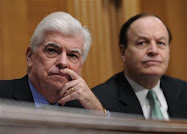











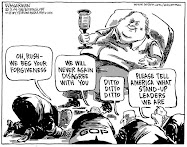












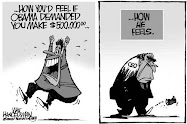





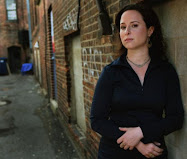

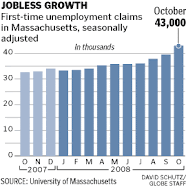


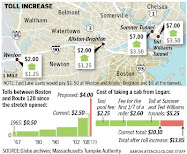







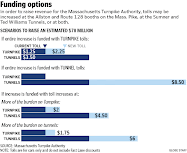



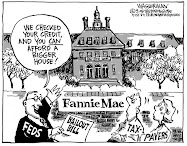



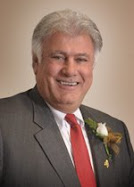










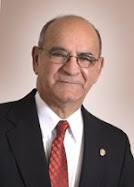



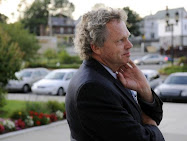



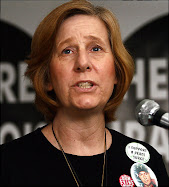



































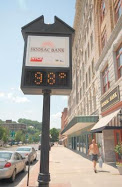















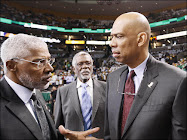






.png)

